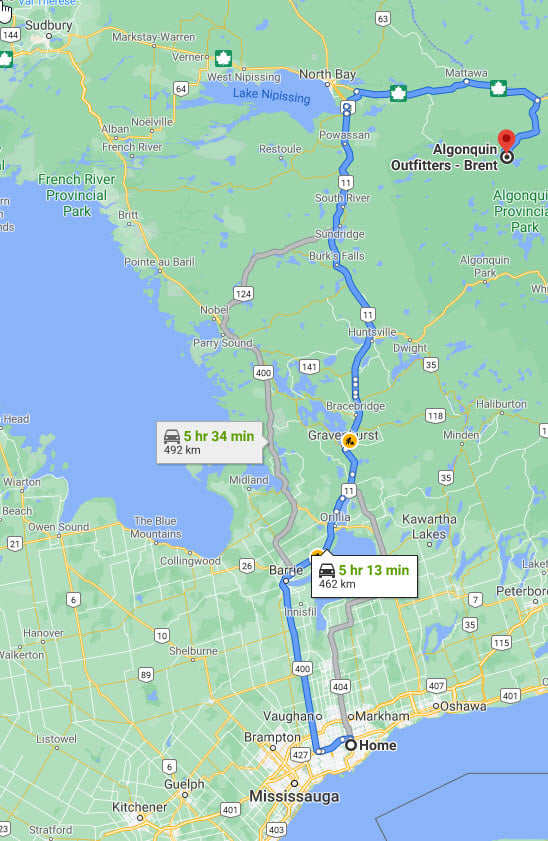
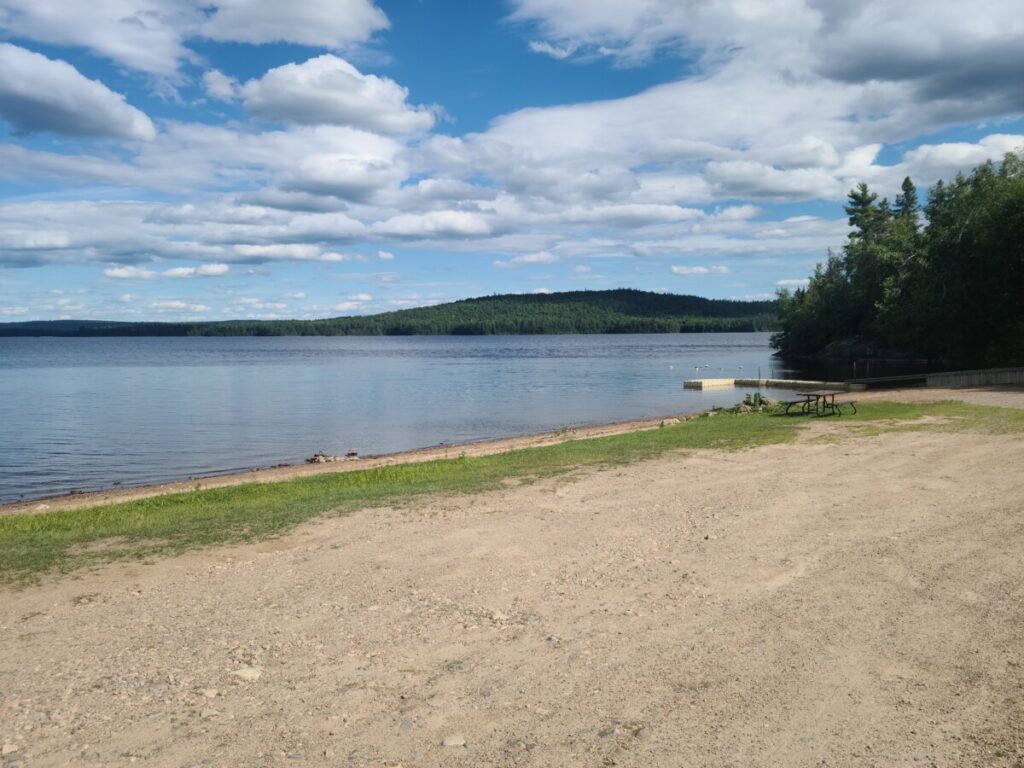
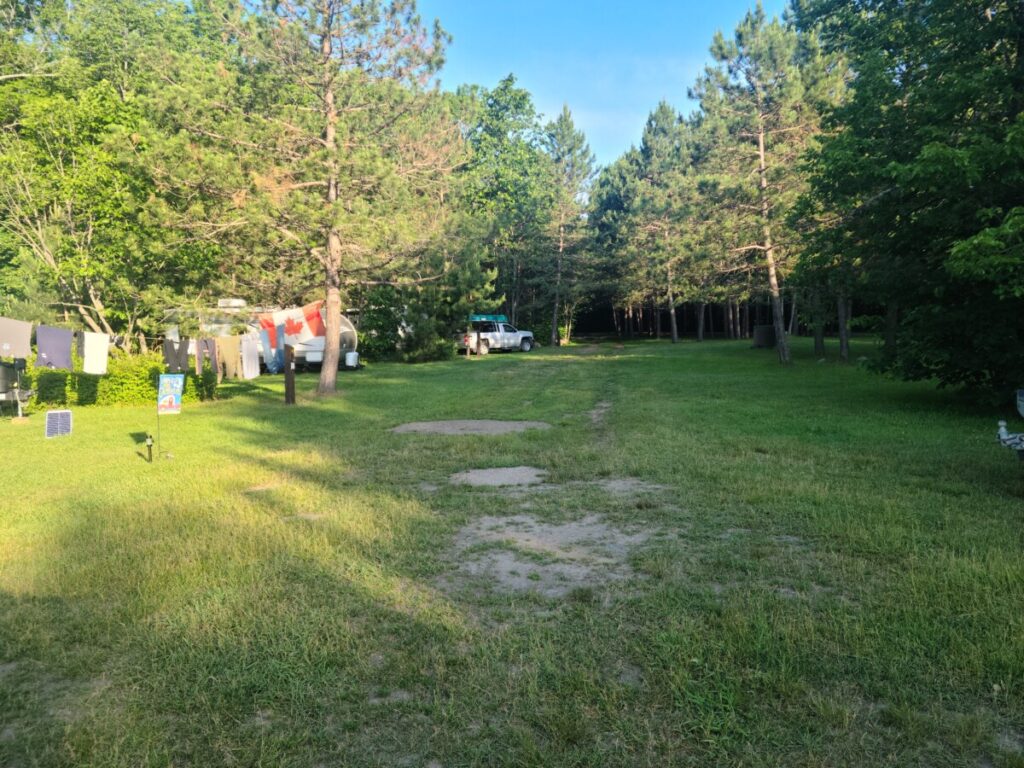
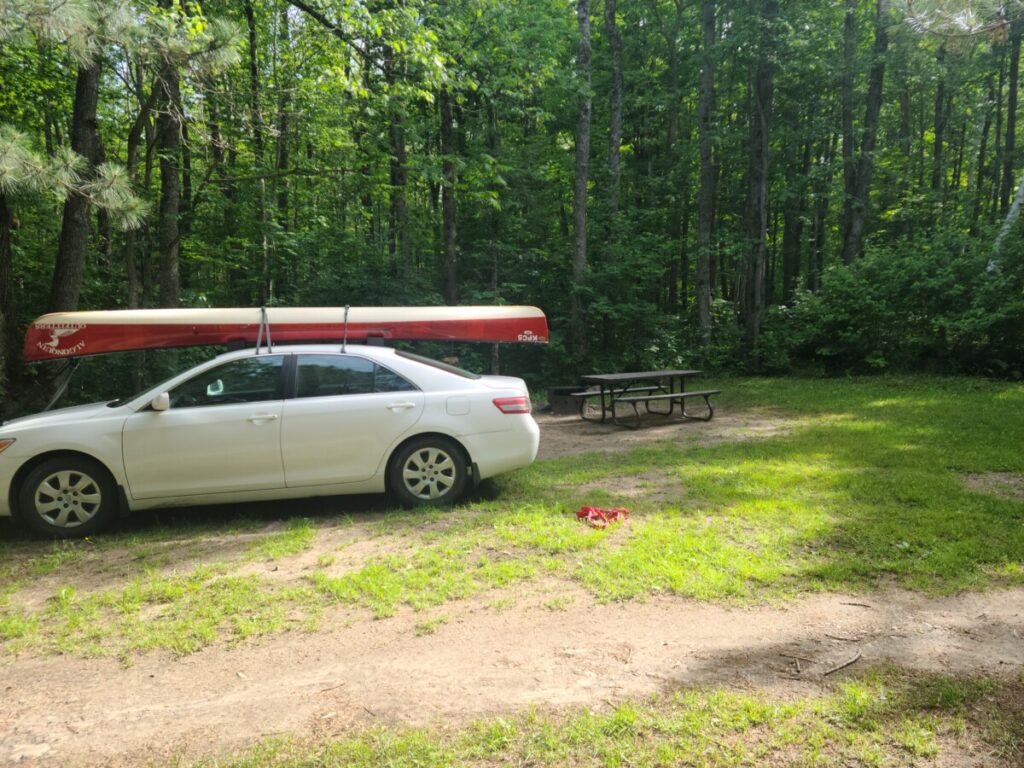
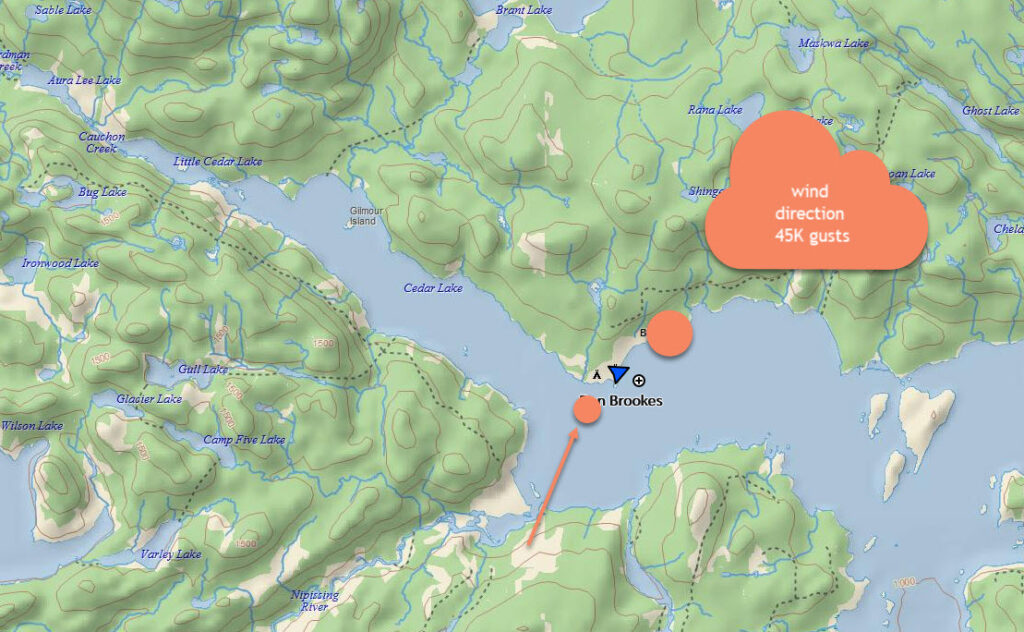
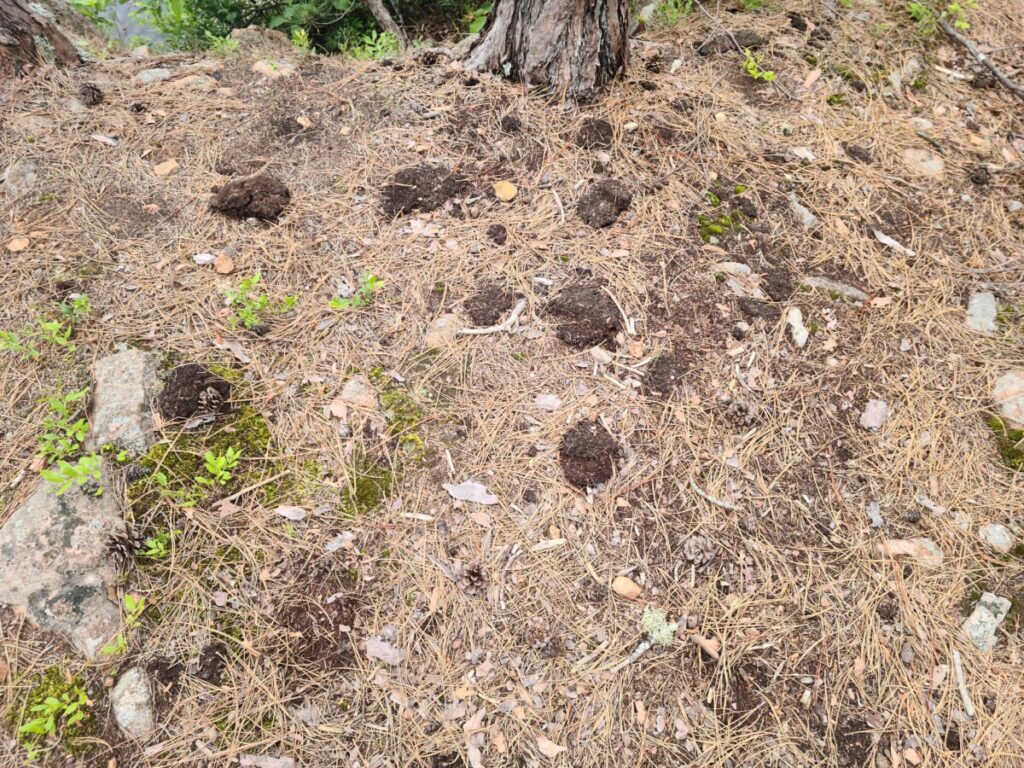
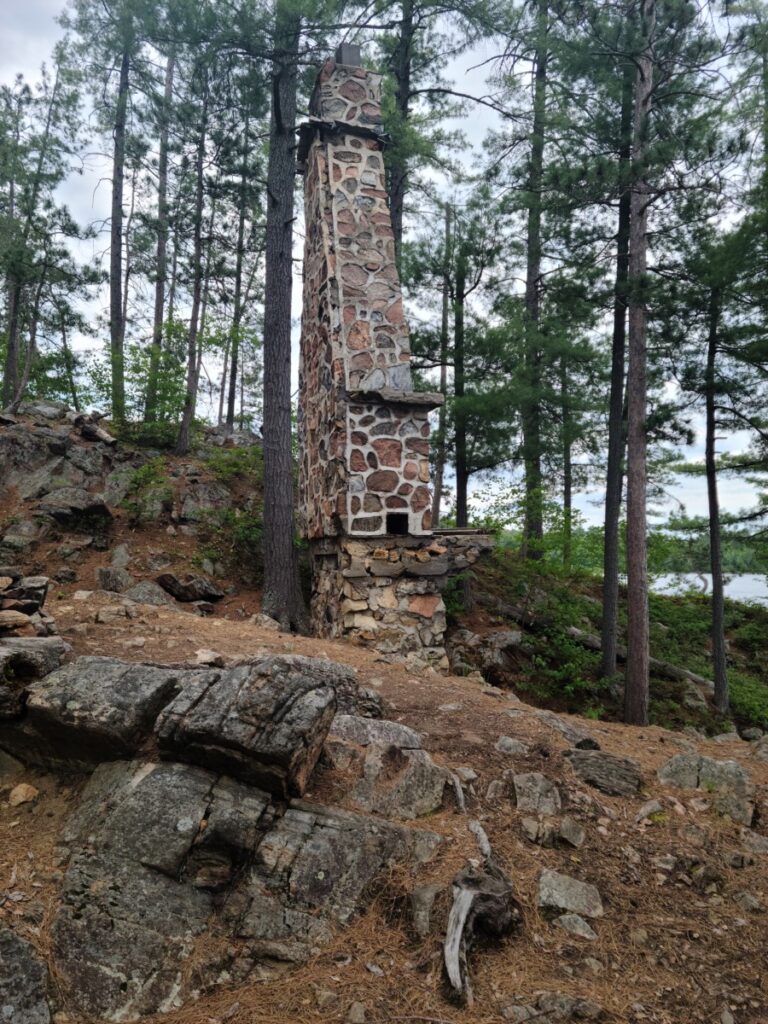
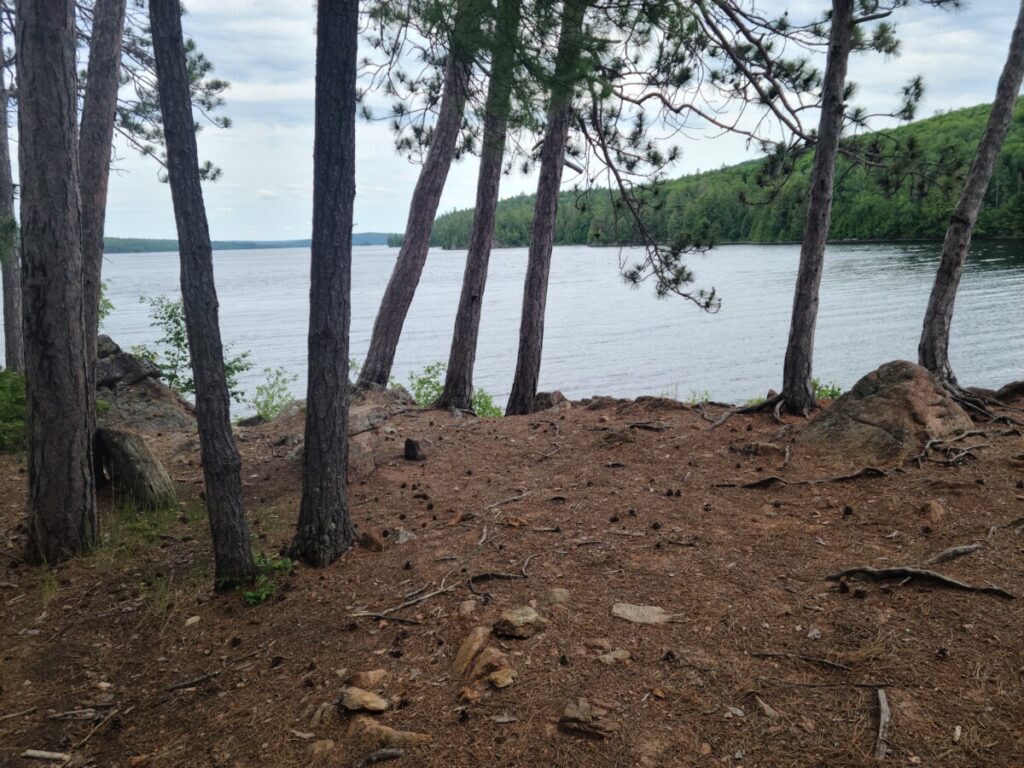
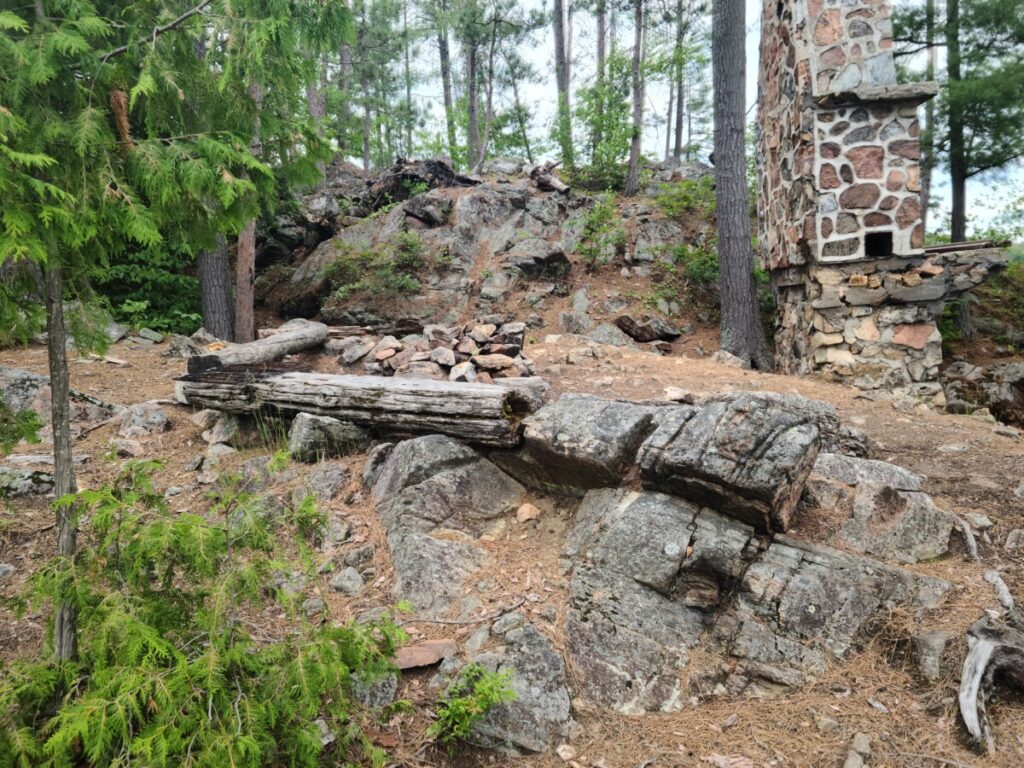
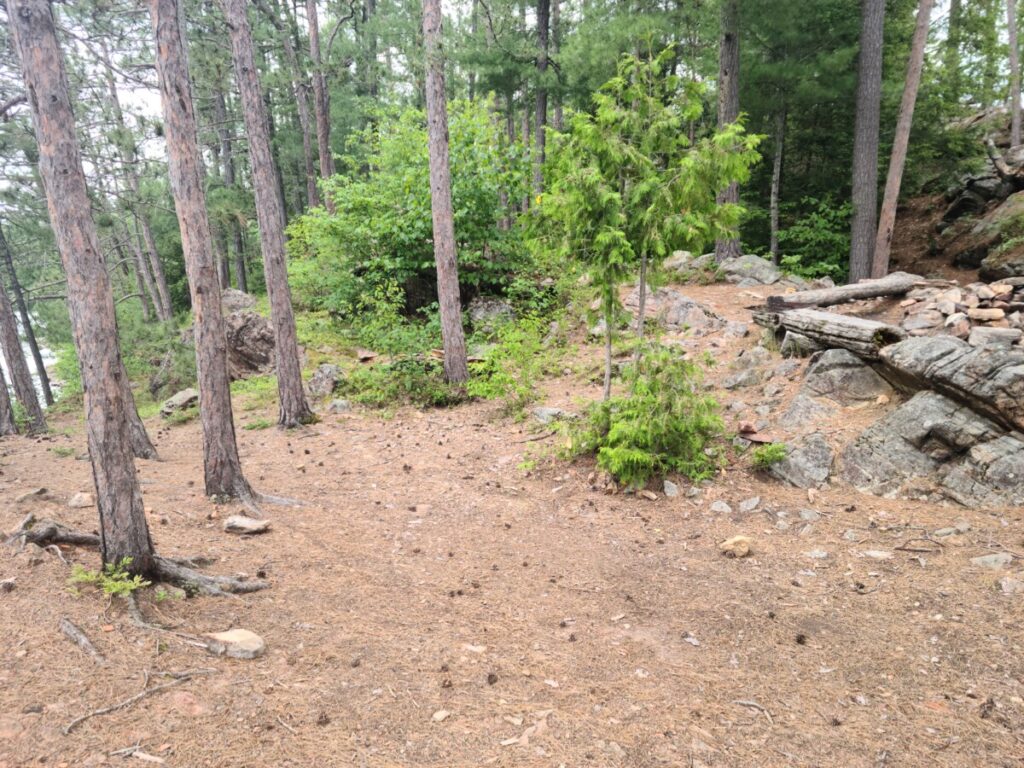

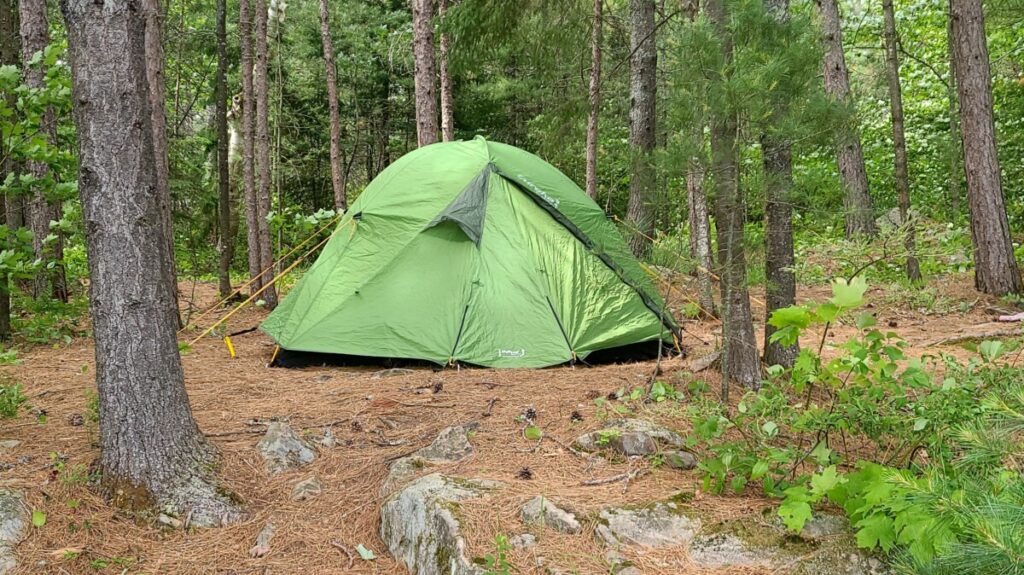
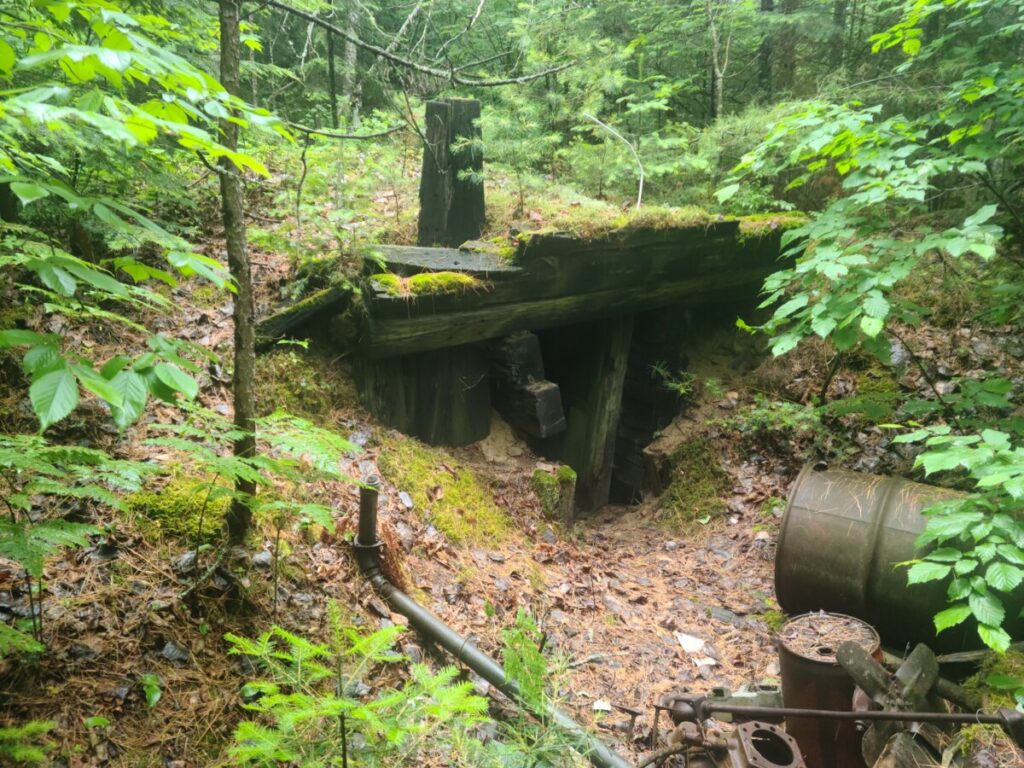

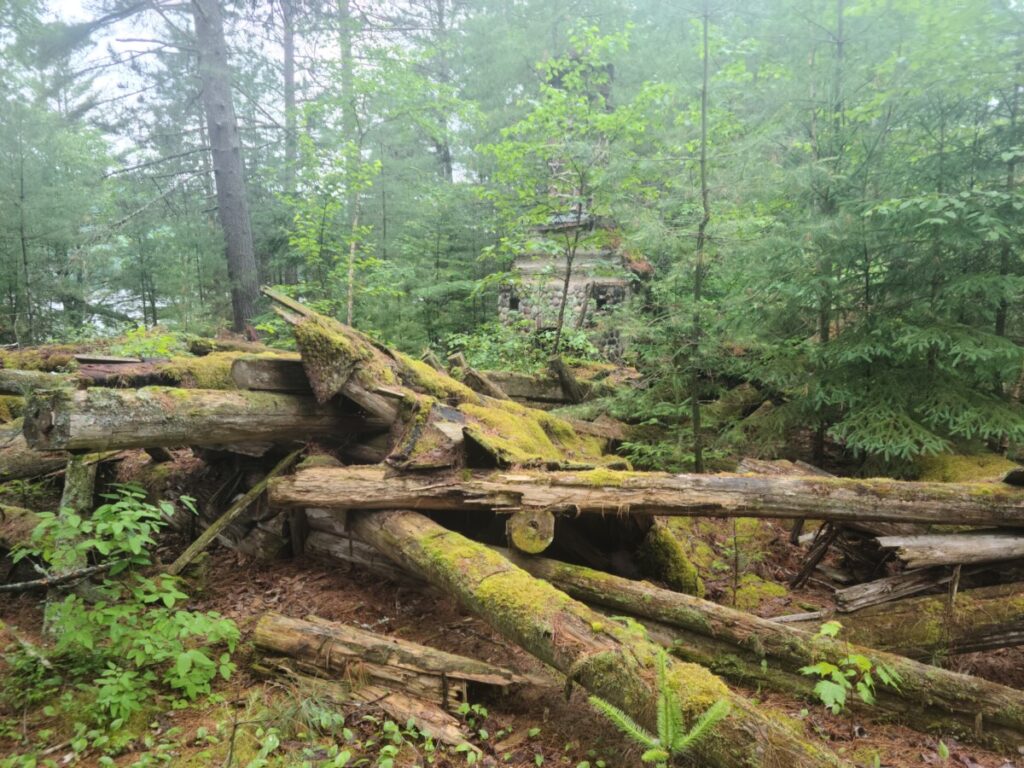
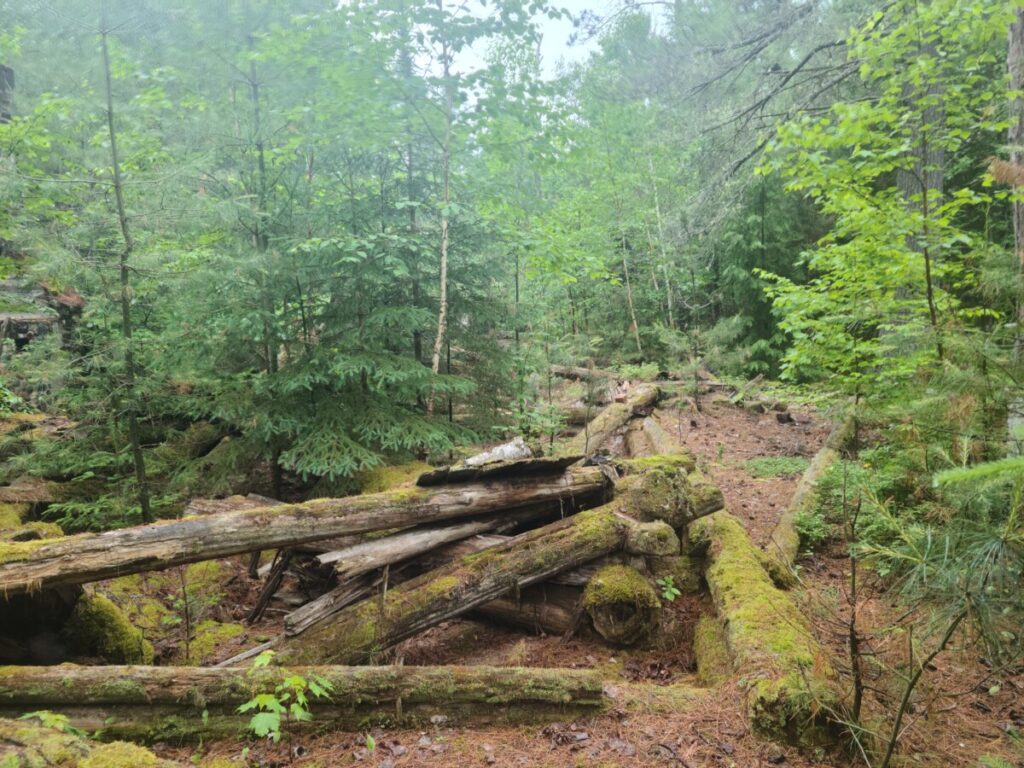
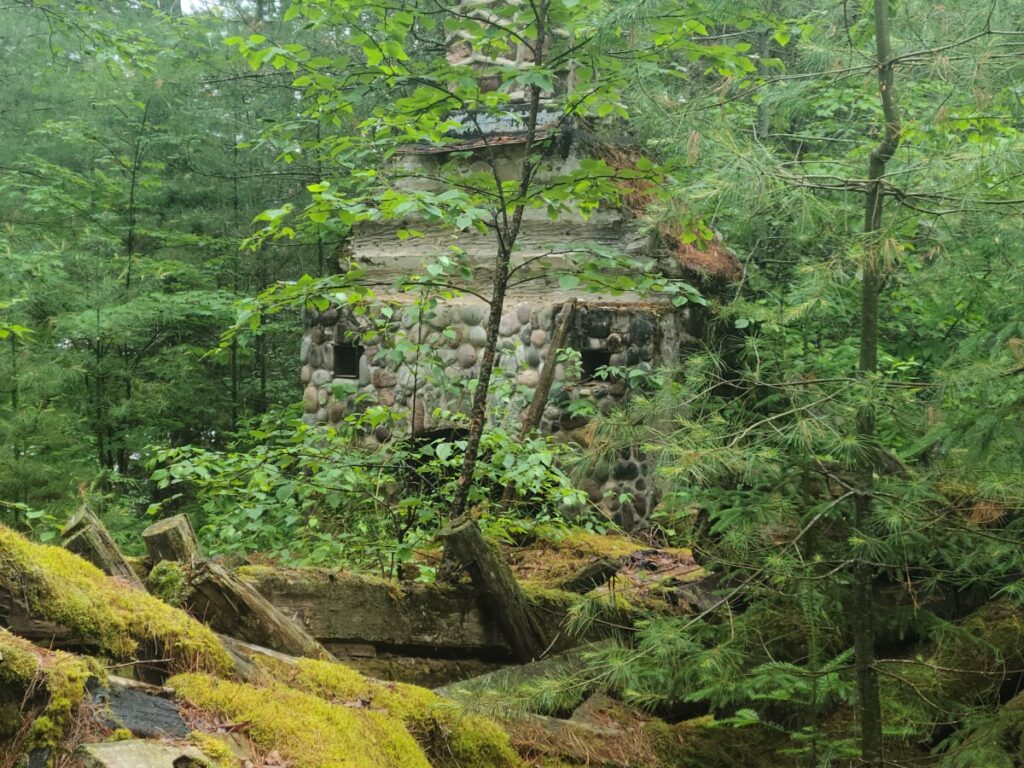
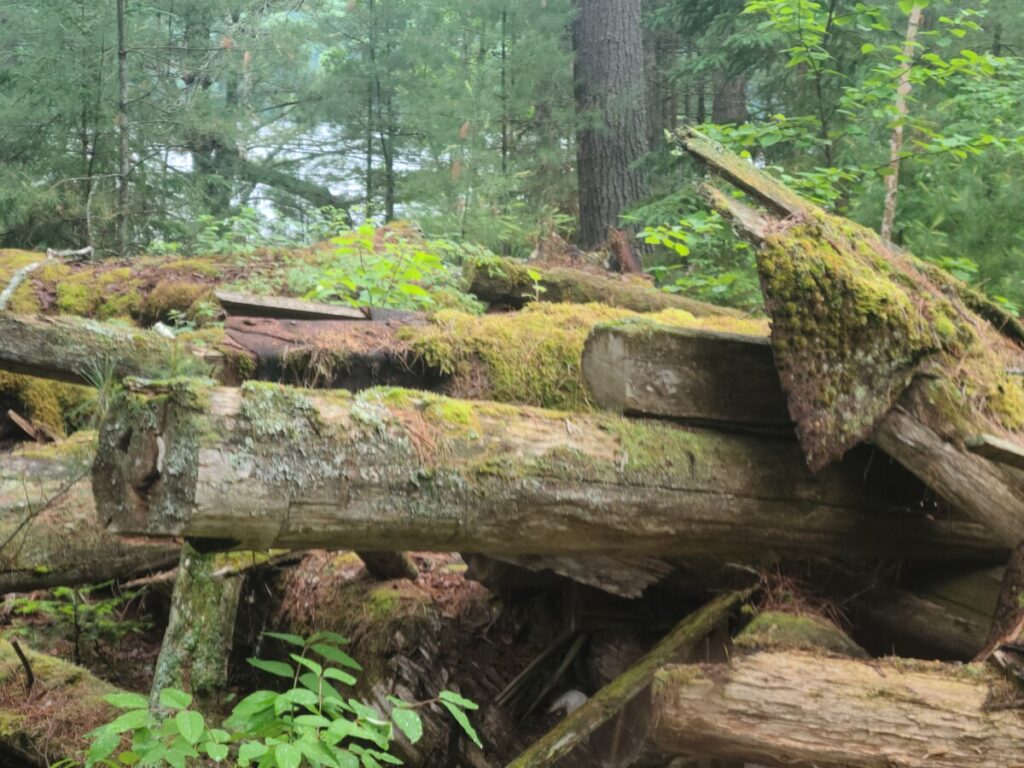
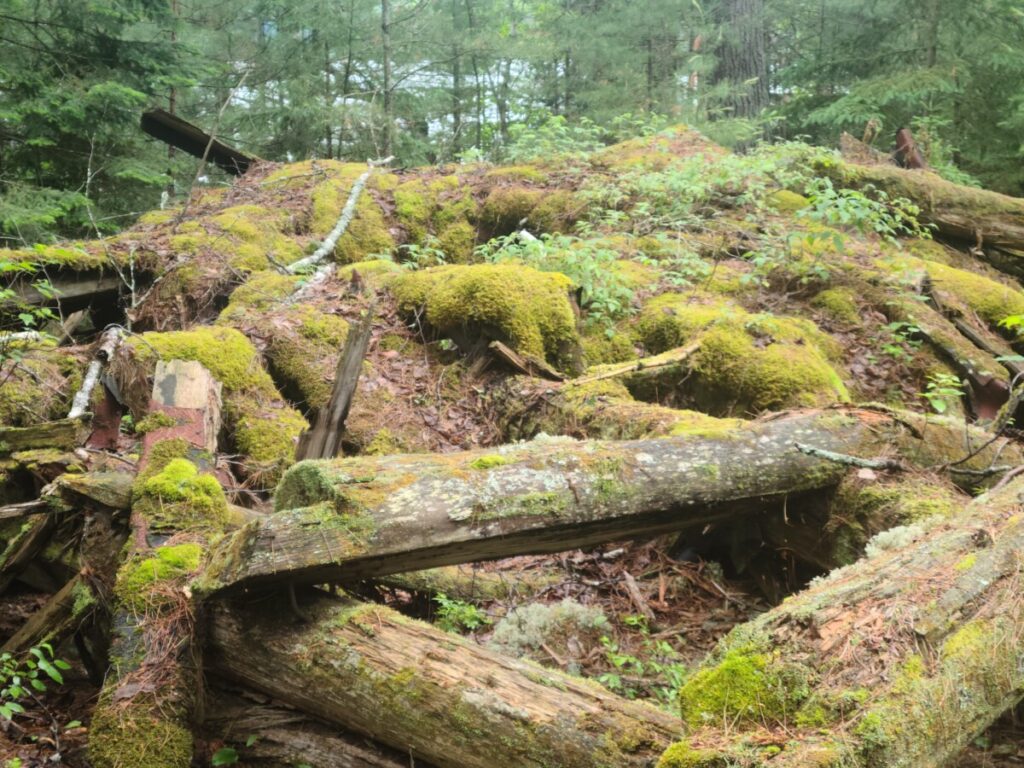
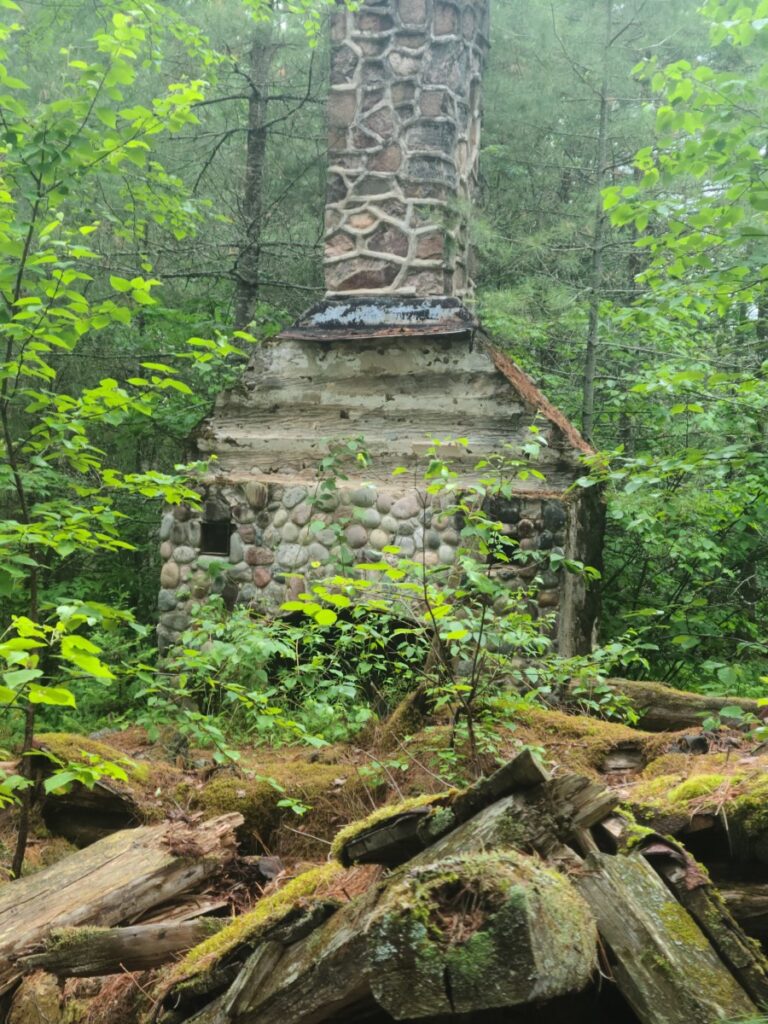
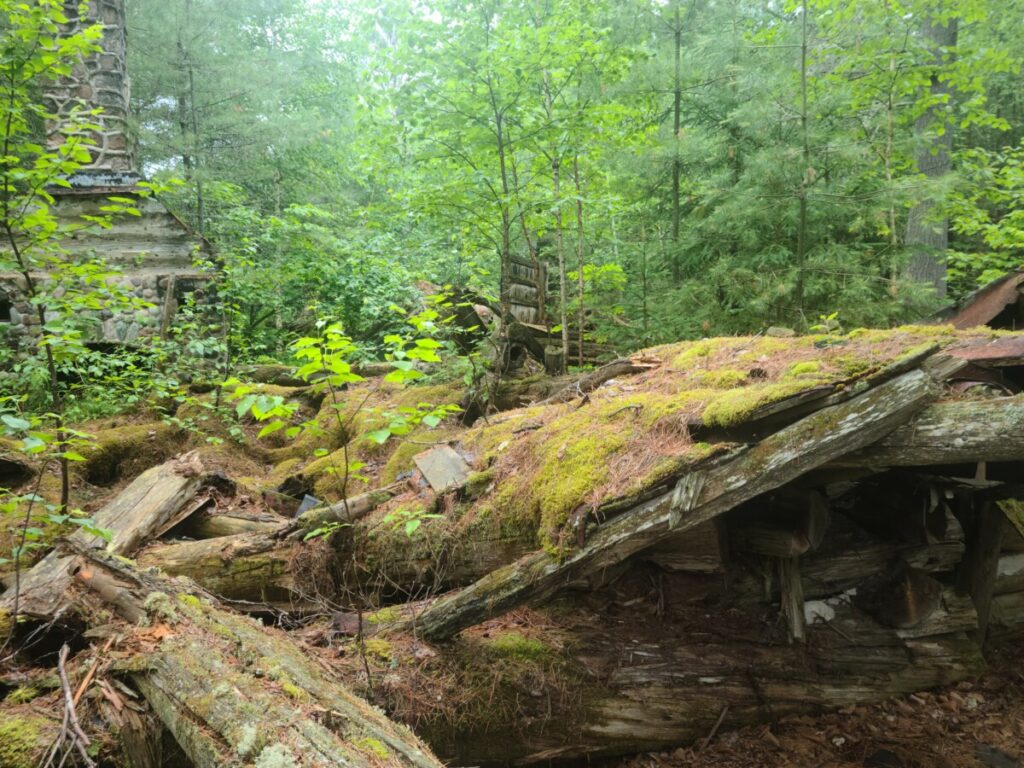
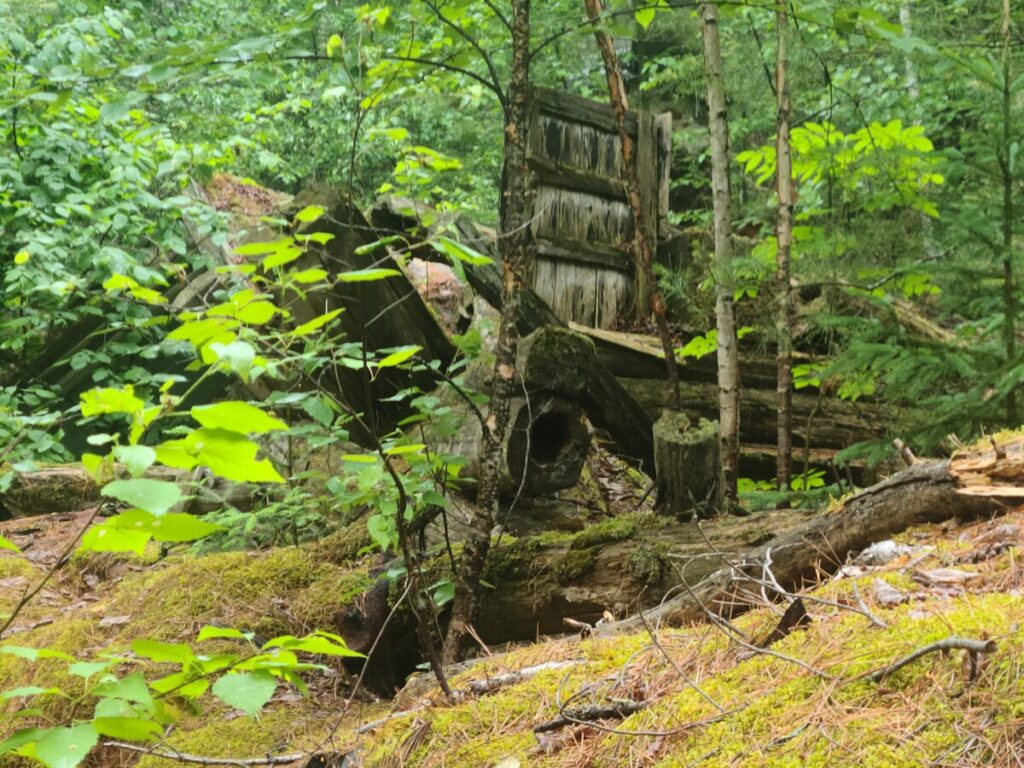
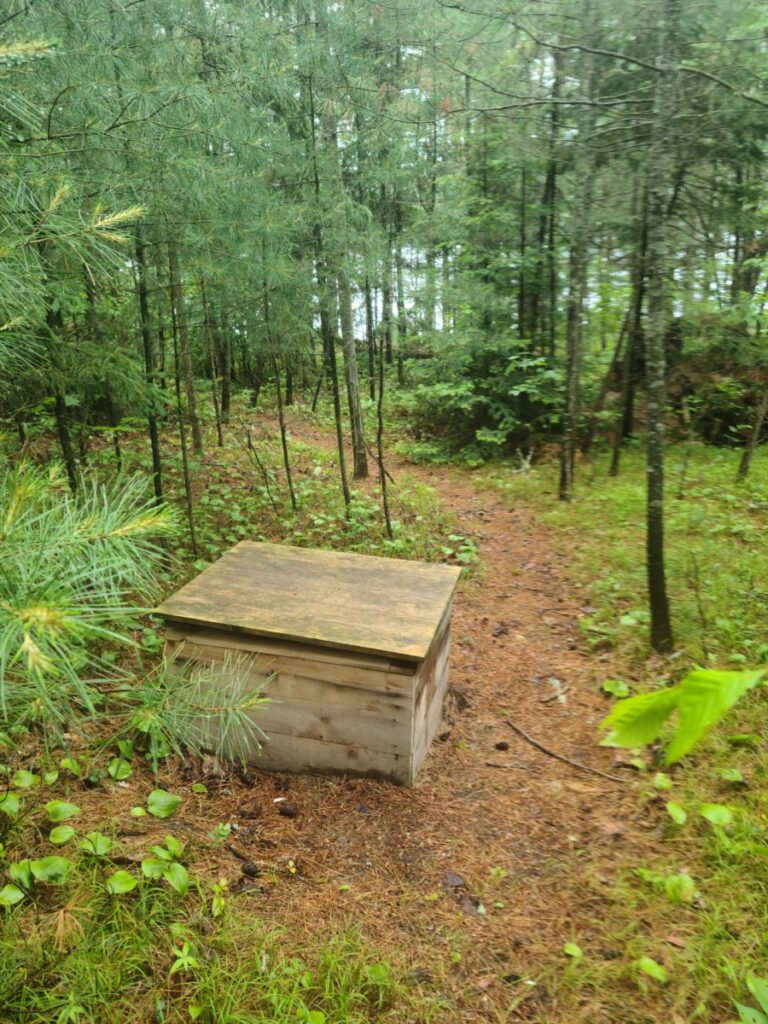
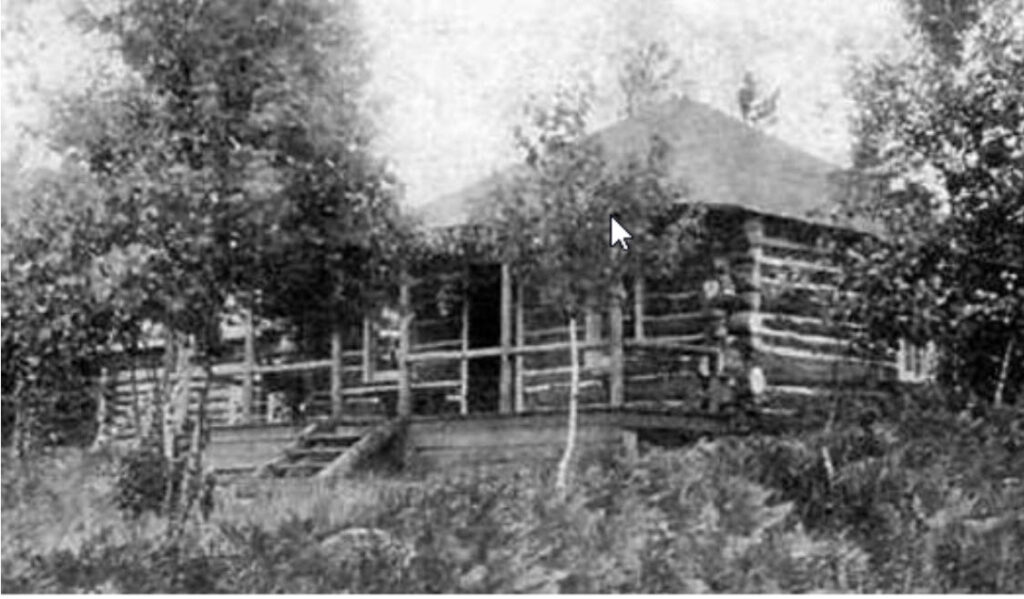
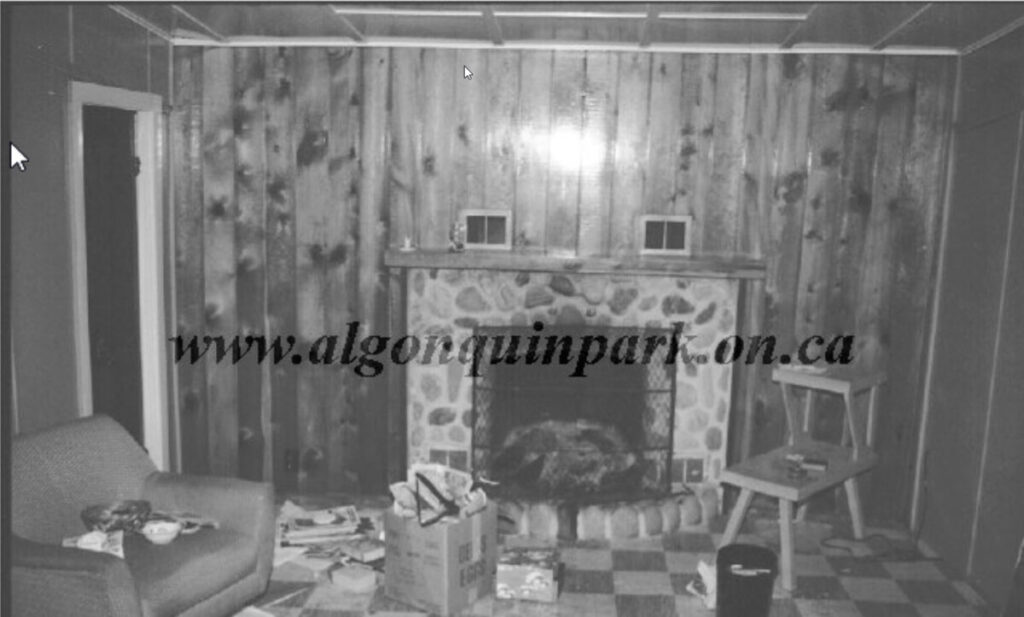
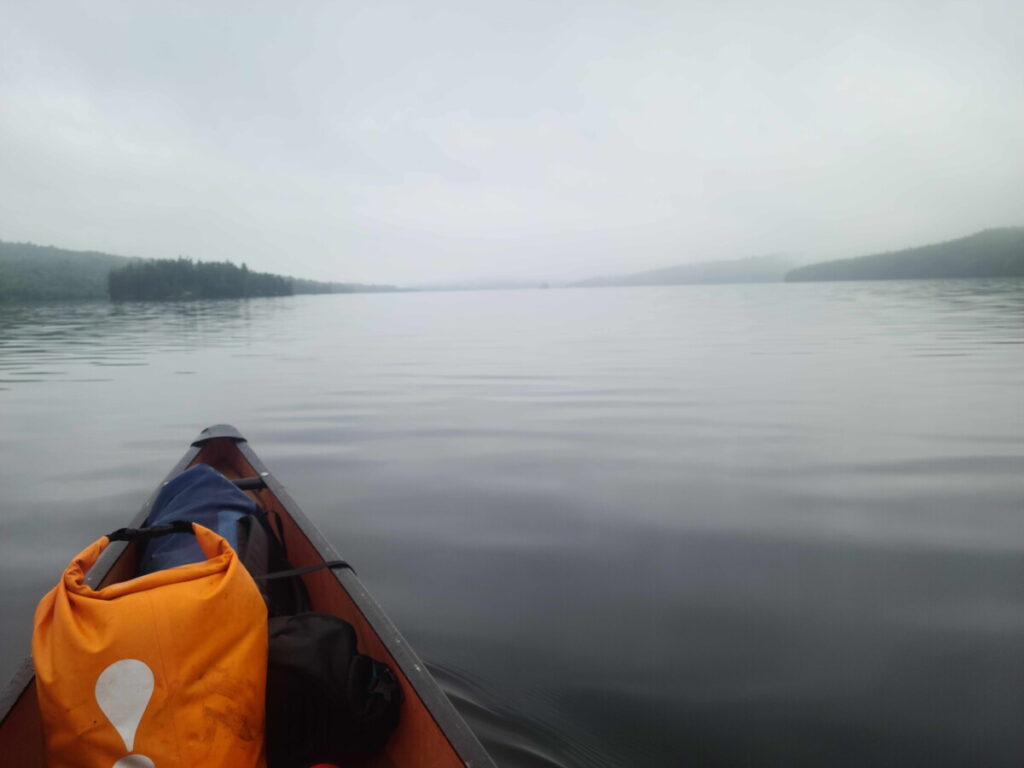
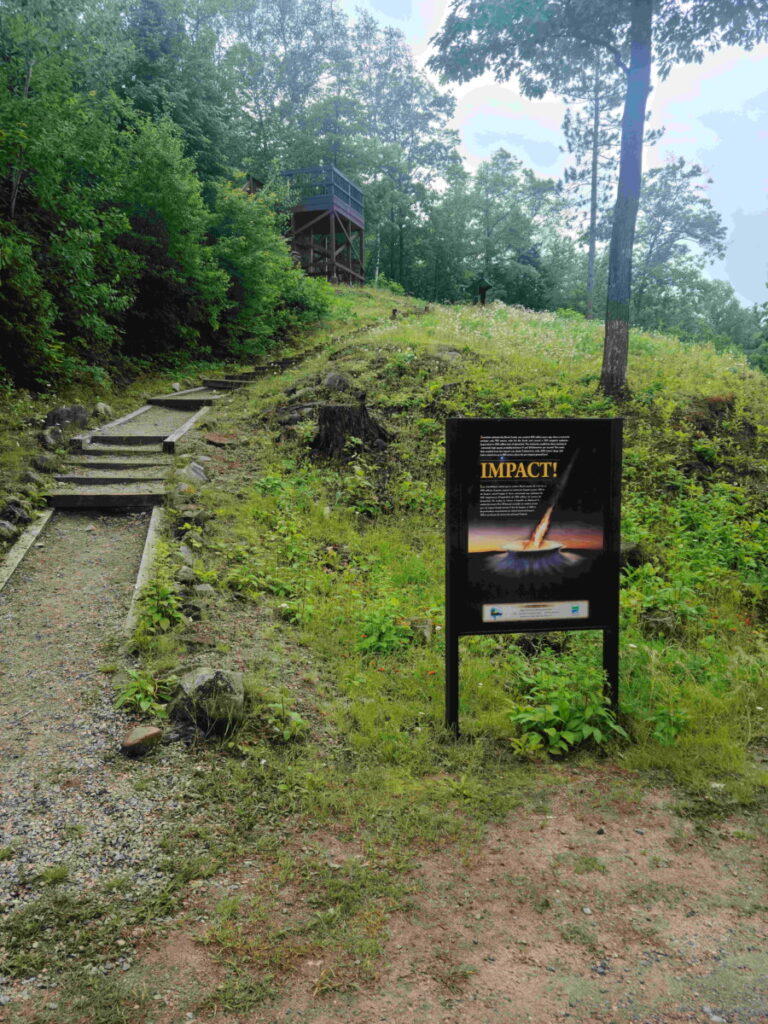
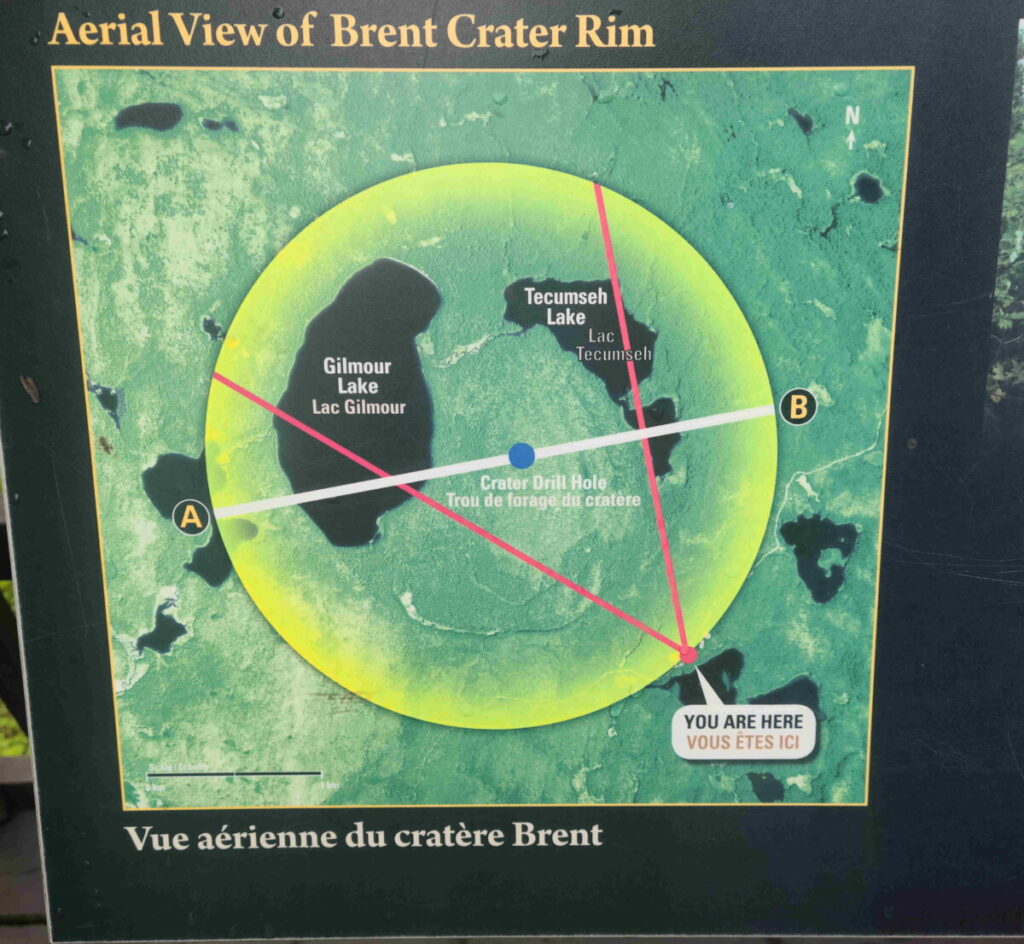

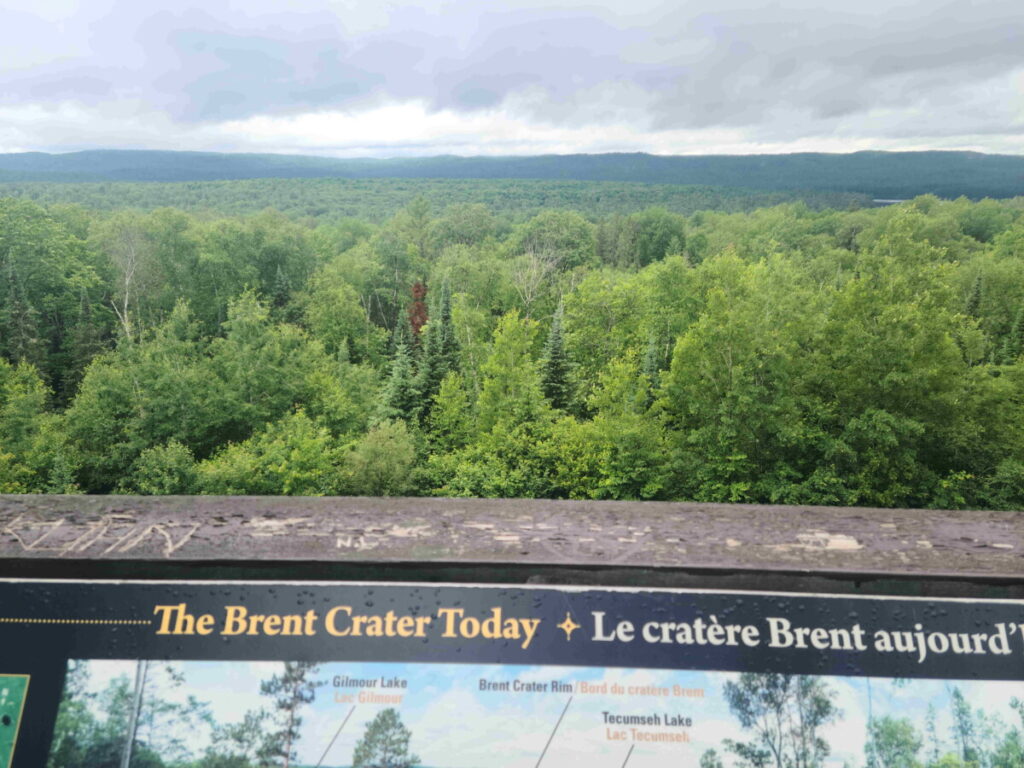
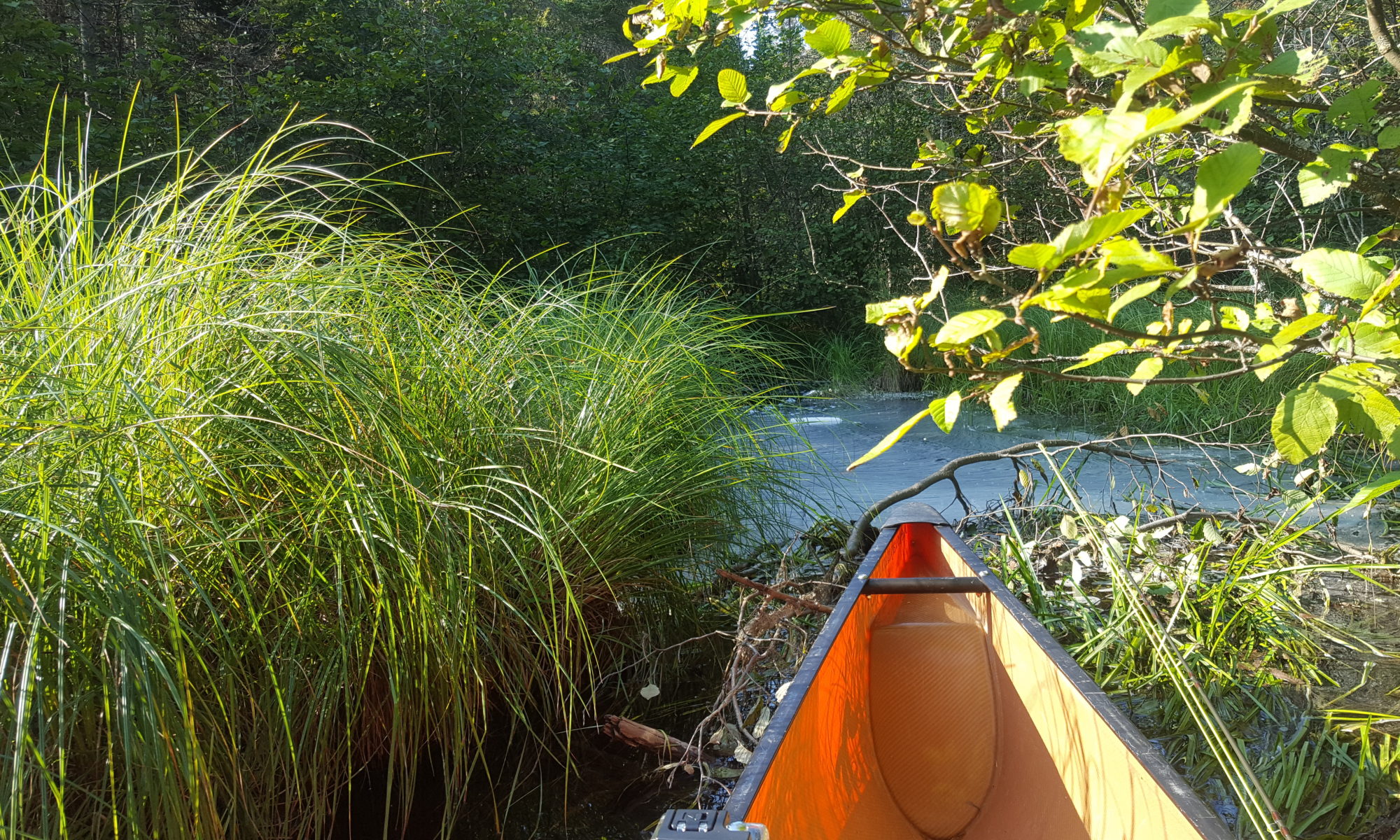
Back-country journeys, travels through a mind and other explorations






























Could be
The BIG BANG
Was nothing more
Than a cosmic pimple,
On the fifth dimensioned
Skin of another universe,
That burst.
A cosmetic eruption
Making us its Zitizens,
Was it God who squeezed it?
Does it matter
that we didn’t know you?
your name eroded,
now ghost letters left
above this graveyard plot,
not remarked by history,
not joined to great events.
But your missing presence in the past,
even just your might have been
walking on this grass,
would by your absence
leave in us tiny empty cracks,
something lost,
imperceptibly diminishing us,
your infinitesimal trace
removed from who we are
Time gives us pictures:
past heroes, nobles and devils,
those we love
and those we hate,
The famous standing out
on temporal painting’s canvas,
We are its fabric,
we, its warped and wefted threads,
a stretched taught plane of plainness
upon which epic daubings stand,
without you there and then
however unremarkable
our own story would be fractured
us, this canvas, torn.
Even while looking upon your place,
our standing present here
drips its instant droplets
of this now becoming then,
moments falling from our lives
absorbed to yours before
our dreaded destined end.
We splash our colours
in hope to leave
our memorable shapes and signs.
Until our story stops its flow,
we add our likely unknown tale,
our own brief and humble history,
to blend with yours forever,
becoming this and all the ground around
of all we’ve been together.
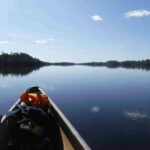
There’s a folded edge ahead,
a crease in the universe
where the sky hinges back
white puffed blue
on still water’s
reflected space.
Paddle dips glide
afloat, aloft,
pushing white clouds,
magically on my way,
suspended
between up and down,
in my own
ever Never Never land.
It’s 12:30 pm. I pull into the Swift Canoe and Kayak store in South River, Ontario where I will pick up a 15 foot solo pack canoe. This trip I am renting a Keewaydin Pack 15 instead of the shorter and slightly lighter Adirondack Pack 13.6 I’ve used before. I hear that the lake I ‘ll be canoeing can get rough and I want my canoe pack to settle down into the canoe to avoid windage, hence the slightly larger canoe choice. I am heading for the put in at Wicksteed Lake, past North Bay on Highway 11, planning to paddle Wicksteed to its eastern end and then take Mackenzie Creek to Mackenzie Lake, staying there three nights and exploring creeks that run out of the lake.
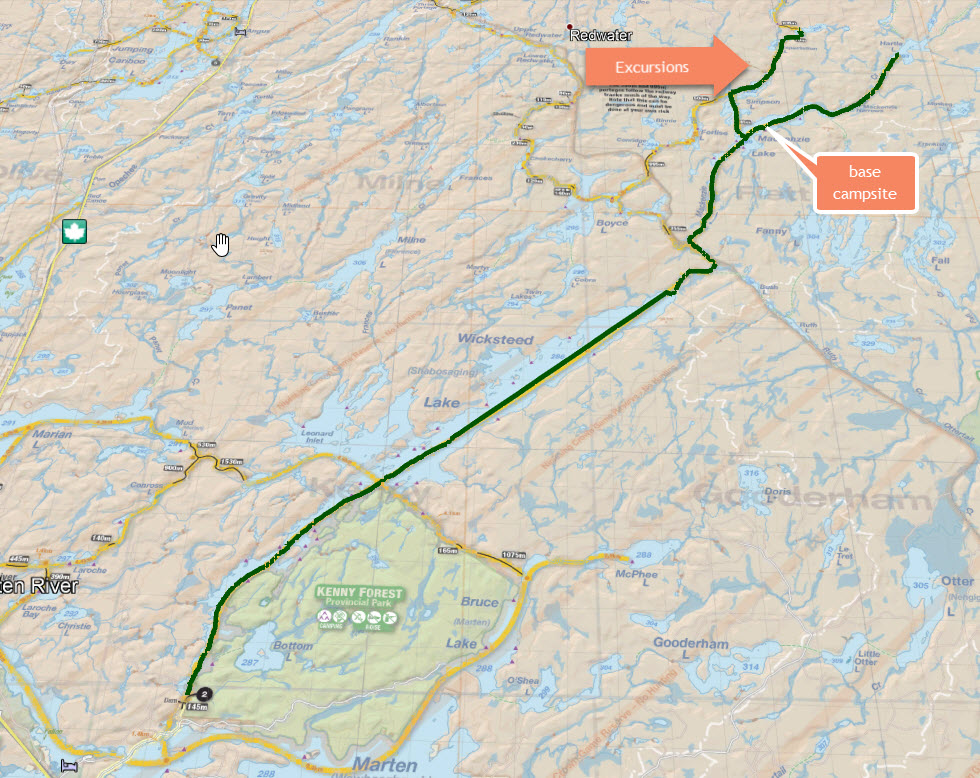
Forty five minutes later, the canoe is secured to the top of my car, and after a short stop at the next door liquor store to get a mickey of dark rum for chilly evening sips, I’m on my way again. After one hundred and twenty kilometers and an hour and a half I arrive at the access point at the end of a narrow road through the forest, which at first I miss, driving past its unmarked entrance on the main Marten River Road. I see that it’s popular for fishing, by the pickup trucks with empty boat trailers parked near the water.
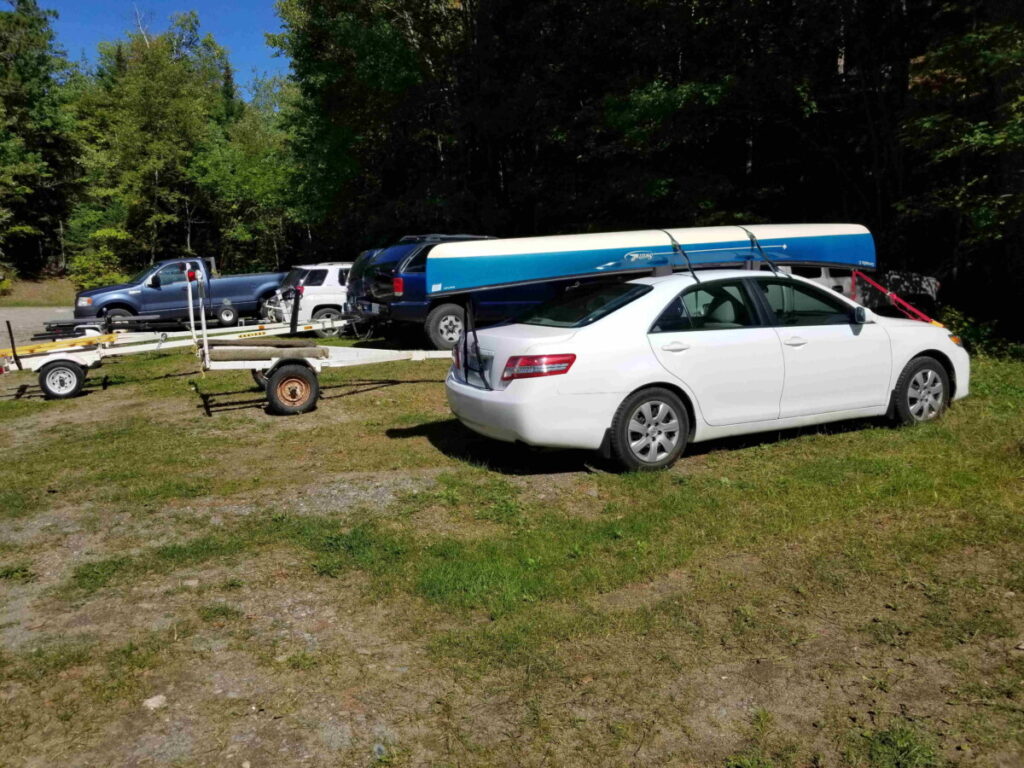
By 3:00 pm I am on the water paddling against a light breeze under a mostly cloudy sky. I am later than I planned and will not get as far up Wicksteed Lake today as I had hoped.
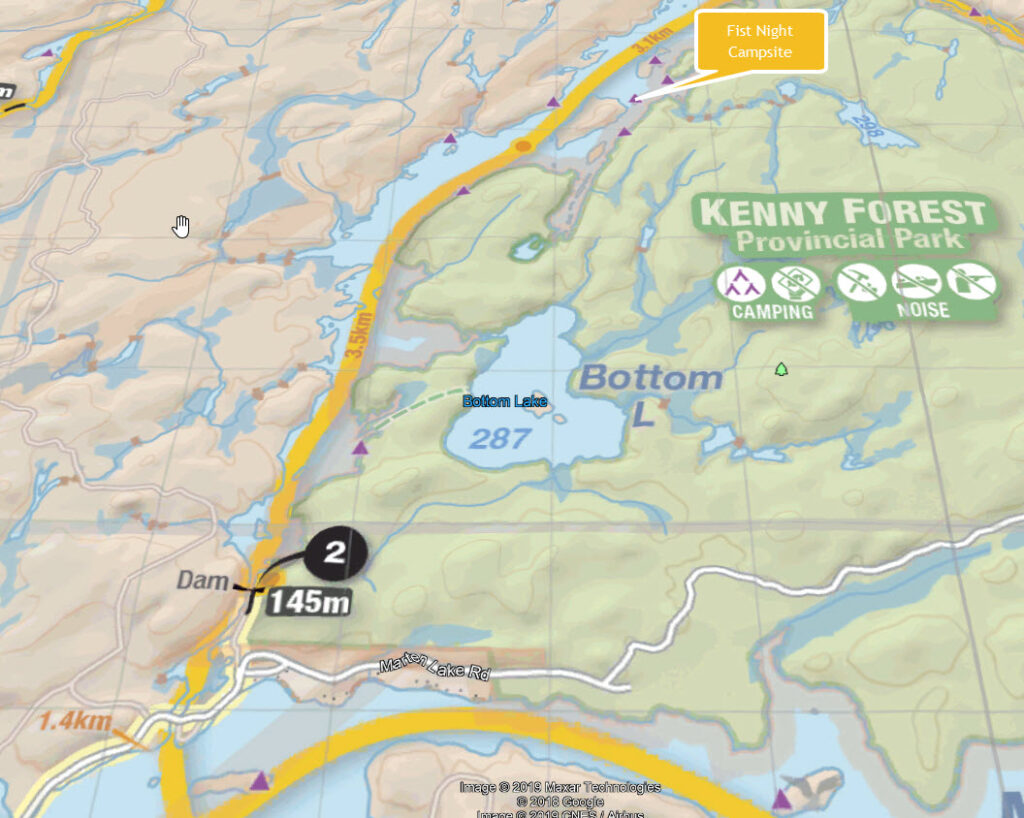
The campsite I pick is on a small island that rises steeply from the water on all sides with a good protected landing spot for the canoe. Maybe I should paddle on further, but decide I’ve had enough for today with the long drive to get to the lake from Toronto. I’m looking forward to relaxing.
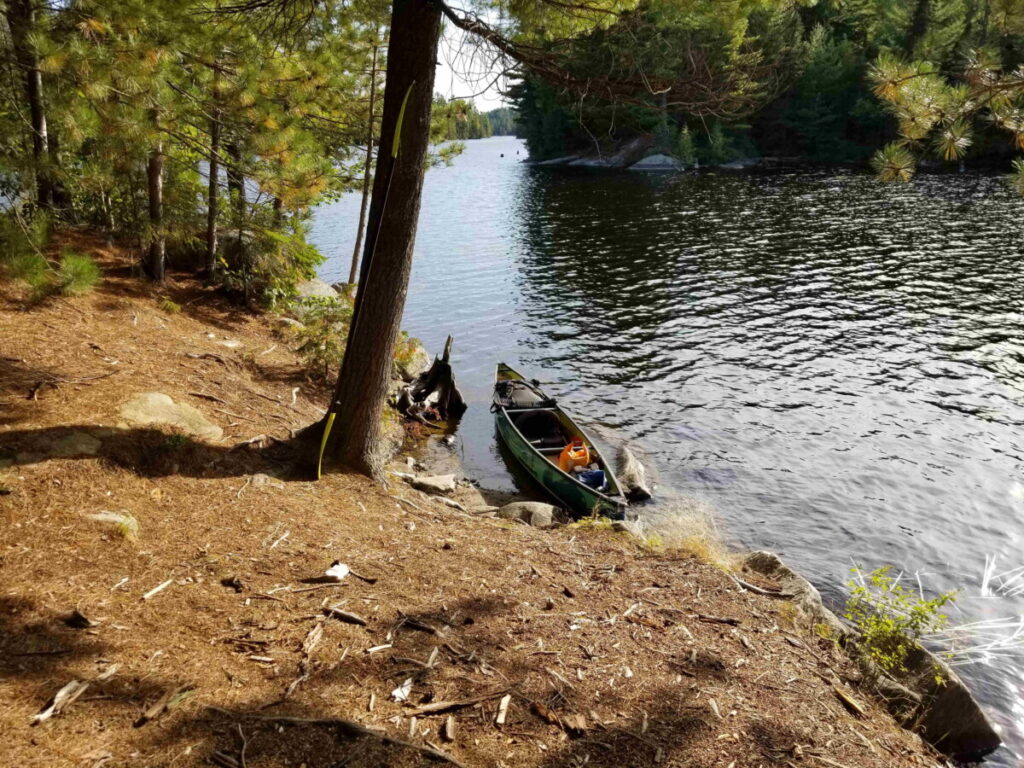
This campsite is obviously well used by people fishing, board tables put up between trees with telltale fish scales , a couple of collapsible camp chairs piled off to the side of the main site, three (why three?) roughly made thunder boxes. I have mixed feelings about the extent of human modifications, convenient but more intrusive to the natural setting than I am accustomed to, canoeing in Algonquin Park. I inspect the thunder boxes and discover why there are three and probably more to come. They are not boxes set over a deep hole, but boxes just set on the ground with old toilet seats, two of which are disgustingly full. The third is only marginally better. I learn from this to appreciate the care taken in Algonquin Park in maintaining and using campsites by most people. It’s not that the site is terrible, far from it; just that it shows some carelessness and laziness of the people using it.
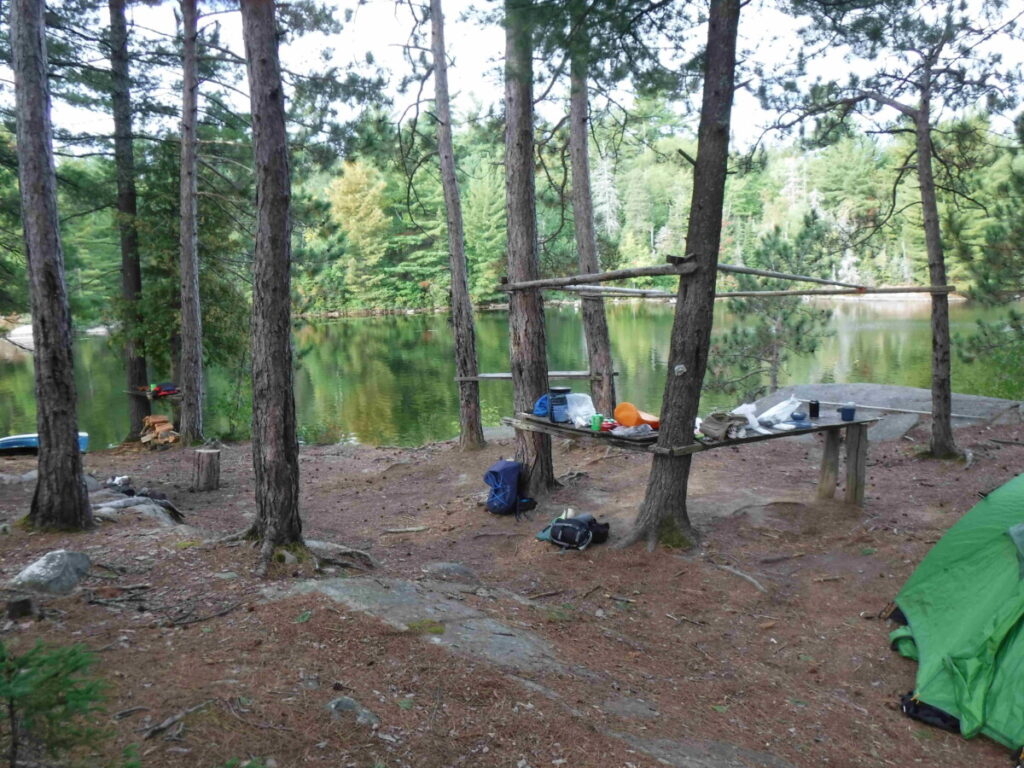
Leaving these critical thoughts aside there is much to enjoy, my mind returning again to the peace and relief I seek and find in the backcountry. I set about the sequence of well known small tasks to settle in, putting up the tarp, stringing my new hammock, putting up the tent, getting everything ready to cook dinner later…all while marveling once again at my surroundings, grateful to be here.
The weather forecast for tomorrow is not great: rain arriving early afternoon. I doubt that I will be able to make it to McKenzie Lake, but after dinner some wine reclining in the hammock I get ready to read a bit and sleep as the dusk turns to darkness, optimistic nonetheless. I need to charge my smart phone which is also my GPS and interface link to my InReach. The smart phone interface is not strictly necessary but nice, making emails easier to send and receive and weather forecasts I download easier to read. There is never any cell coverage where I go on these trips. The InReach is my life line traveling alone.
Time passes searching until I admit to myself that I do not have the charging cable to boost the Smartphone from my power bank. Guess who didn’t bother to get a paper map, even though he knew about how important it is to have more than electronics. I have a compass, no map and a Smartphone that will not last the next 5 days. My InReach will be OK because its uses a micro USB, which I have, unlike the Galaxy S8 which uses a USB-C. I could use the InReach alone and would if there was no alternative. There is a USB-C cable in my car. There’s no choice in my mind – I will get up early, break camp, pack, paddle back to the car, get the cable and make my way as far along the lake as I can. “Stupid is as stupid does”. I figure it will cost me about 3 hours, less if I consider that I would have slept in otherwise.
By 11 am the next morning I have made the trip back to the car and am paddling east along the lake from about where I left off. The weather is good, overcast with a breeze at my back. I look behind me occasionally to see if any change is moving in from the west. At about 1 pm I see the clouds darkening behind me and a sprinkle of rain begins. I start to paddle hard and think about what campsites lie ahead. Within a half hour the weather is deteriorating quickly, the wind picking up and the rain beginning in earnest. I decide to make it to a campsite on a small island up and across to the north side of the lake, using my GPS to set direction. I’m on the south side of the lake and will cross on a diagonal to get there.
The wind and waves are up as I approach my target. The island is small, room for a one tent camp and that’s all, although it doesn’t look like anyone has ever camped there. I paddle to the leeward side to check it out. There doesn’t seem to be any landing spot. I check out the location again on my GPS – yep this is it. I circle the island and decide there is only one possible put in, on the lee side fortunately. Stepping out of the canoe I can see that this was once a good landing, but the bushes have overgrown the bank hiding its access, evidence that the site has not been used in a long time. The weather is getting worse, so this is where I am staying no matter what.
I carry up my canoe pack and other gear, then the canoe because there is no space to lay it safely except up near the campsite. I’m on an island about 25 meters x 10 meters, scrawny trees at both ends and along the north side, the south side exposed to the lake which is now rough and white capped. There is room for one tent, a table made between two trees and a short distance into some bushes a toilet seat indicating a thunder box . In all it’s good enough and a I start setting up camp knowing the bad weather will stay today and hopefully improve tomorrow. I put the hammock under the tarp so I will have a place to relax out of the rain besides using the tent – it’s going to be a wait. I expect strong winds and attach extra tie downs to the tent. I don’t think they are really necessary because the tent has been stable in winds before, but if I set them up anyway so I will have a sounder sleep free of worry.
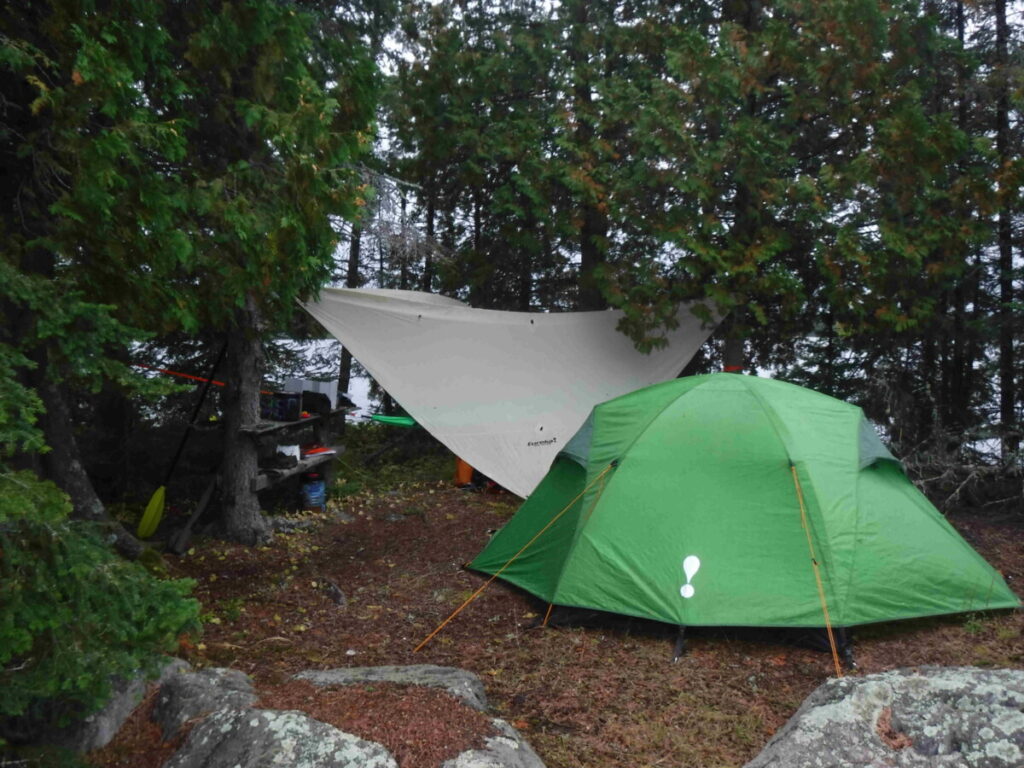

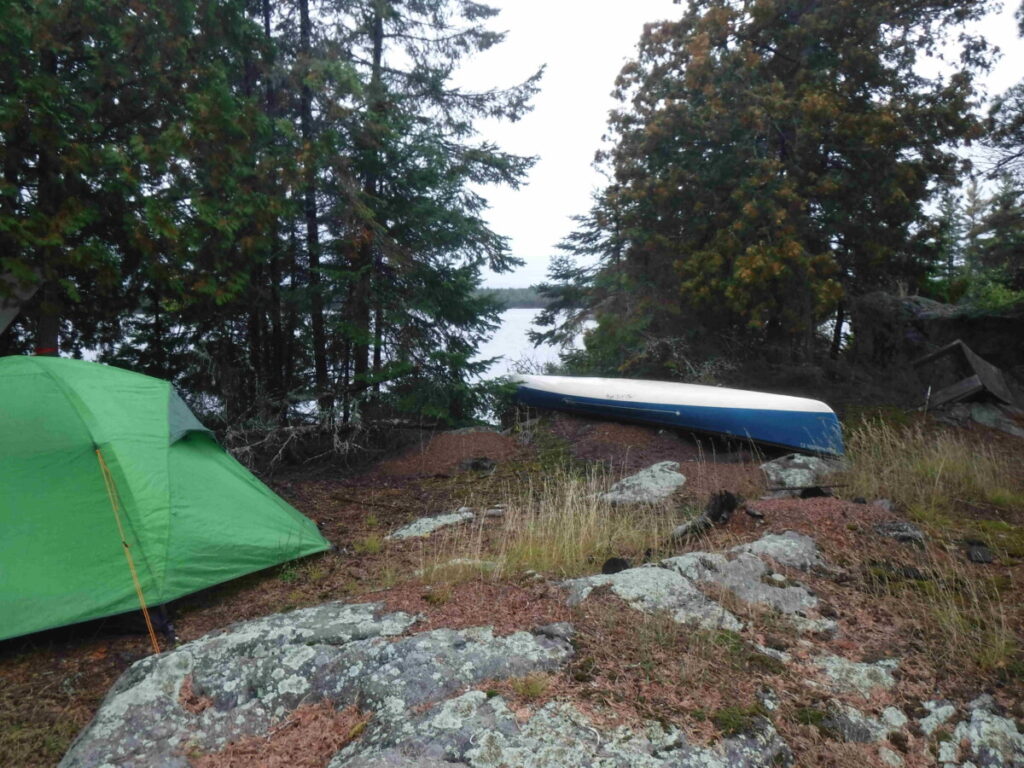
I wander around my little domain. There is a rough made table tumbled over and the remains of a fishing rod. A small tree has been cut down but not cut up. There are mounds of earth that turn out to be the construction detritus of subterranean ant colonies, luckily not the biting kind. I rename my spot Black Ant Island . Except for me, they have this place all to themselves. I lift the toilet seat of the thunder box to check and find the ants have completely filled whatever was there. The island is a bit desolate and the strong winds are now up, the driving rain and grey skies reinforcing the bleak feeling. Relief comes from reading a good book, stretched out in the hammock, sipping occasionally from a cup of wine nearby on the ground.
Later I make dinner, eat and get ready to settle in for the night, checking the latest weather report on the InReach – wind and rain forecast for all day tomorrow, clearing in the evening. Getting to Mackenzie Lake is going to be delayed and I wonder if I will make it there at all. As I fall asleep I hear the wind getting stronger brushing against the tent, but sleep soundly knowing that it is secured.
I crawl outside the tent after sleeping in, stand in light rain looking over the rough white capped water, knowing I will not risk traveling on this lake today reputed for sometimes becoming dangerously rough.
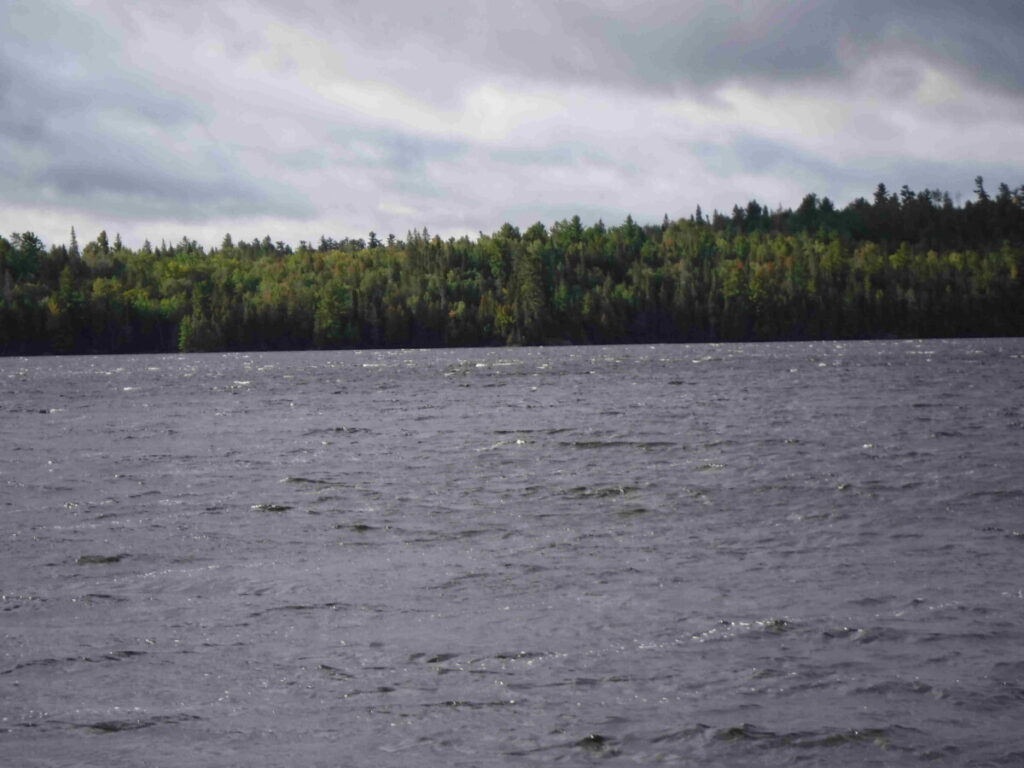
After breakfast, the day passes slowly, often standing to look out at the waves and sky hoping to see some sign of clearing weather. In the afternoon two small fishing motor boats appear, one person in each dressed in a bright coloured rain slicker. I guess they had set the day aside and were determined to catch something. After an hour they turned on their outboard motors and sped away down the lake toward the launch site I came from two days ago. No one else appears after that.
I made myself bust clearing the brush from the landing on the island to make it more apparent and easier to access coming and going. The rest of the day I spent napping and reading, returning to the water edge now and then to gaze up and down the lake, later making lunch and eventually dinner.
Late afternoon the first sign of clearing comes as the sun peeks through and the wind dies down. I go to bed that night hoping that it will be a better day tomorrow. Otherwise I will have to decide if I should cut the trip short.
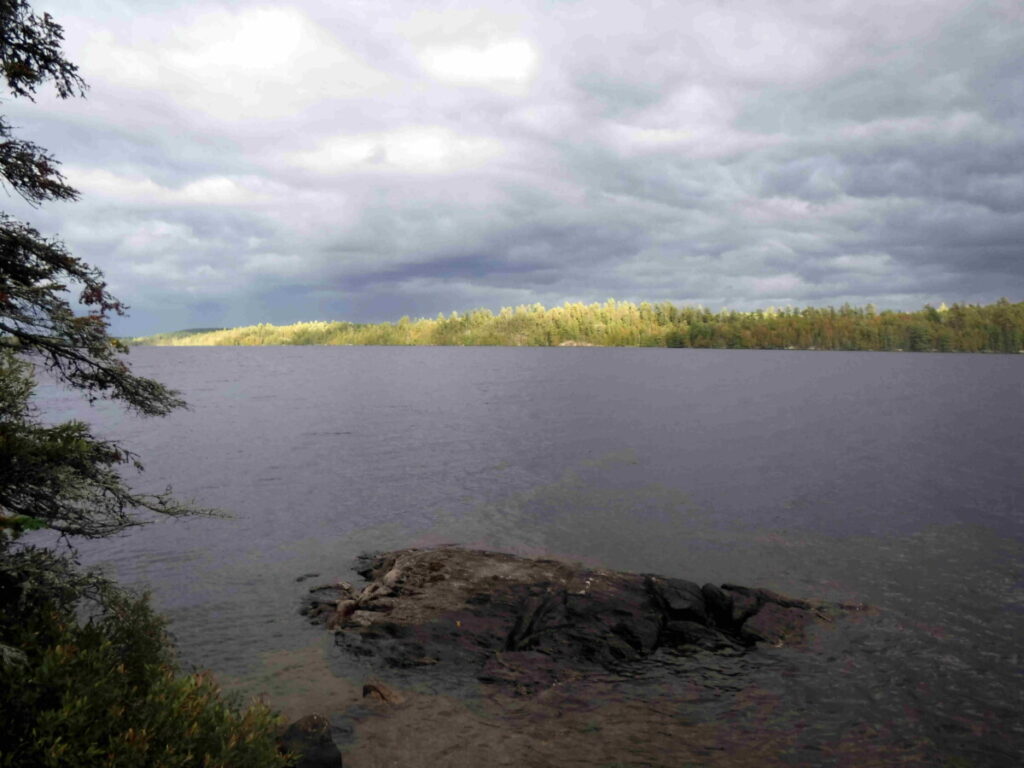
I wake late and get up to look at the lake. It is calm and the sky is clear, meaning it’s time to hustle – make breakfast and strike the camp. I am going to head for Lake McKenzie even if I can only stay there one night, happy again to be heading toward my original target. There won’t be time to explore as I planned once I get there but it feels good to be on the move again. I am loaded and ready to go about 11 am.
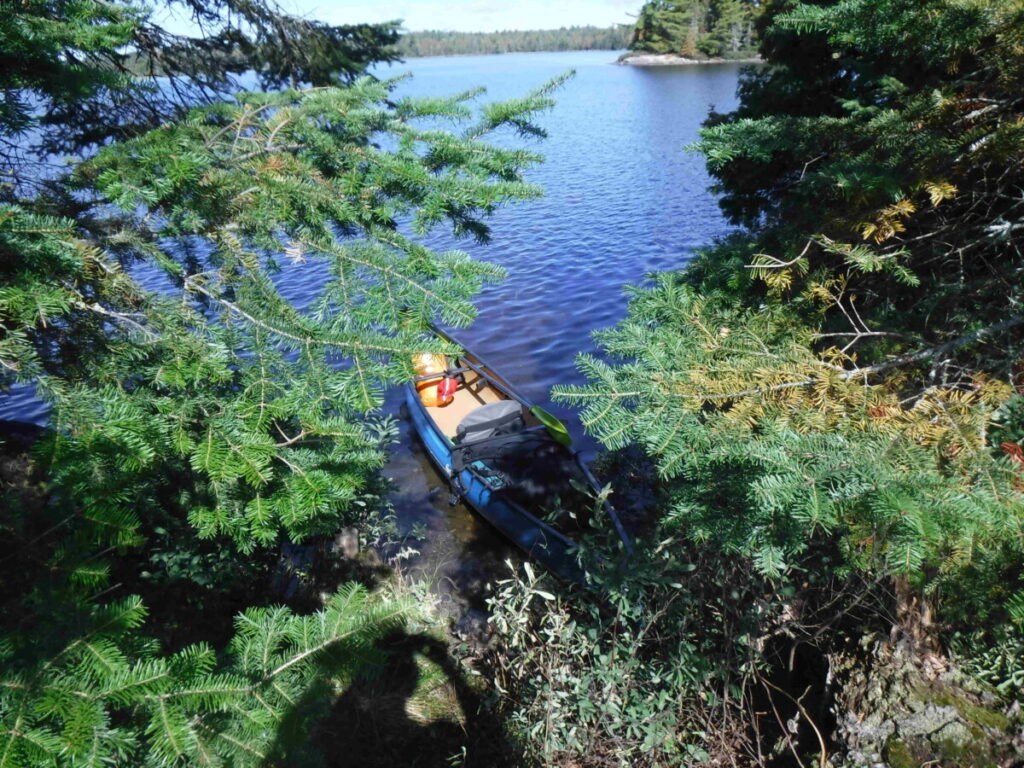
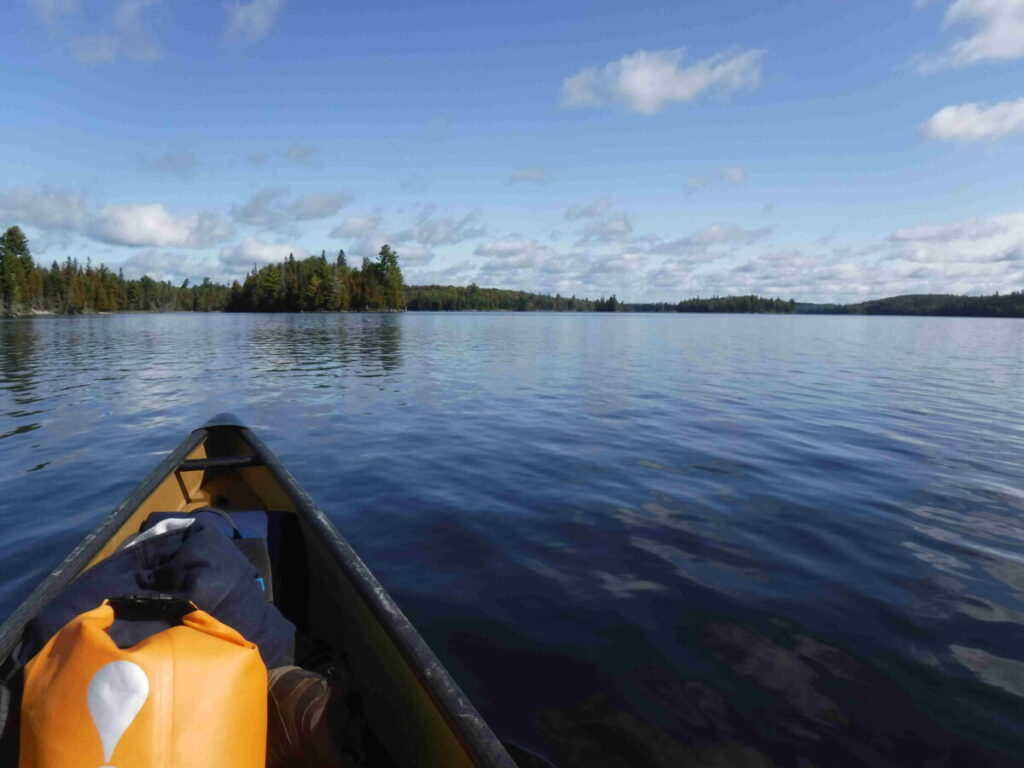
The conditions are perfect as if nature is trying to make up for yesterday. I am heading to the Eastern end of Wicksteed Lake , where I will take a river to Mackenzie Creek and on to Mackenzie Lake, the whole trip being about 15 kilometers.
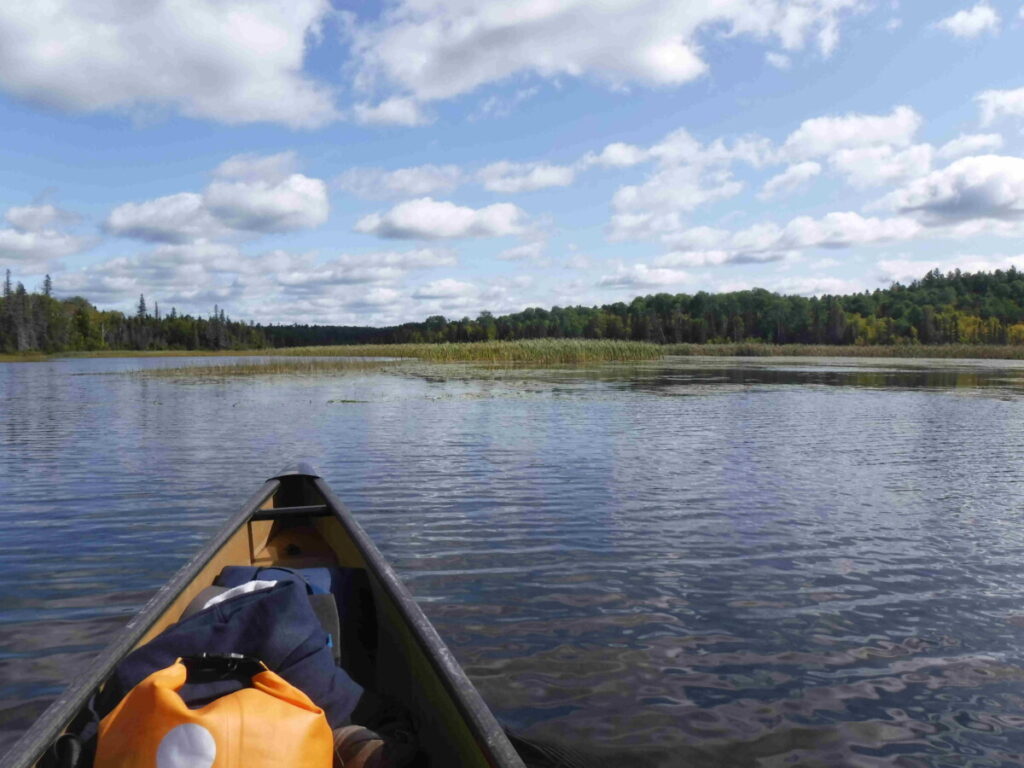
I reach the end of the lake about 12:30 pm and enter the river. It is easy to navigate with the usual channel twists among tall grass. I pass a fishing camp, with no one home and a boat pulled up onto the shore. Shortly after that I see the railroad tracks I had noted on the map running parallel to the river . The telegraph poles beside the track lean askew and the lines are mostly gone. I wonder if the track is used, but can’t see enough of the rails to find out.
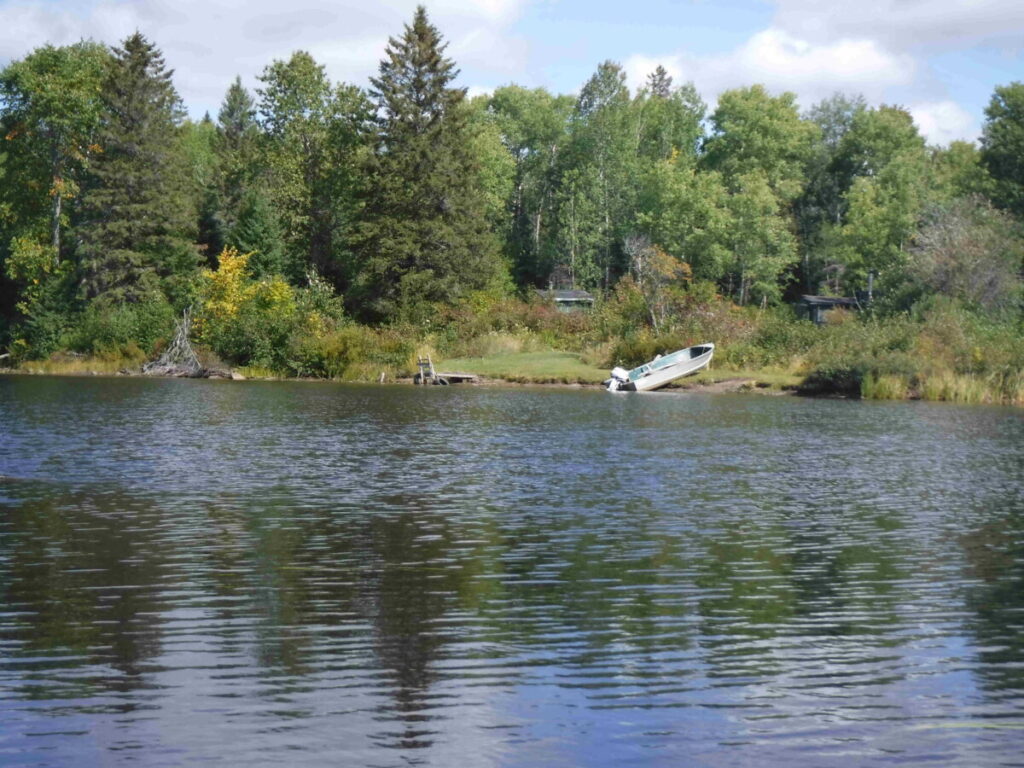
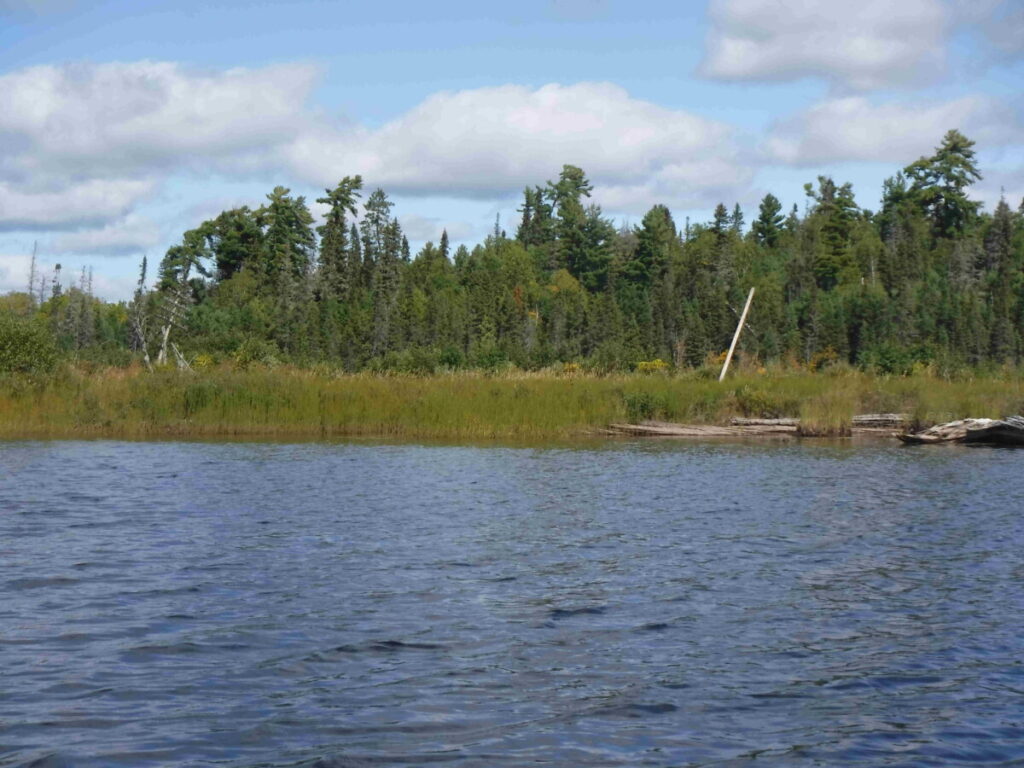
A railroad bridge appears that goes over the entrance to Mackenzie Creek. I wonder about barriers on this part of the trip that are not on the map as I head under the bridge into the creek.
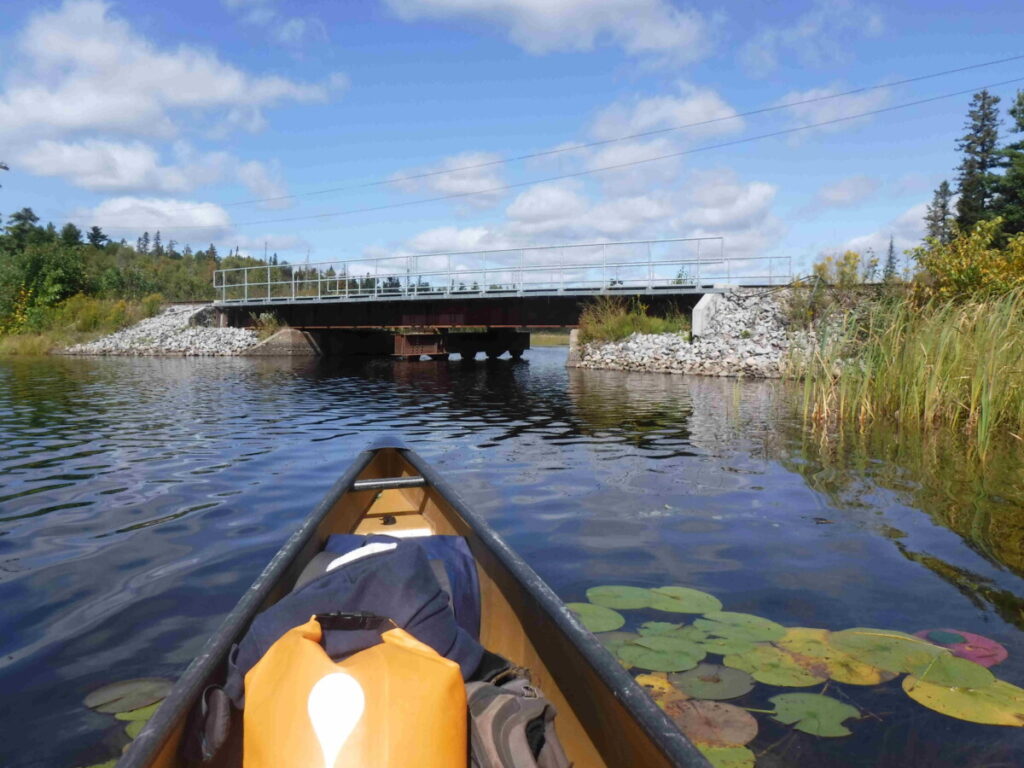
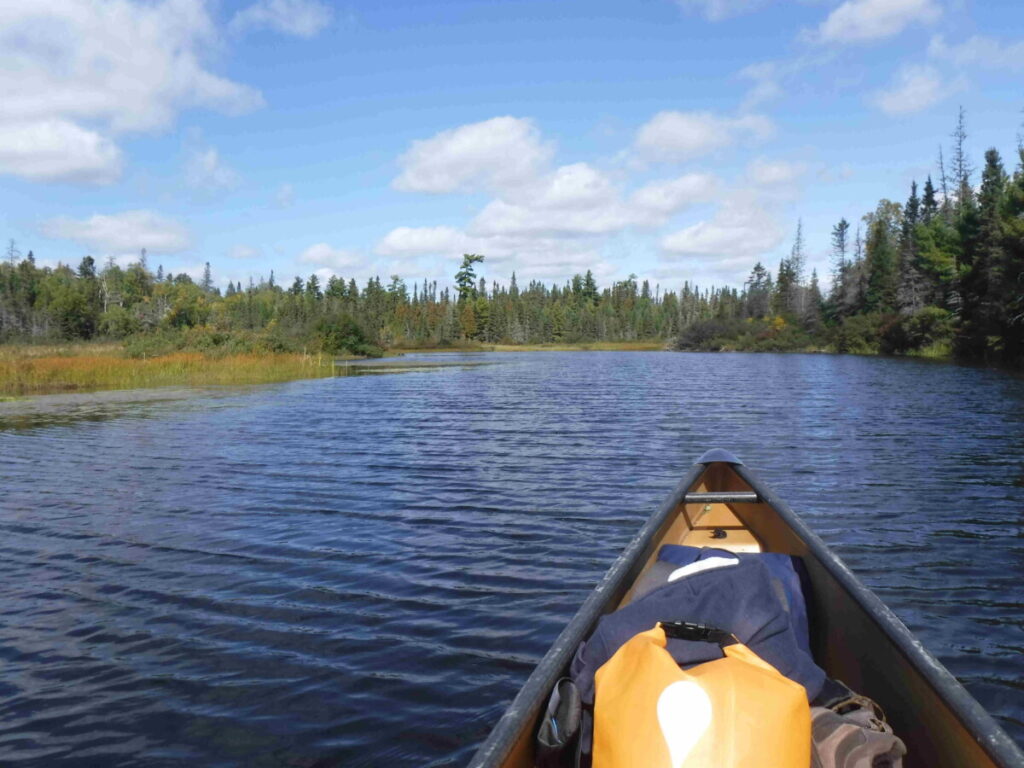
The creek starts out wide and easy to paddle. Further on it narrows and I come to the first spot to carry over. Looking closely however I see a way to pull the canoe through a narrow bending channel. Out I get and easily but carefully pull the canoe through.
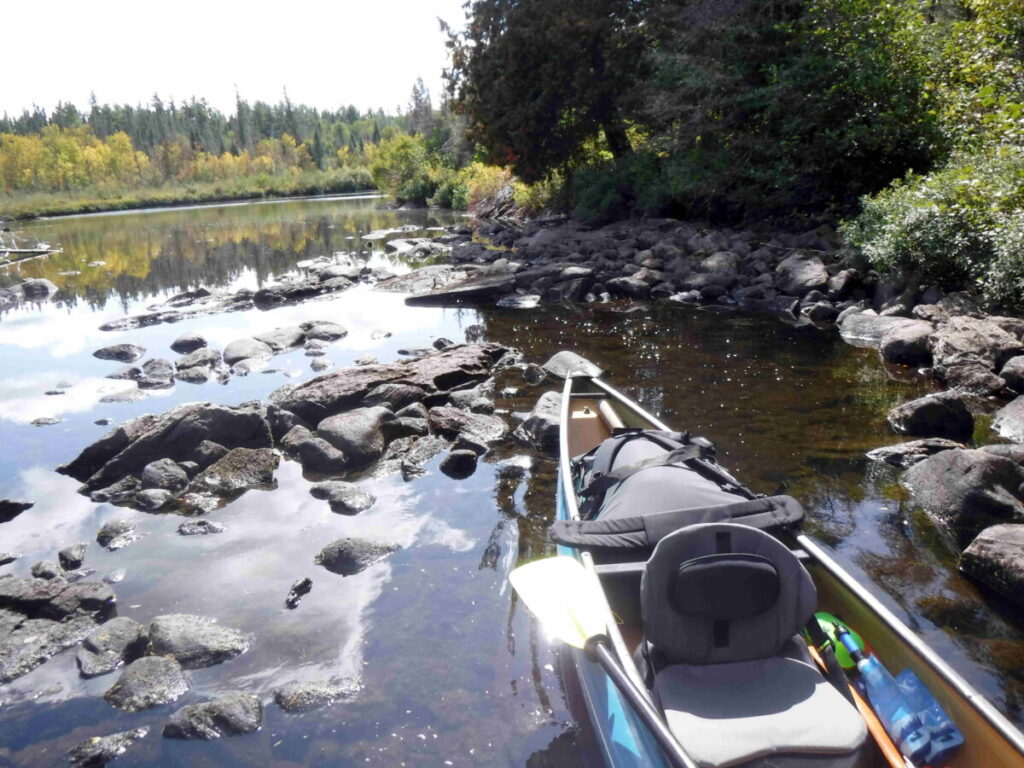
Back in the canoe and paddling around a bend I see rocks across the creek with no way to get past except carrying canoe and gear. I am puzzled why there is some pipe there and what it might have been part of before finding its way here.
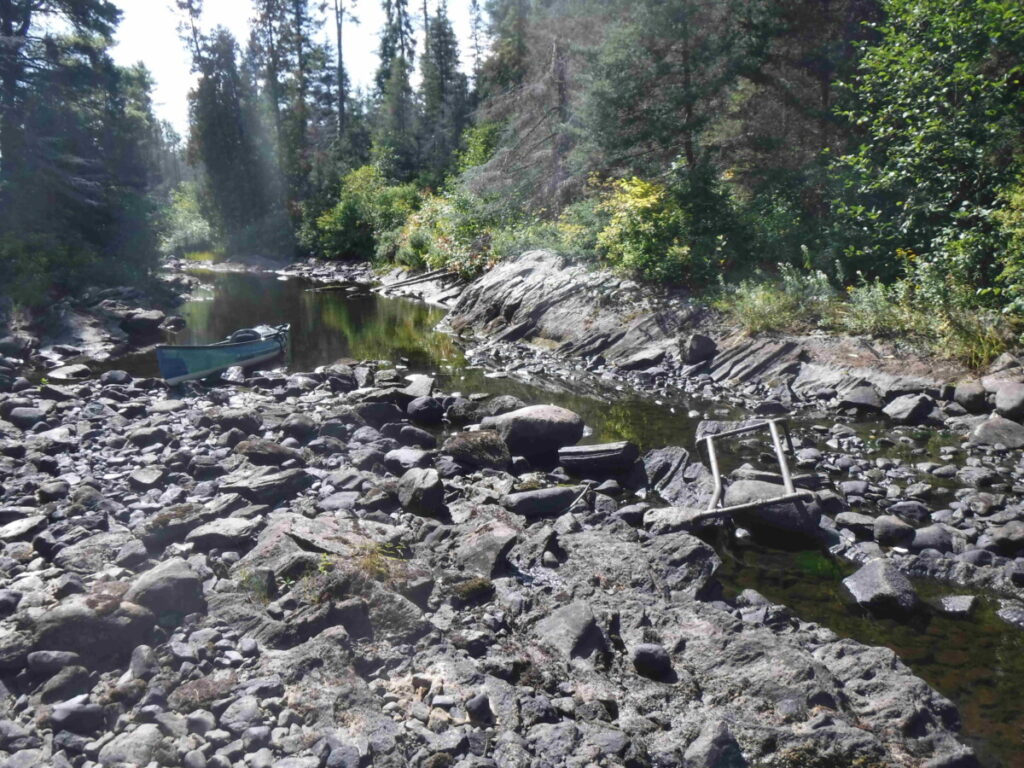
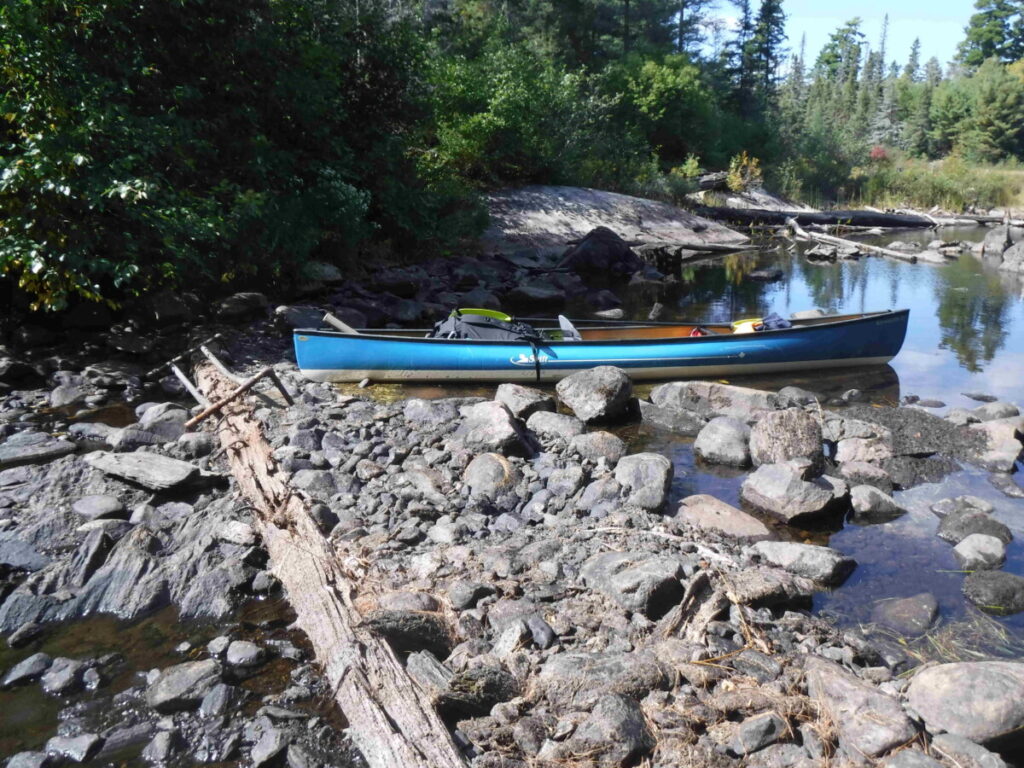
This when an ultra light canoe makes carrying easy. My canoe pack weighs far more than the canoe. I walk slowly and carefully, making sure I have a good footing each step on the strewn rocks. It doesn’t take long to be loaded and ready to go again.
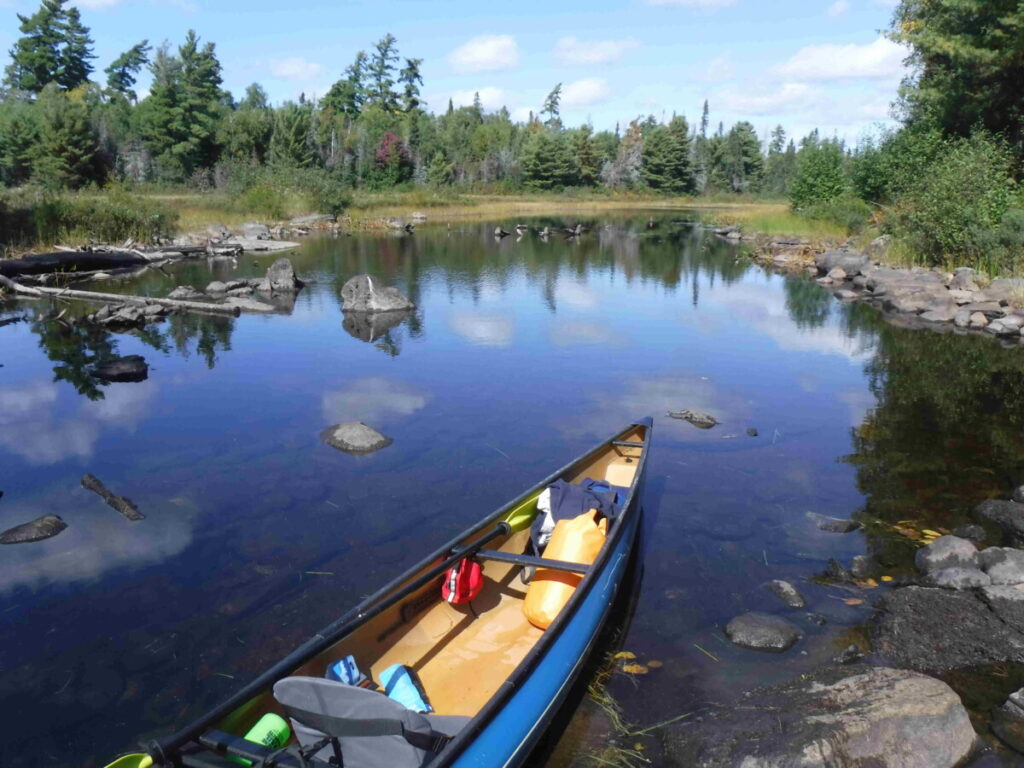
Confident that this has been the worst barrier except perhaps for some beaver dams I paddle on, taking in the landscape and the sunshine. The creek is wide and clear ahead. Suddenly I stop abruptly on a mud bar, that I hadn’t noticed gazing around.. No problem I think : I’ll just paddle off of it with two or three strong strokes. I’ve done this before. The canoe moves a few inches and then no more. Instead of sensibly backing up I try harder, ensuring that I’m stuck tighter in the mud. It’s then that I look into the water and realize there is mud across the whole creek and about 20 feet ahead. I had not noticed it partly because of my inattention and partly because the mud was just below the surface, covered with grass that lay on the water hiding it, well not enough that I wouldn’t see it if I was actually looking.
I use my kayak paddle as a pole to push ahead – nothing. Then I decide if I put one foot into the mud out of the canoe it might lift enough to glide over the mud while I pushed. So I put my left leg over into the mud, hold the gunwales, with my right knee still in the canoe, and push – nothing. Now I realize that my foot is stuck in the mud up to my knee. I can’t get my leg out because my water shoes are acting like an anchor. Now I begin to think that this could turn out badly. I wiggle my foot in the mud, prepared to lose the water shoe if I must. Finally I get free, the shoe still on and return to sitting in the canoe. It really is time to sit and think.
The only way out of this is to pull the canoe across the mud from the shore. I need to get to shore, about 20 feet away, with a rope. Then with the canoe being lighter I should be able to pull it ahead from the creek bank. I empty my pockets and tie the emergency rope I always have in the canoe to its forward thwart, ensure that my InReach is securely clipped to my PFD and then go over the side into the water and mud. I float on my back which along with the rest of me is scraping across the mud. There is enough water to prevent me from sinking into the mud and paddling backwards with my arms, pushing with my kegs I make it to the creek bank in a couple of minutes. I turn over to stand up and discover that my foot is going to into the bank as deep as it did in the mud, so I crawl until I am on squishy but not sinking ground. I get set and pull on the rope to the canoe. It takes a lot more effort than I expected but it starts to move toward me. I keep pulling while I walk along the bank to where I see the mud ending and clear water, standing there and pulling again and again until I finally have my canoe back. The worst of the ordeal is over.
I wish I had taken pictures of all this, but I left the camera in the canoe when I floated to shore. When I am back in the canoe and ready to continue, I take one shot of the evidence of the mud, showing hardly enough of the mud which is all over the canoe, stem to stern, inside and outside, and all over me. My water shoes are off , but saved for another day.
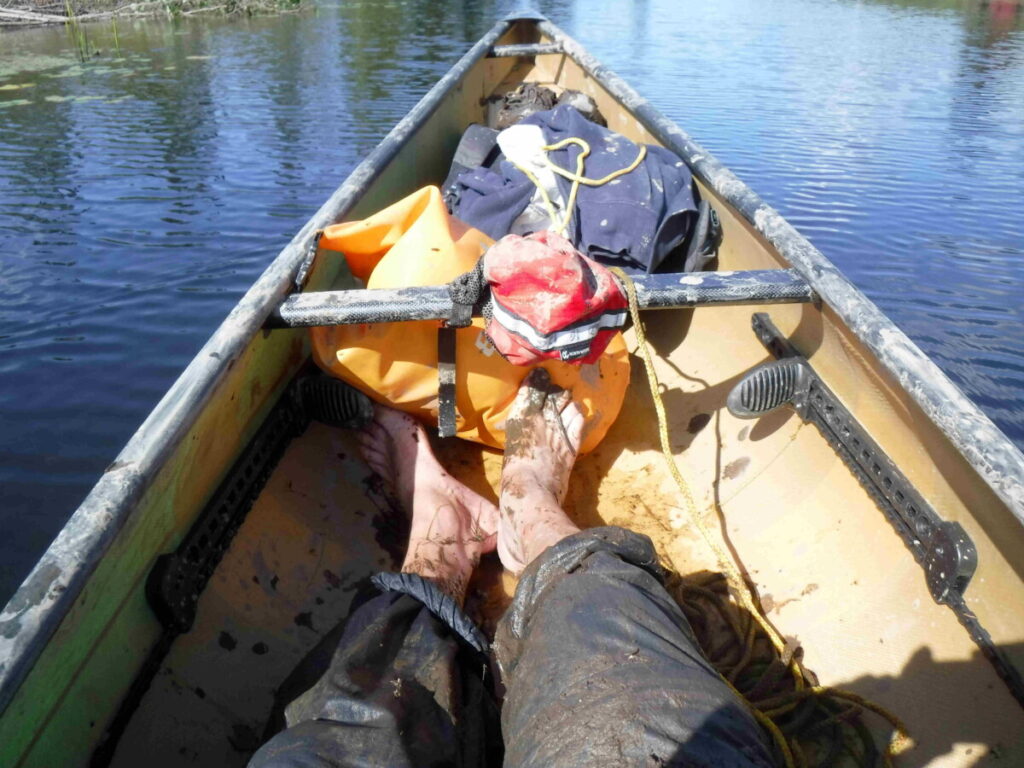
Determined to make Lake Mackenzie, it never occurred to me to pull the canoe back and return to Wicksteed. One just doesn’t do that kind of thing. Now I am soaked, muddy, smiling and off paddling again. When I return tomorrow I will get out of the canoe before the mud and pull it through.
The next challenge is a beaver dam, nothing about it I haven’t done before and I pull the canoe over easily. Anything but more mud is OK.
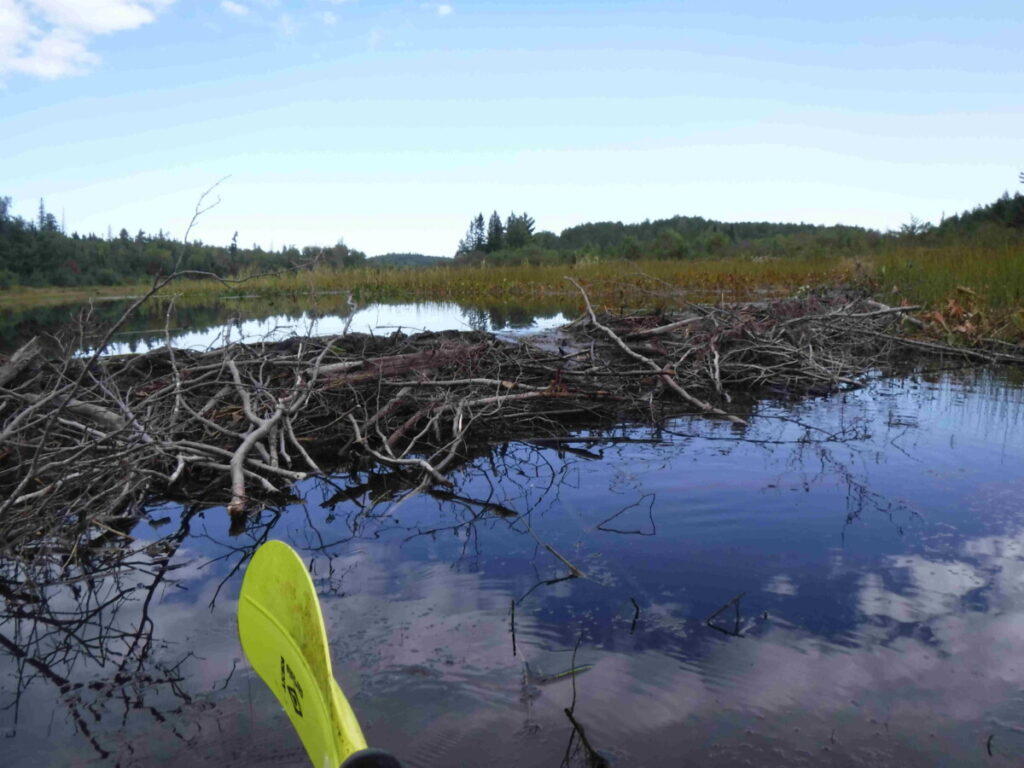
Planning this trip, I referred to a few maps that included Mackenzie Lake: two had campsites marked on the lake while the others showed nothing. I marked the locations of the supposed campsites in my InReach map, wondering what I would find. Paddling into the lake I searched for the first campsite closest to where I was. Even though the GPS showed me right next to it, I saw nothing at all to indicate any thing that might be a campsite. I am certain of my coordinates , concluding that the site has been long grown over. I paddle on to the next location and see no signs of a campsite there either in the dense brush on the shore.. The third attempt should be obvious because it is supposed to be on a point , which I see in the distance. Paddling up to it I can see how it could be a campsite but there are no signs of it being used, like a fire-pit or some cut branches. It’s just an exposed rocky point with a poor spot to put in. Off I go searching for another that is supposed to be on a small island, according to a trip report I read on the web posted several years ago. The island is almost barren, a possible campsite there only using a great imagination.
Now I am tired of looking and decide to go back to the point site. I find a spot to safely put the canoe into and carry my gear up the rock face to the top flat surface. All at once I realize that I am wet and tired, and begin to shiver. I put the tent up quickly, and leaving everything else for later, fling my air mattress and sleeping bag inside. As fast as I can I get the mattress inflated, strip and crawl inside the sleeping bag to get warm. It’s about 4 pm and I fall asleep for an hour. Waking I put on dry clothes and set up the rest of the camp, just the cooking area, there being no way to string the hammock. After making dinner, eating and cleaning up I stow the bear vaults with my food away from the camp back from the tent toward the shoreline woods, not as far away as I would like but it will have to do. Back in my sleeping bag I read and fall soundly asleep. It’s been an eventful day.
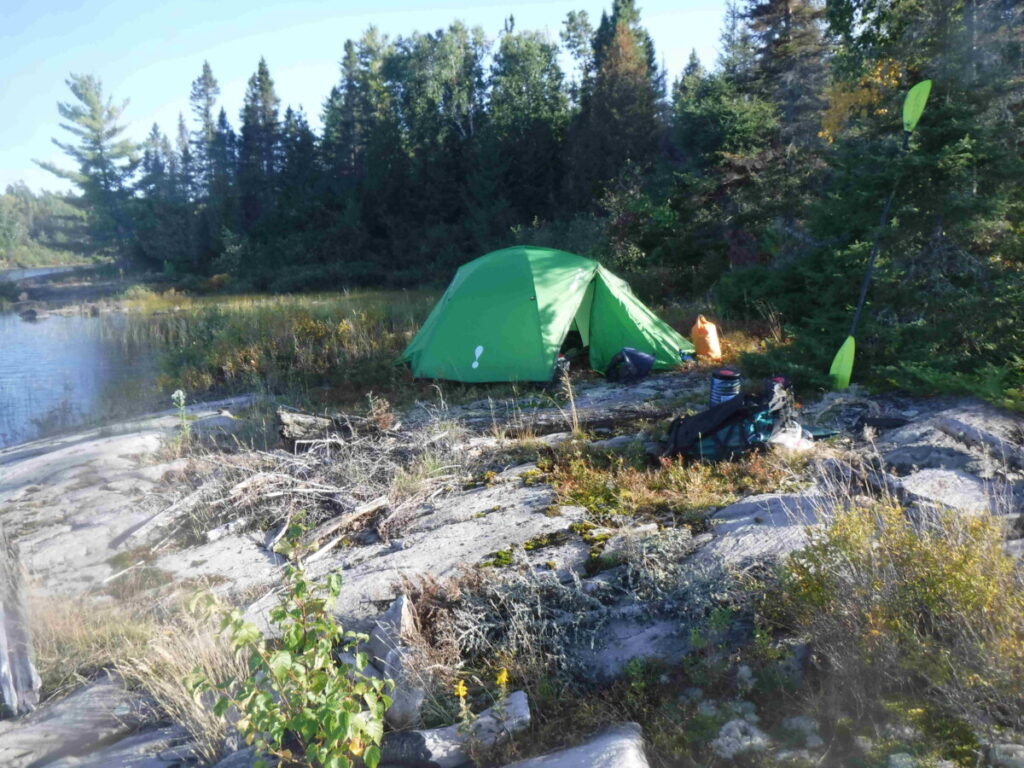
I am up at sunrise to see another beautiful day. I regret having no time to explore the lake and the creeks leading out of it as I had planned, but am pleased I made it here despite the setbacks. The sound of a train engine tells me the railroad tracks where I came from are being used. I will be heading back after breakfast, attempting to get all the way to my first night’s campsite, because it will be close to where I put in, making it possible to get to where I started, the load the car and head home at a reasonable hour tomorrow.

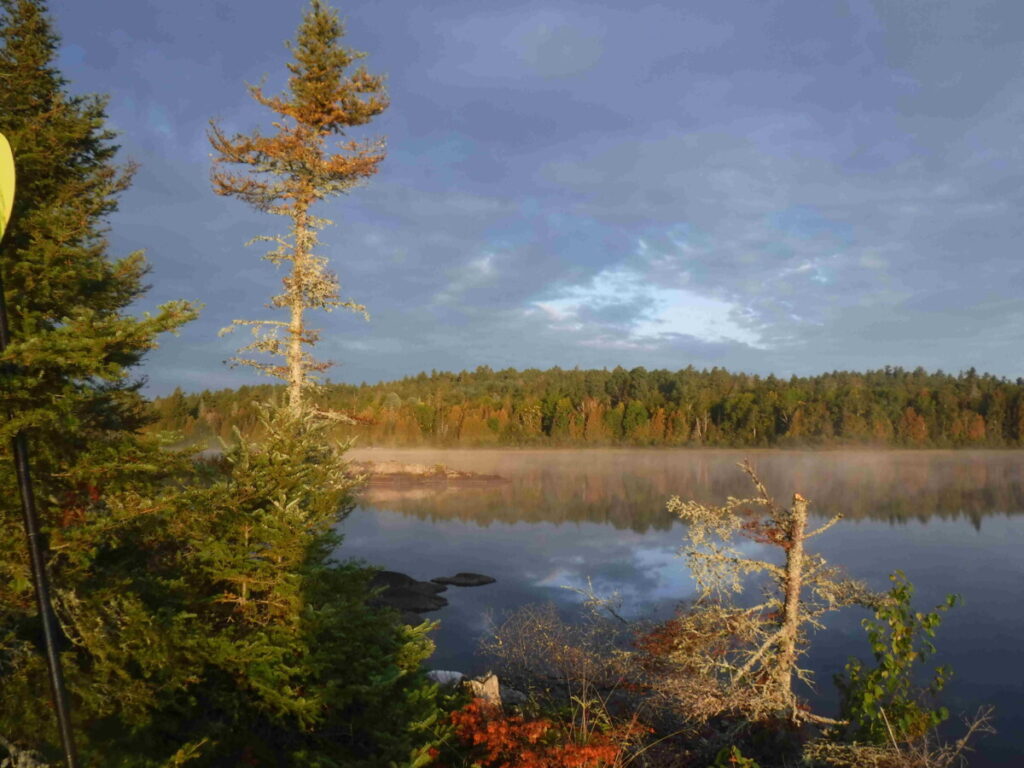
it’s 9:30am. I’ve had a leisurely breakfast, packed up and am ready to go. Yesterday’s mud marks the sides and inside of the canoe. I will clean it later. Now it’s time to begin a long day’s paddle with the beaver dam, mud and rocks ahead, confident that there will be no problems getting past them.
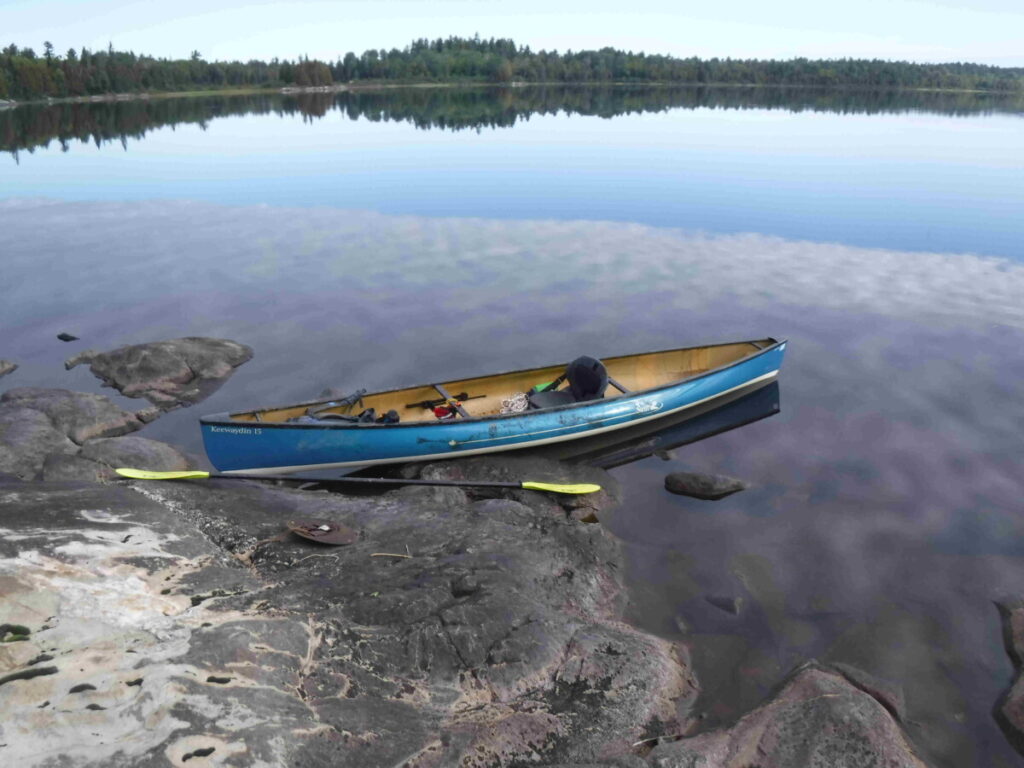
First up is the beaver dam, which I pull the canoe over easily and paddle on to, yes, the mud! This time, knowing what I am in for, I take the canoe to the creek bank before the mud begins, take off my water shoes, grab the line attached to the canoe and go ashore, sinking immediately to my calves in the soft squishy ground. Without water shoes to catch me in the mud I can pull my legs up easily and take steps to firmer ground,which is to say I sink maybe to my ankles. I’m ready, play out the full length of the rope to pull the canoe as parallel to the bank as possible and then I pull hard. It works well. The canoe comes across the mud to a spot I choose to get back in. The worst part of the day’s trip is over and it wasn’t that hard when I did it the right way even though it took some strength to move the canoe.
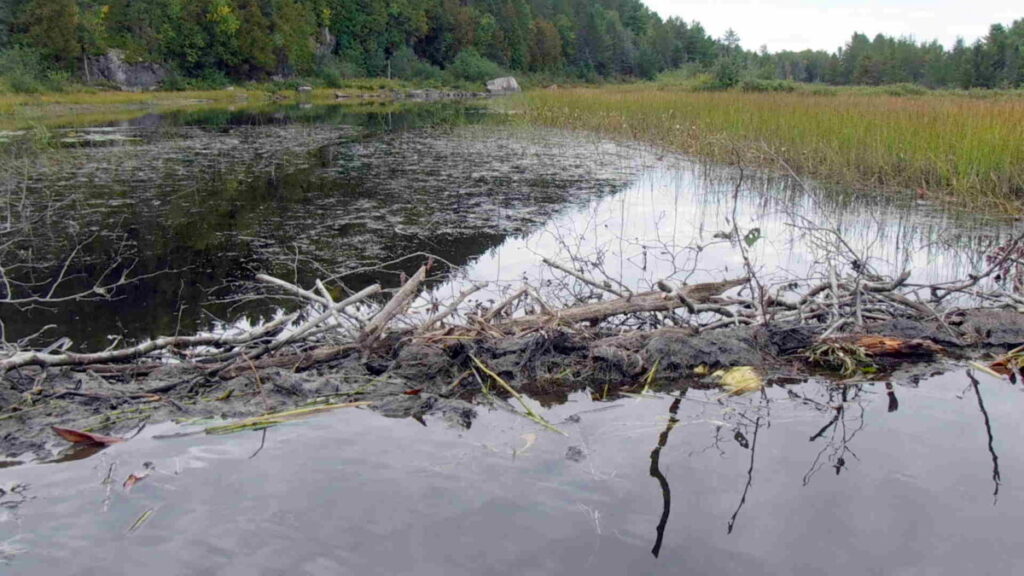
I come to the rock bed across the creek. I know this is more inconvenient that hard to get past. I unload and carry the canoe across, anchoring it to a rock because the current wants to take it away downstream. Next is the spot where I have to pull the canoe for a bit, easy, easy easy.
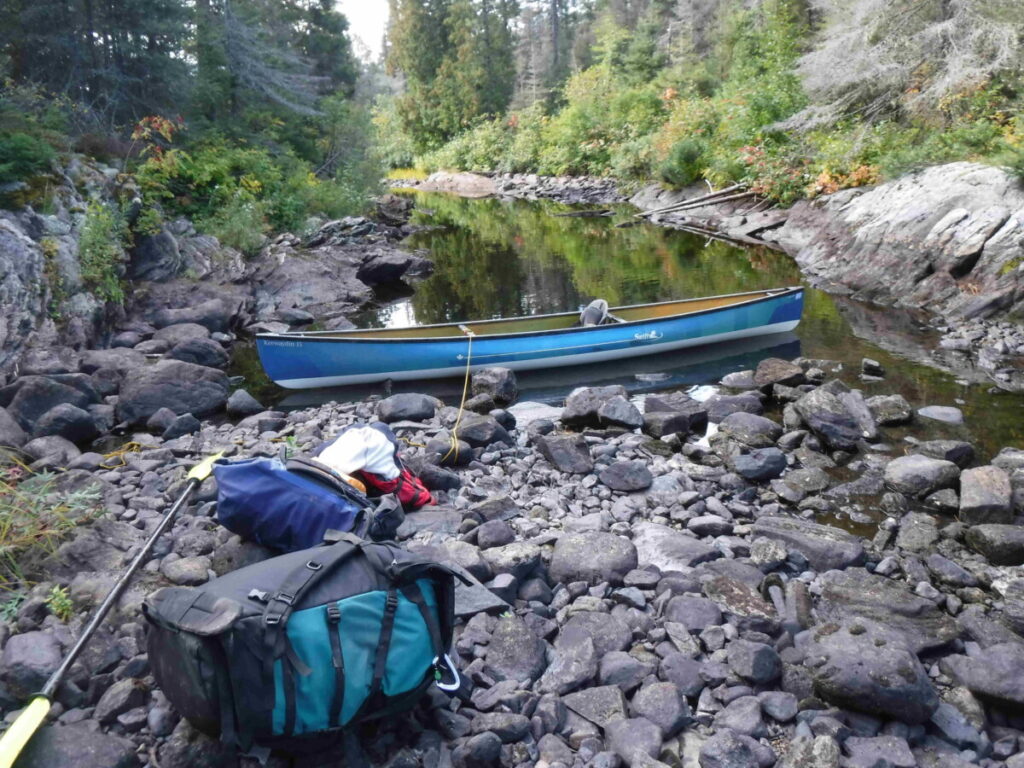
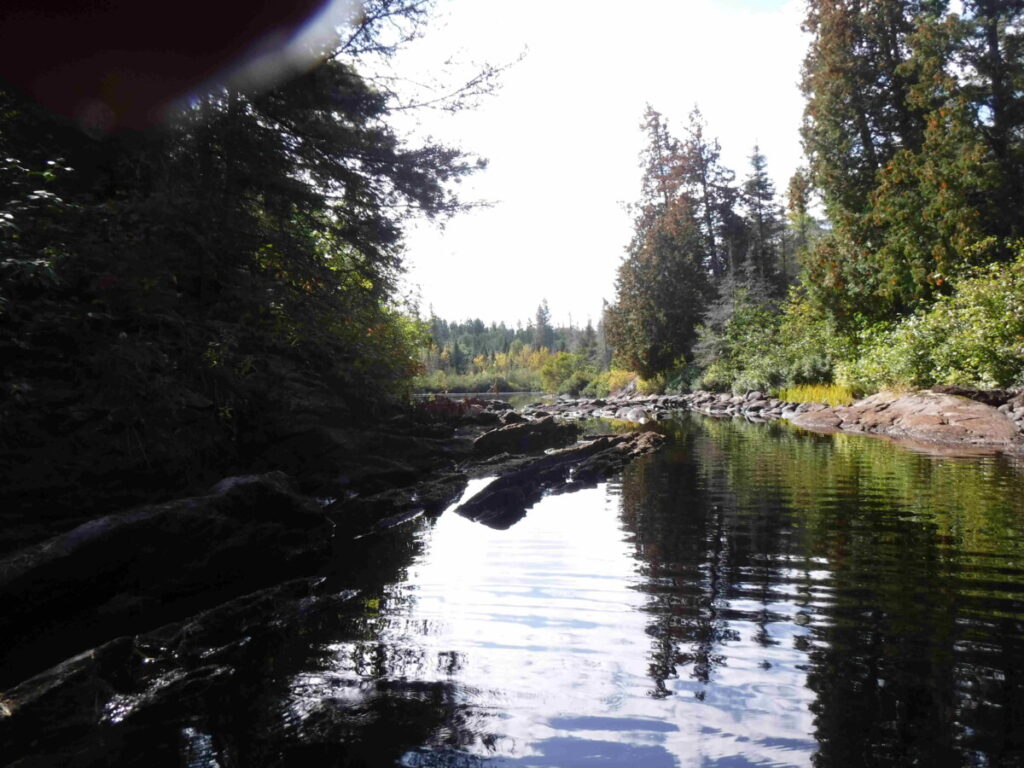
Now it’s steady paddling for most of the day to get to my campsite. It is warm, calm and the sky is clear. I start de-layering to enjoy the warmth and settle into a rhythm. About 1 pm I am well into Wicksteed lake heading west. The sky folds into the lake like the edge of a still water infinity pool. There is no other sound than my paddle and the canoe’s ripples. I am alone.
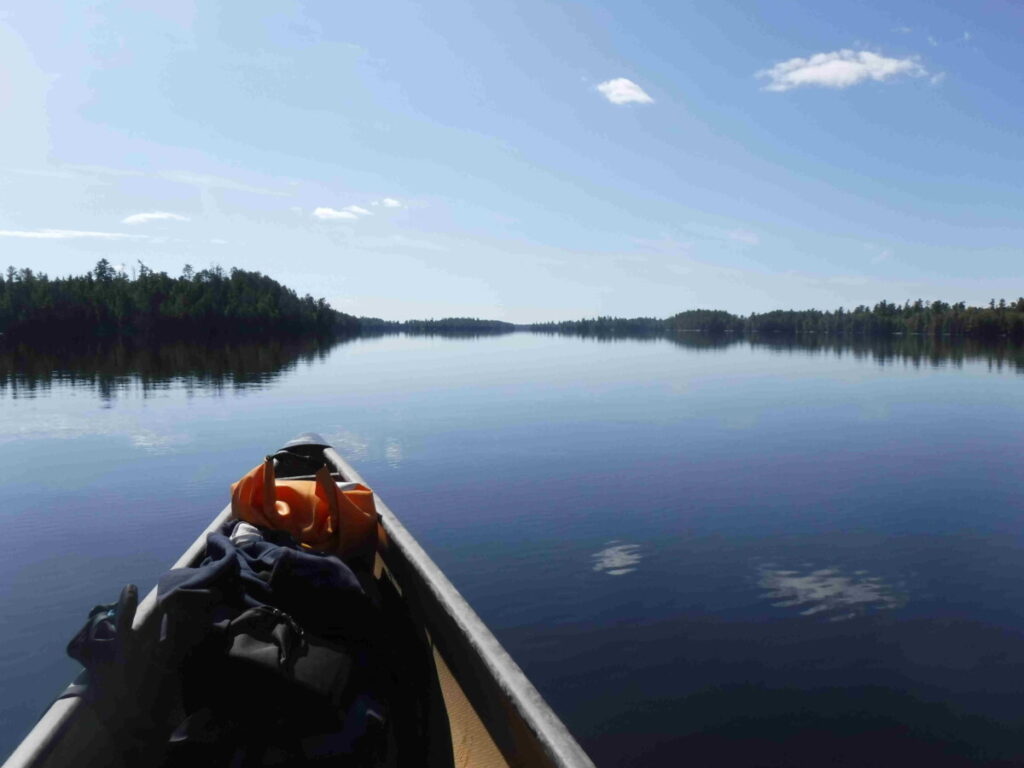
Later I look back and see how far I have come. It’s a long way.
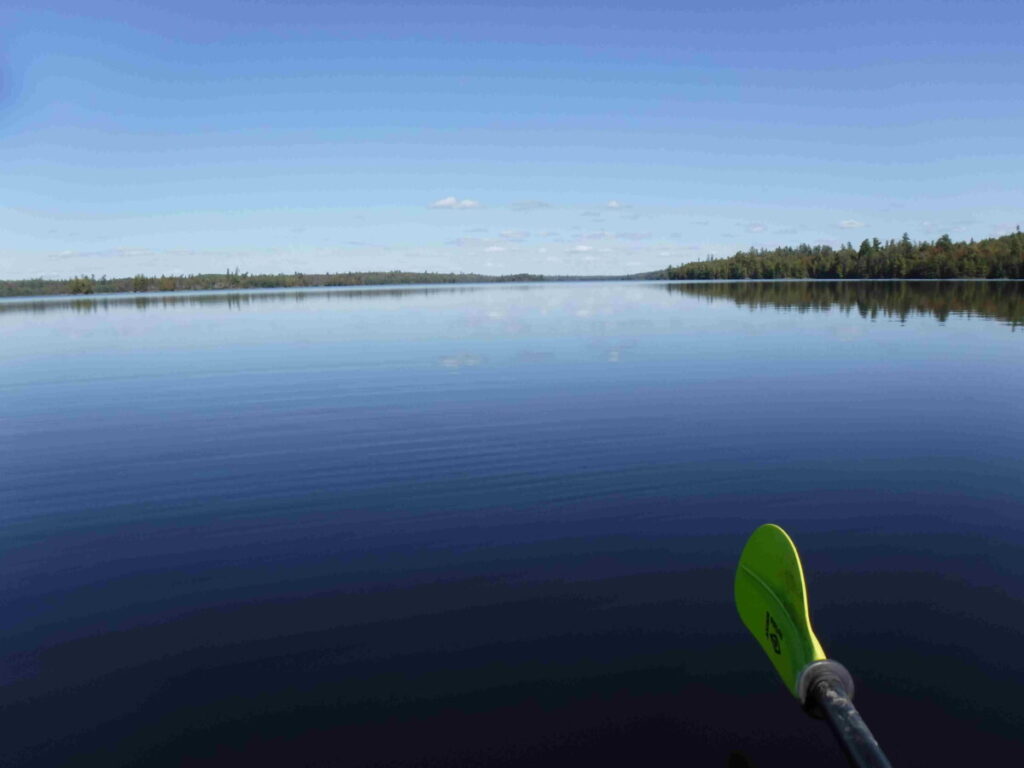
It’s about 3 pm and 18.4 kilometers of paddling when I reach my campsite. I have looked at some other possible sites along the way but none seemed to be as good as this one. I set up camp, hang up my wet muddy clothes in the sun which I’ve packed in a separate bag, and make a late lunch. After that I relax in the hammock and read. Later have a good dunk in the lake to wash up and begin to get dinner ready.
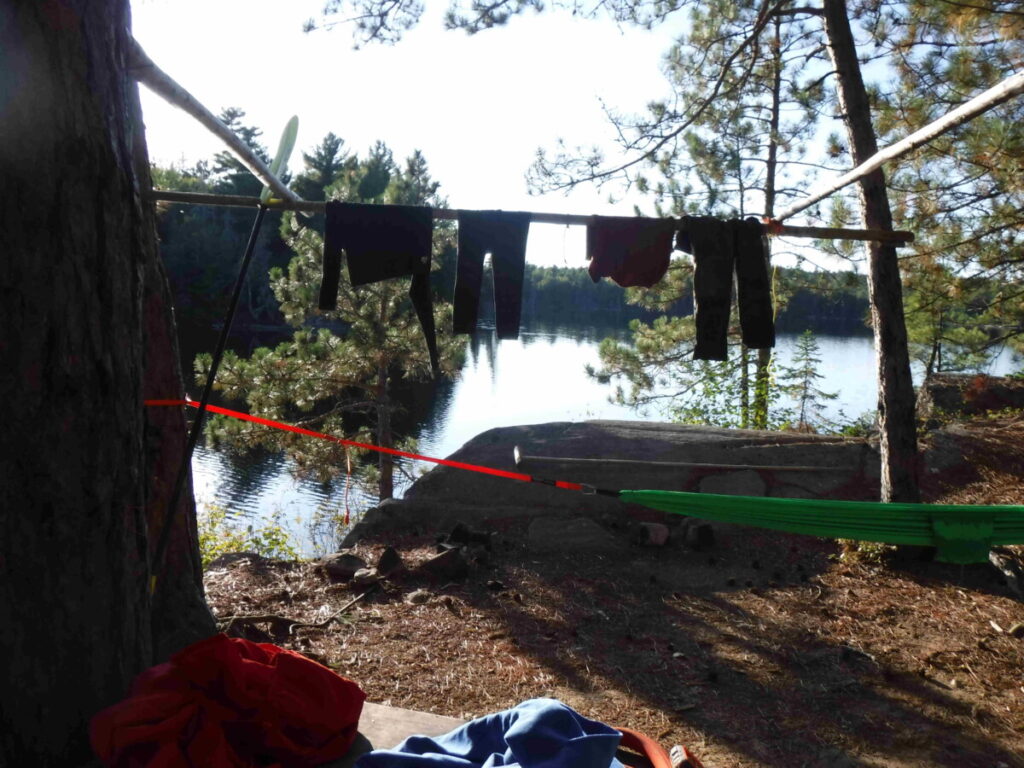
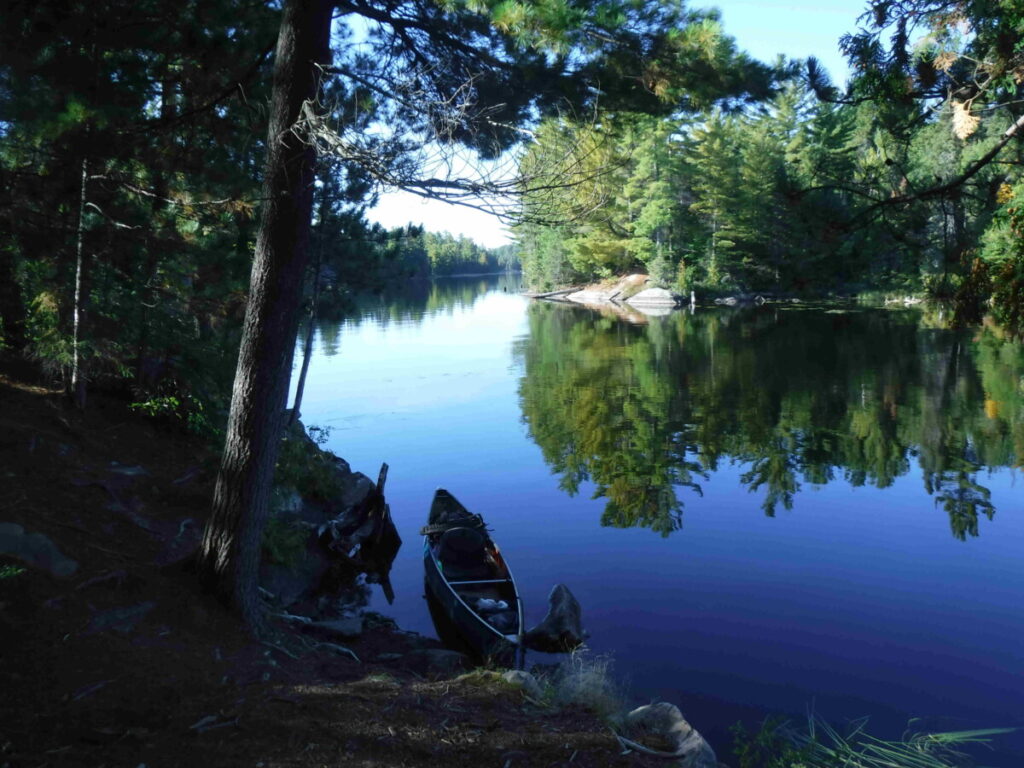
It’s time to go home. The canoe is packed and ready for the 1 1/2 hour trip to where I started. It seems each canoe trip I take has its own story to tell, regardless of what I planned and this one has been no exception. Its my first venture into the Temagami Region and I will come back again, going further north onto Lake Temagami itself. I appreciate now the work that goes into maintaining campsites in Algonquin Park and the effort by its campers to leave no trace, the few exceptions being all the more startling rather than normal as it is outside the park. That said, we are blessed: Toronto is one of the great urban centres of the world and not too far away is a vast network of lakes and trails that speak to us and embrace us when we go there to ask.
Work invigorates us. In the absence of our being assigned work to do we will take it up on our own. “Really?” you say, “That drudge I drag myself to each day…you’re kidding!”. Forty years ago, I learned to think about what work is from Elliott Jaques and his groundbreaking work (sic) on Requisite Organizations. I’ll call this trip “Canoeing with Elliott”.
Elliot defined work, in my words, as using our brain (always) and brawn (sometimes) to get something done on time, using what we have on hand, to achieve a bigger purpose.[1] He focused on organizations as did my own consulting. I believe that, left to ourselves, we will take up tasks naturally of our own accord. When we challenge our capabilities, these tasks offer us unique satisfaction. We may work harder than when we are at work, but it doesn’t feel like work. This is not to say that relaxing has no value, but taking it easy from nothing and doing nothing for no reason eventually becomes boredom, tedium, and a restless yearning for something meaningful to do.
I am heading to Big Crow Lake, a half day paddle from the north end of Lake Opeongo, which is the biggest lake in Algonquin Park. It’s about 15 kilometers from Algonquin Outfitters to where I plan to make camp for the first night, before going on to Big Crow Lake the next morning. Planning the trip, I thought about paddling the lake, but decided to take a water taxi from the outfitters instead, because Opeongo is notorious for wind and waves.
First, I need to pick up my canoe from Algonquin Outfitters Oxtongue store on the way to Opeongo. I get the canoe I reserved, a 13.6-foot pack canoe weighing 26 lbs. available only from the Oxtongue store, and car top it with foam blocks and straps driving 40 minutes to arrive at my starting point about 2 pm. I am scheduled to take the water taxi at 3:30 pm, so have lots of time to get my gear organized on the dock, buy a Dr Pepper and relax a bit after parking the car. I am the only person going on this water taxi trip.
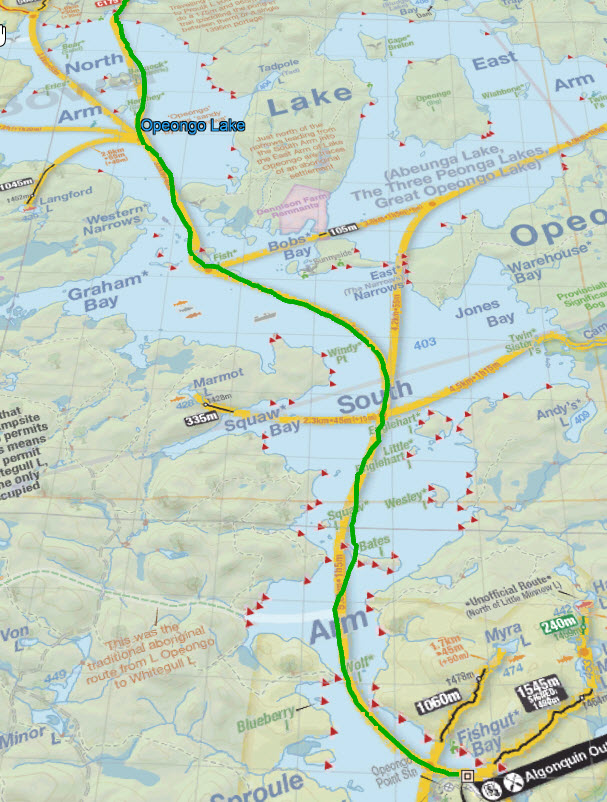
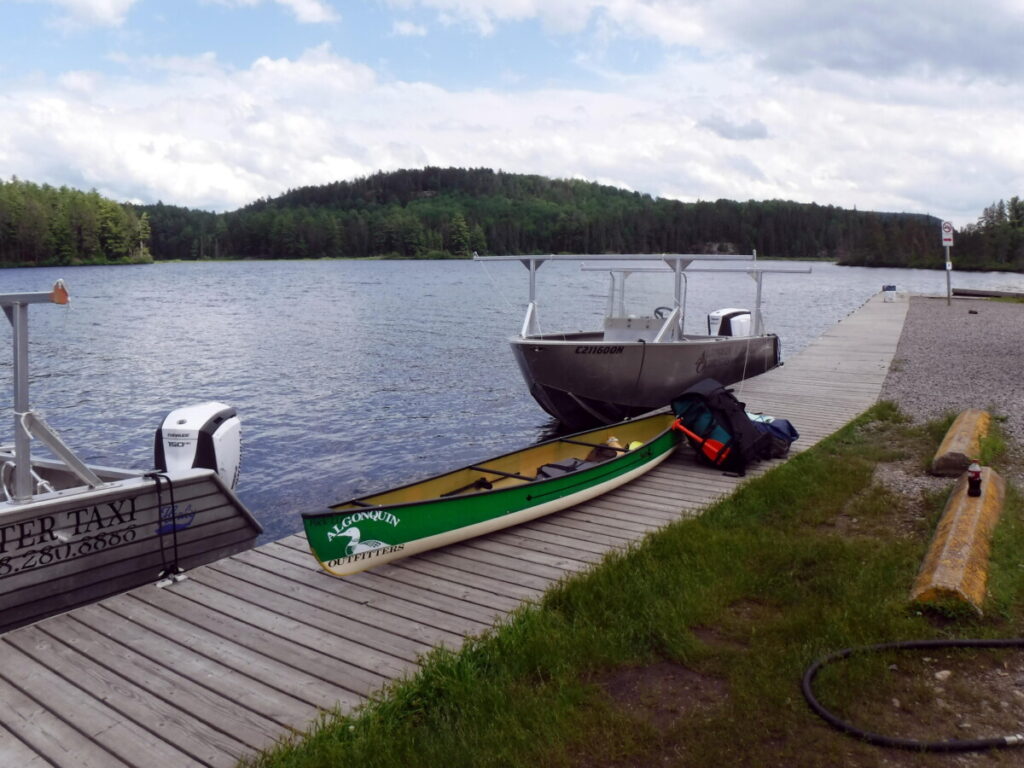
Right on time the taxi is loaded, canoe tied to the overhead rack and I am on my way. It takes about 15 to 20 minutes to get to my destination, traveling fast and bouncing on the waves. I see a vacant campsite near the dock where the beginning of the portage I will take tomorrow is also located. The driver puts the taxi in at the beach in front of the campsite and we unload. The boat backs out, turns and speeds away. I am alone, realizing I made the right decision to spend money on the water taxi. The wind was not that strong, but the lake was rough anyway.
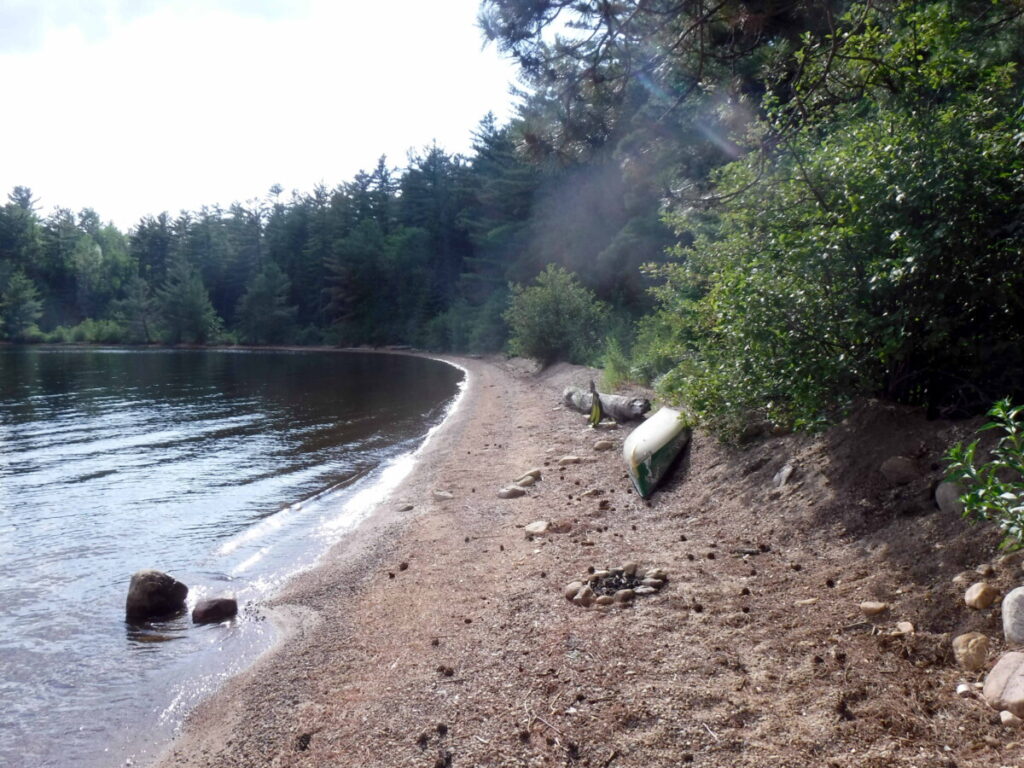
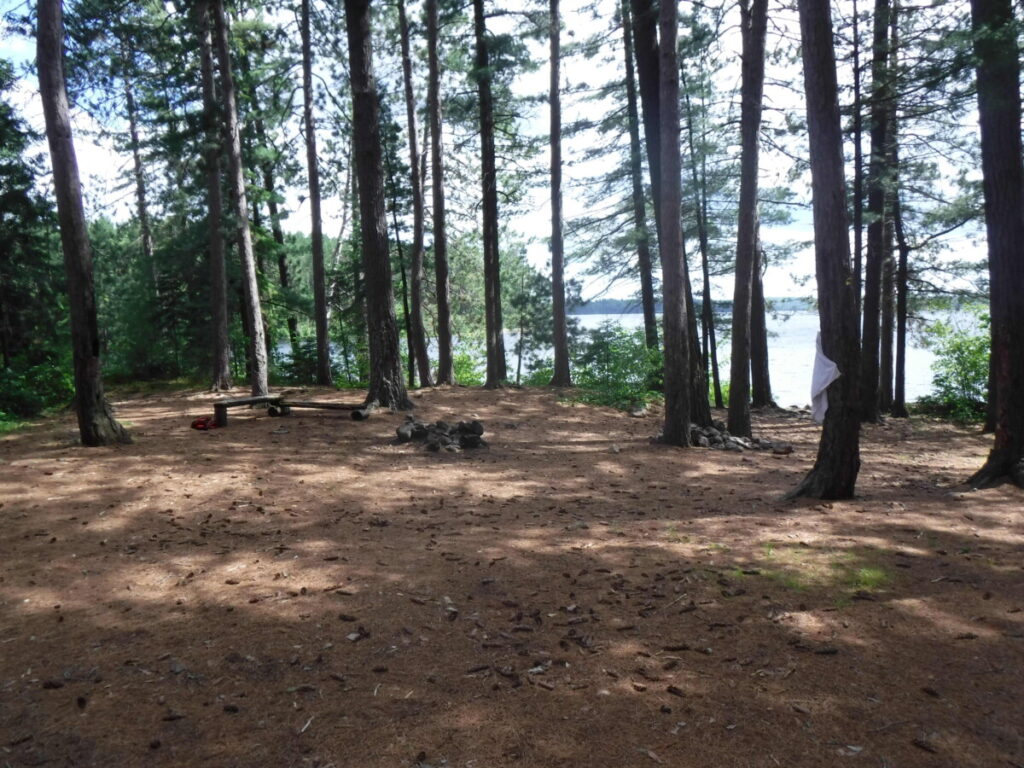
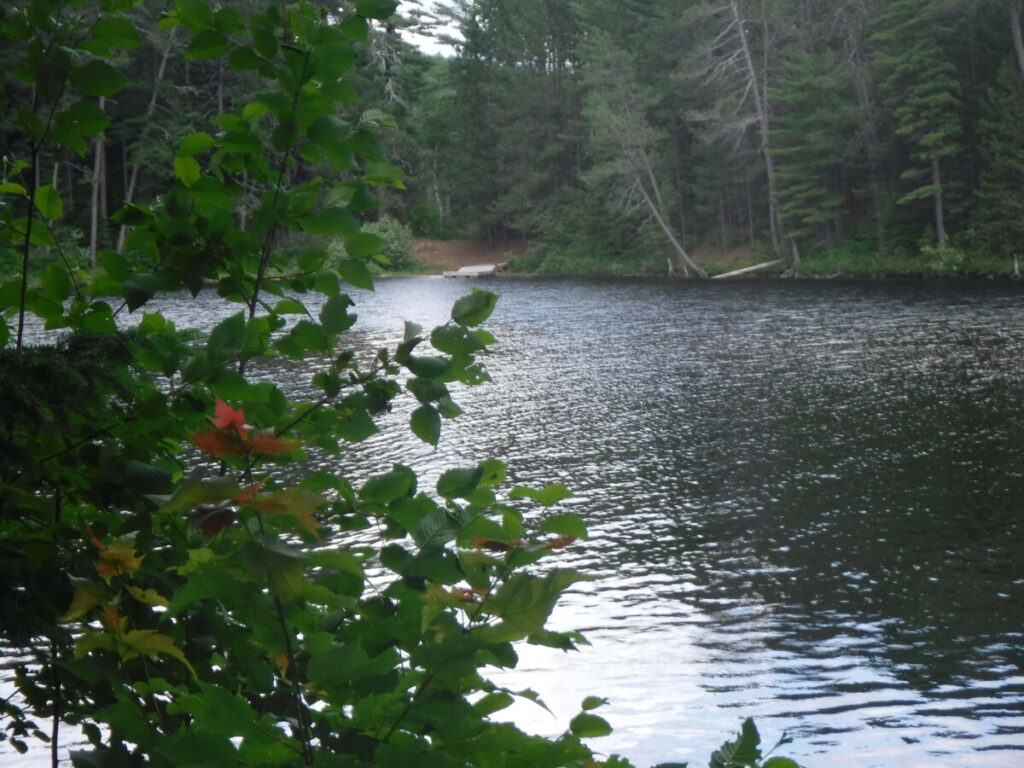
My campsite is large enough for many tents. The east end forms a point that protects a small bay with calm water where the water taxi dock is located. I’ll be only a 5-minute paddle to the dock and take out for tomorrow’s portage to Proulx Lake, easy to get to, maybe not so easy to get through. The reported distance varied slightly depending on the map I examined. Roughly, it is a 200-meter portage, then a 250-meter paddle across a pond, followed by the long part, a 1 km portage to the final put in.
I have done this much before, but not all in one go, the distance being broken up with short paddles between carries. It seems daunting to me, although I know lots of people do it without any concern. The hardest part will be carrying the canoe pack. It’s an excellent Algonquin Outfitters pack designed for canoe tripping, holding 120 liters and is full to the top with my gear weighing, I guess, about 60+ lbs.
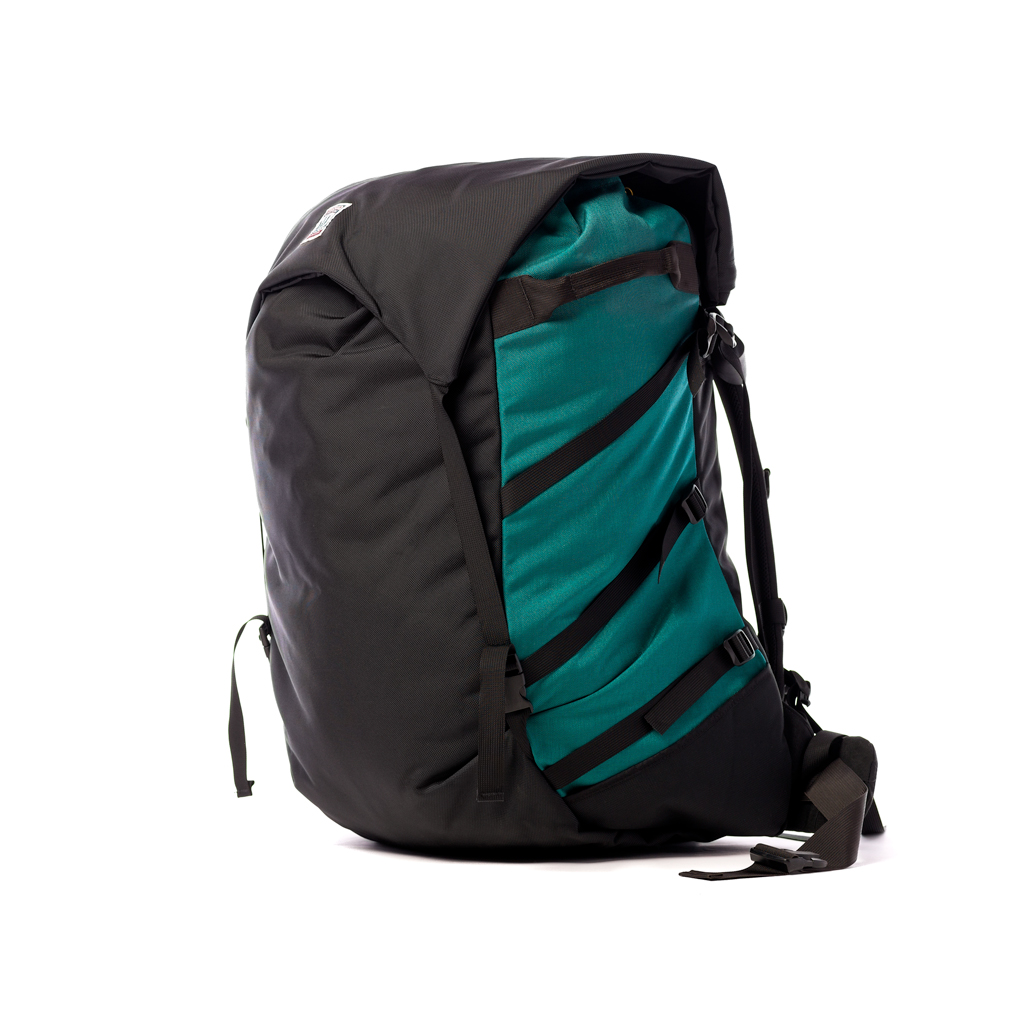
The portage trail I’ll use is a cart trail, flat enough to allow a canoe to be put onto a special cart if I had one and pulled through. The path is smooth, no rocks or exposed roots or and any steep slopes, perfect for a heavy loaded stroll. I have a secondary dry sack pack that weighs about 25 lbs which I may carry with the canoe on a second trip. Otherwise it will be three trips through and 2 walk backs, 5 km for the long portage in total. There are younger, stronger people who will do this all in one carry. That’s not me. I tried it once on a 250-meter portage and made it only halfway before putting the canoe down and carrying on with separate loads. I’m not weak. I am 72 years old and in no hurry, so I’m entitled to take my time. Also being alone, I cannot afford to risk a sprained ankle or worse caused by taking too heavy a load.
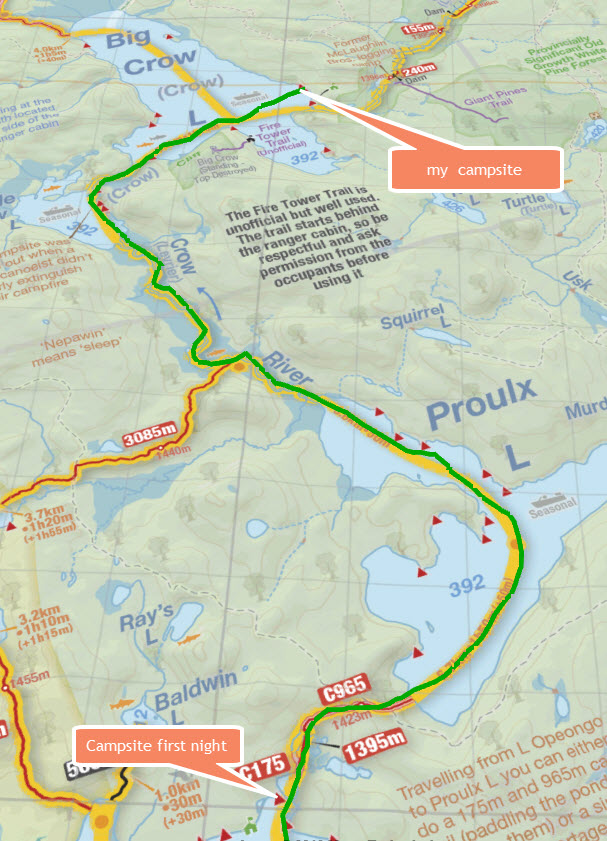
All of this is for tomorrow. Now there is lots of time to set up for the night, relax on the beach with a little wine and a bit of pot now that it’s legal, dinner and more time on the beach as the sun begins to go down. I read for an hour or so in the tent after dark arrives and turn into a sound sleep. I have read reports on the internet of people who try solo and give up after one sleepless night, spent waiting for the imminent approach of a bear, unnerved by every rustle. Sleeping alone in the back country doesn’t bother me. I make sure that any night snacking bear at worst will be trying to get at my food a good distance from the tent. If it’s intrusive there’s bear whistle and spray. Worse than that is less likely than the many other ways for me to be injured or killed by my own carelessness. I am more likely to be kept awake by the croaking of a nearby frog.
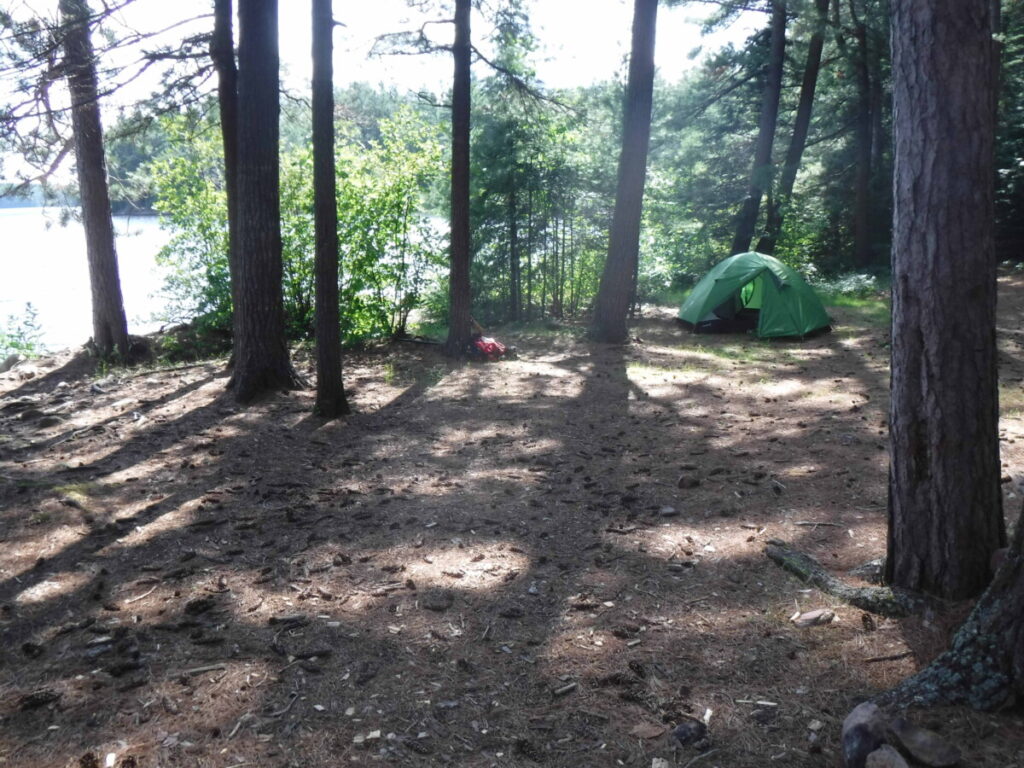
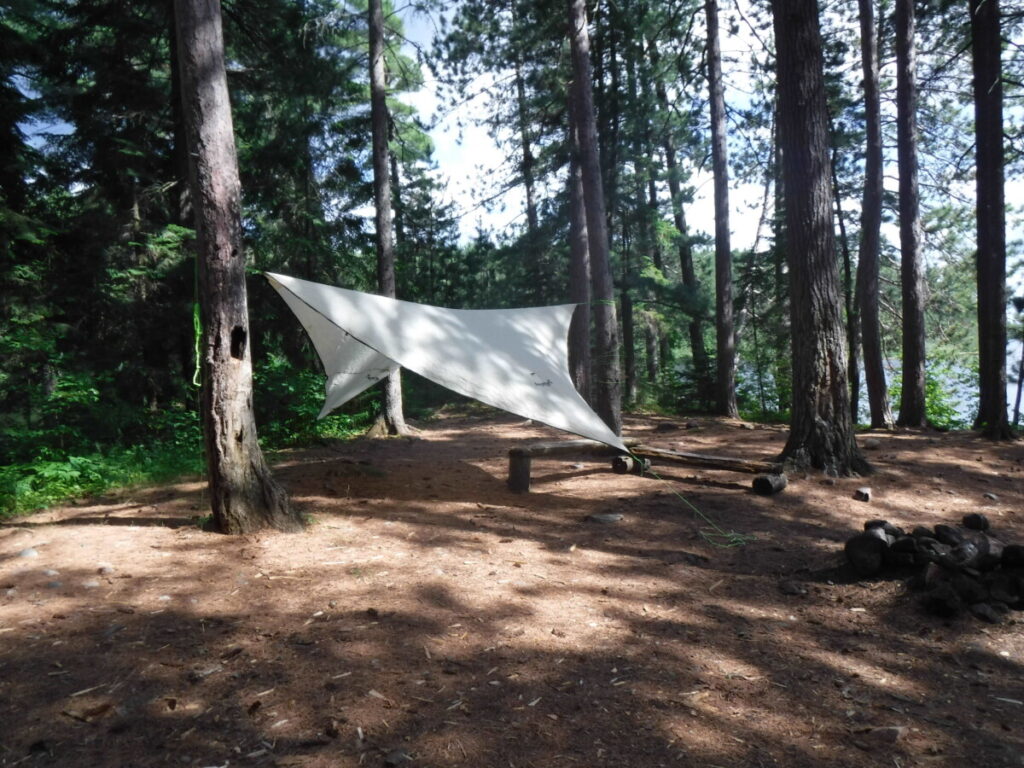
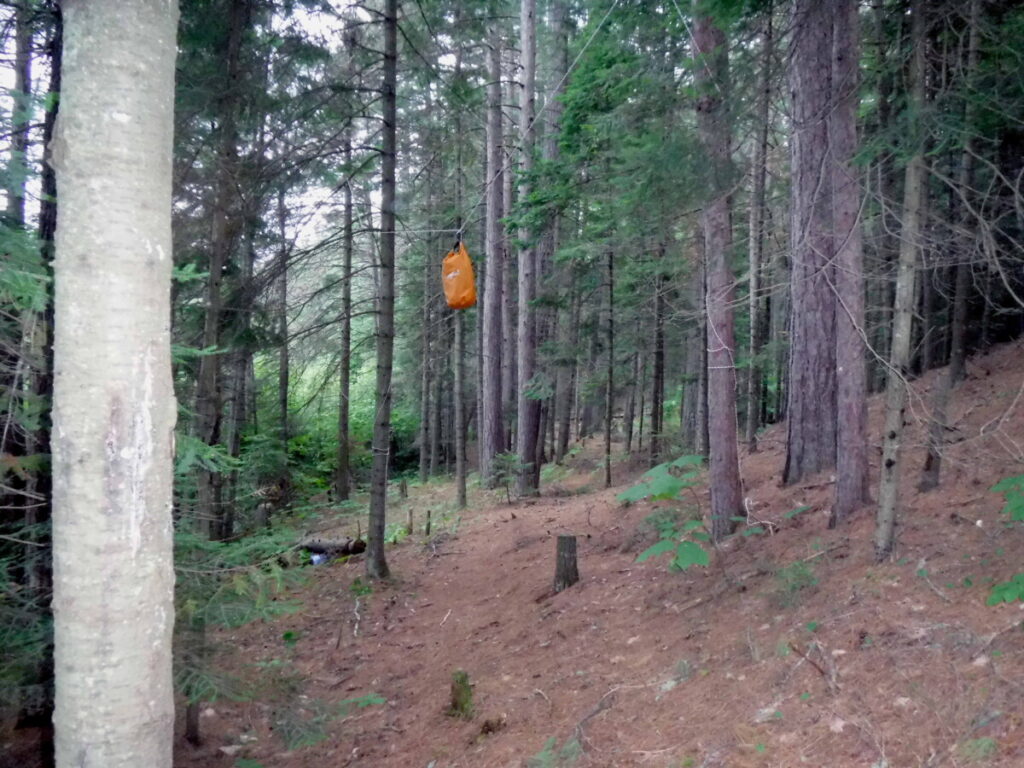
I sleep in until about 8:00 am. Getting up and out I immediately begin to boil water for my morning coffee made in the French press. Sipping high quality coffee feels luxurious as I scan the campsite for signs of any nighttime visitors, none, and look out at the lake for signs of today’s weather, good. Then it’s time for the thunder box, which in this case is up a hill with a veiled view of the takeout I will be at in a couple of hours, a regal perch. I wash up and make breakfast, always bacon and eggs, double smoked dry cured bacon which in a slab will last the whole trip and lightly Vaseline coated fresh eggs, two for each morning from a plastic egg pack that protects them. The Vaseline is an old trick to prevent air from permeating the eggs’ shells which would hasten them going bad. The last egg of the trip will be just as good as the first. Breakfast is the only truly fresh cooked meal and I savour it.
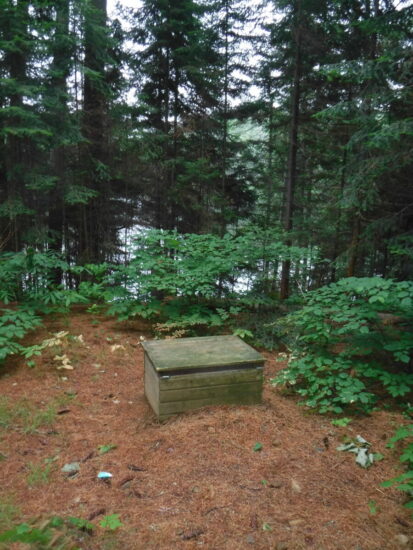
After breakfast I do the dishes and start packing. The canoe loaded; I paddle the short way to the portage take out thinking about the long carry ahead. It’s going to be light on brain and heavy on brawn and I tell myself not to make more of it than it deserves. This concern of mine will be silly to many paddlers. They don’t know me, but you remember me: I was that kid in school gym class who couldn’t do anything, sports, exercises…anything. The one and only time I accidentally got a basket in an informal basketball game, the entire class erupted in cheers at so remarkable and unexpected an event, one they knew might never happen again, and it didn’t. Let’s just say that physical was never me until the last few years. I made up for it in other ways.
A sudden gain of weight I experienced when I quit smoking some years ago shocked me into acting. The mirror and the scale connected to my vanity. I started going to the gym 4 days a week combining weight training with cardio and took off 25 lbs combing calorie cutting and exercise. The calorie deficit took off the weight and the exercise built a lot of what was left into some muscle. You could say I worked at it. I continue to work out 4 to 5 days a week. It didn’t and doesn’t feel like work. As I beat the word “work” to death, it feels good, a personal challenge I’ve taken up and am accomplishing. It’s never going to be finished, just accomplished. I still can’t sink a basket or play any sport well, but that kid from the gym is getting his own back in his own way. So he is on this portage, knowing there are younger and better lifting heavier at the gym, younger and better taking longer portages than this in one carry, but believing there are only a few from that school gym class long ago who would stand here now, alone, reflecting on where they have been, how they got here, willing and able to pick up this load and step forward. Little things can mean a lot. A canoe trip is a chain of little tasks, the paddle’s dip in the water, the next careful step on crooked ground, the eye scan search ahead to set direction. Big tasks may get the headlines and motivational posters, but small ones imbued with our own meaning, while unheralded are huge.
OK. So there.
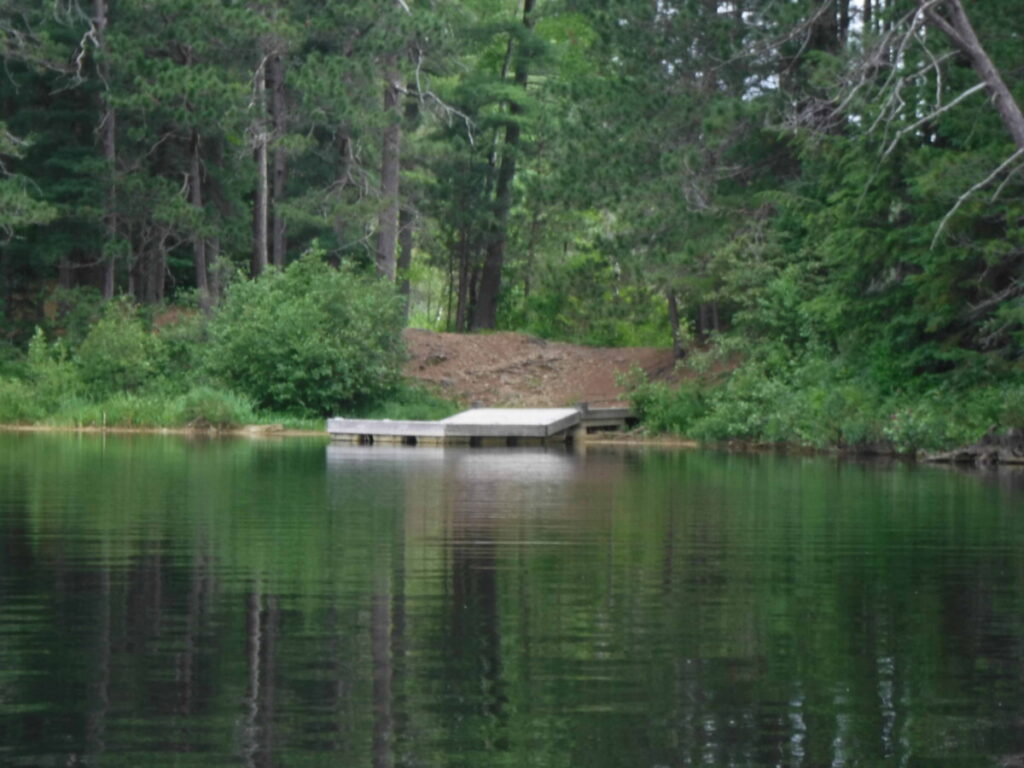
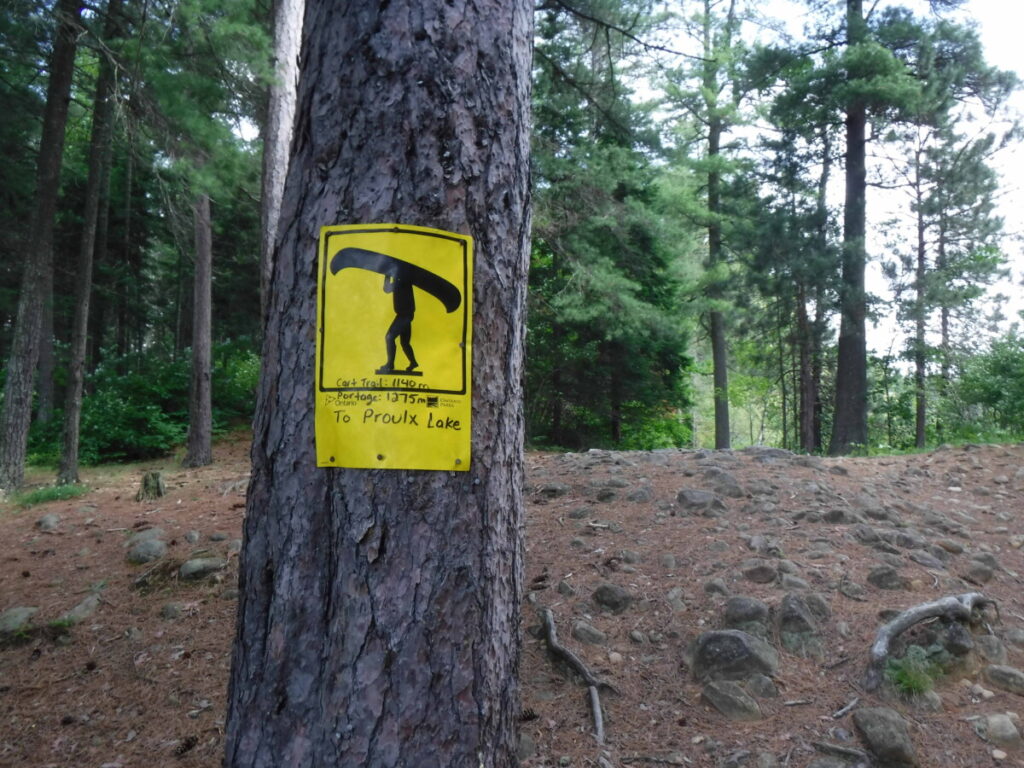
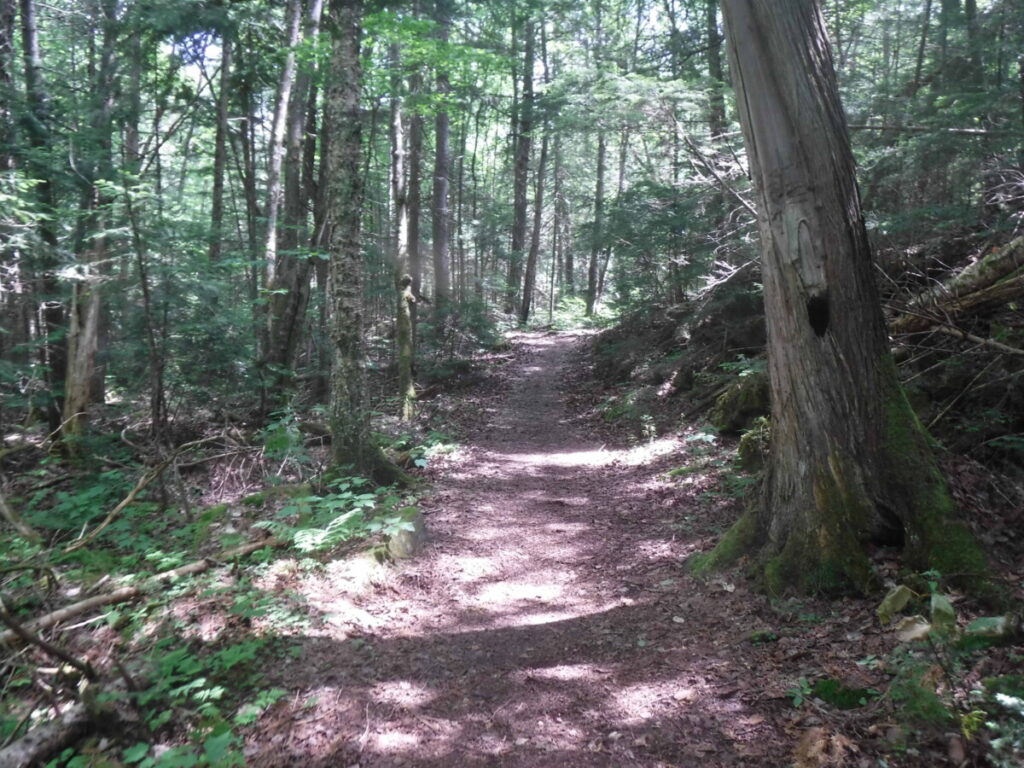
Even with a GPS, seeing the mouth of a river for the first time is usually difficult for me. As I paddle closer to where the Crow River should be, I still don’t see a break in the shore of tall grasses.
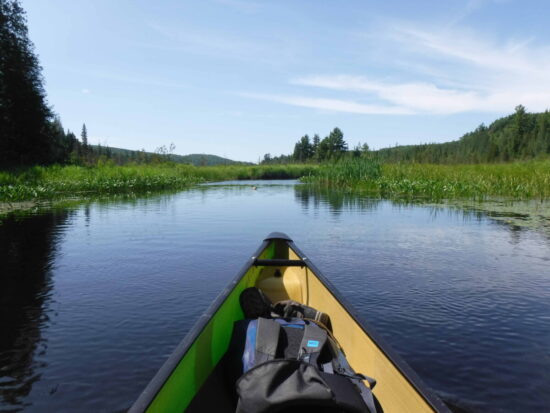
It isn’t until I am almost on top of its GPS coordinates that I notice the parting of the grass into a channel. The wind continues to blow in my face, but the water is calm as I take the winding path of the river to Little Crow Lake. After a while I can see where I think the end will be by the slopes of the surrounding hills, but it is elusive, with yet another bend to take me away rather than toward.
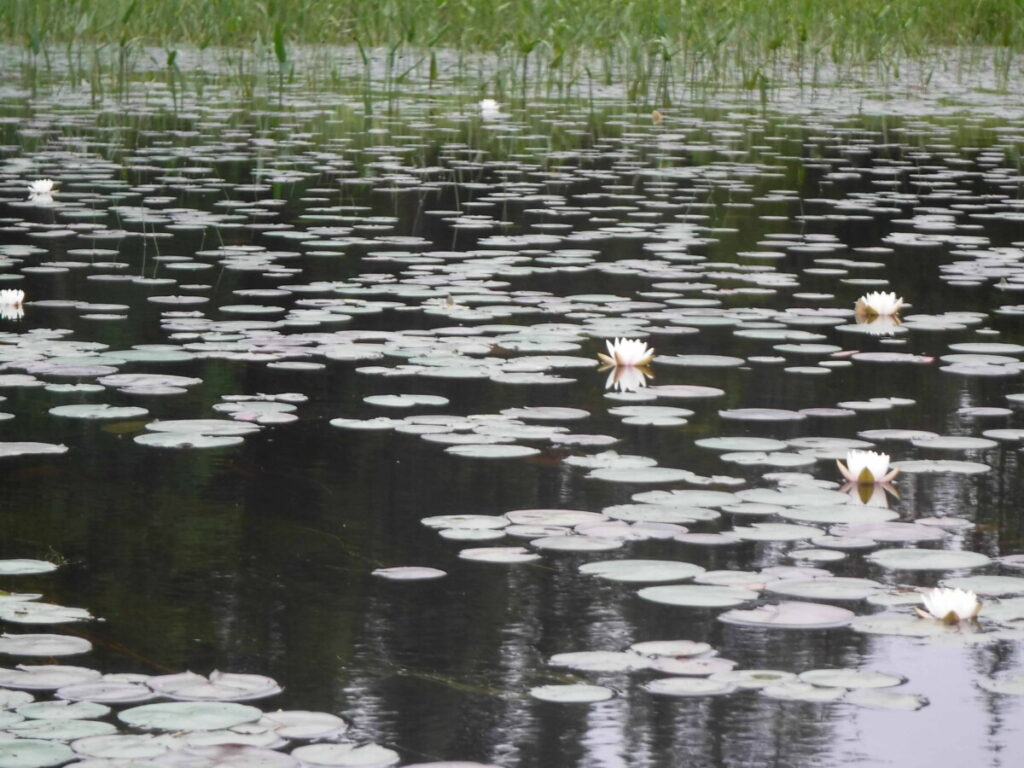
After an hour I emerge onto Little Crow Lake which will take me to get to the continuation of the Crow River into Big Crow Lake where I will find a campsite. Too confident and enjoying the landscape rather than paying attention, I discover I have paddled right past the turn toward the connecting river and must double back.

I enter Big Crow Lake in half an hour with the wind coming up diagonally at me from the North and picking up. I can see a beach on the far shore where one of the hopefully available campsites should be and paddle in that direction. The wind increases and the waves are now about one foot, not too bad except that I will eventually have go broadside to them to get near to the far shore. I keep my eyes on the waves, turning left into them every now and then, whenever a rogue one higher than the rest comes through. It’s been a long day and I concentrate hard on what I do, thinking this is the time, almost to my destination, that becoming relaxed and careless will cause a dump. There are almost no waves near the shore.
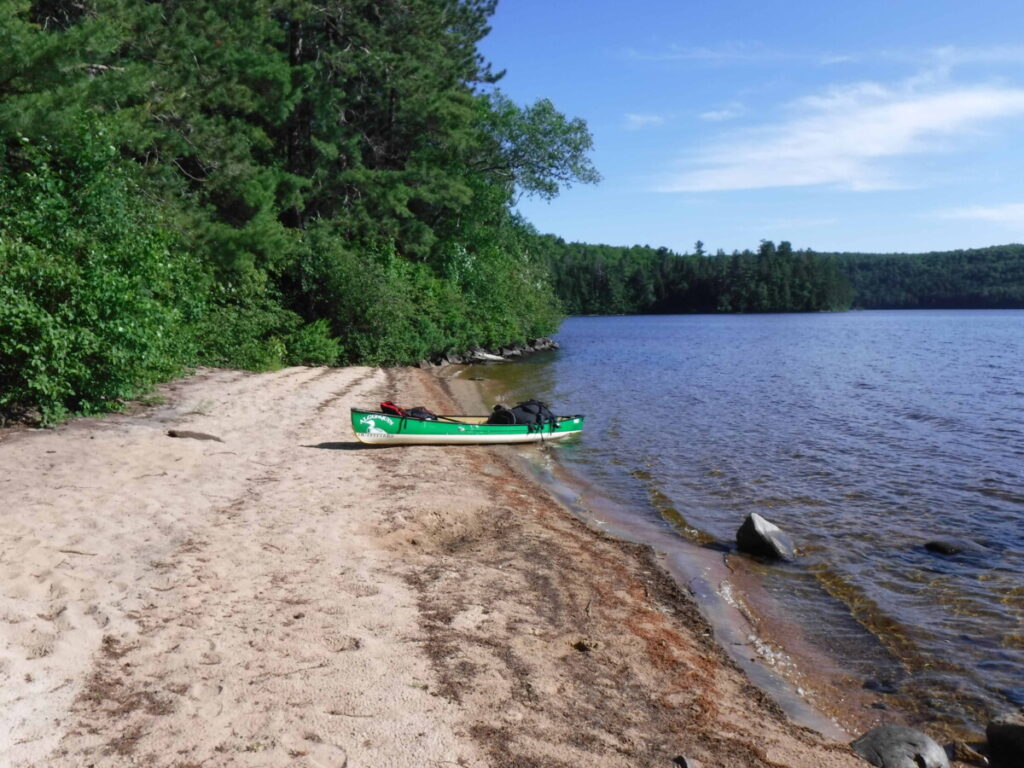
Finally, the bow is on the beach and I put one foot out and down on the sandy bottom. It’s been 4 ½ hours non-stop since I left the portage. I wait a moment to get my balance on the leg in the water and make sure both legs are going to work properly. One time I almost dumped at a landing by forgetting that my legs needed a little time to adjust to standing again – a quick exit landed me alright, right into the water, the canoe at least remaining upright and dry.
I look over the campsite while I drink lots of water from my refilled water filter pouches. I go through about 2 liters. I have been drinking water all along but still need to fill up, telling by my dry lips. The site’s biggest asset is its beach which I hope to be relaxing on in the sun between excursions. There is a good fire pit and a few spots for the tent. I decide to put it up on a soft needled patch that slopes slightly toward the direction of the beach, level enough for comfortable sleeping, but sufficiently slanted to spill any rainwater away. I have arrived around 5:30 and about an hour later everything is set up, in time for a glass of wine and then dinner. As the sun gets low I relax on the beach enjoying once again the solitude and beauty of being in the back country, watching the shadows lengthen and the sky colour itself before turning dark for night. Before it becomes black I stow my food canisters and hang a dry sack of the food that wouldn’t fit in them.
I decided to buy a bear vault which is a large PVC canister designed to be impossible for bears to open. I was tired of looking for suitable branches to hang my food sack. However, bringing too much food has forced me to use both. The canister I place under a log a good distance from the campsite and nearby I string ropes to hoist the food sack. I recognize that I am always bringing home unused food and that next time it will be the canister only. We’ll see.
Into the tent about 9:30 pm I settle down to read. I’ve made some concessions to the modern world for these trips, a lot, if I consider how my gear is made, for example the Kevlar carbon fiber composite for the canoe. I also have brought some electronics, for safety and for my entertainment. Most important is my Garmin InReach mini, a satellite communicator that allows me to send a receive emails from anywhere in the world. It’s how I let everyone know I am fine and enjoying myself and in the worst case will send an SOS to search and rescue. Then there is my Smartphone which when connected by Bluetooth to the InReach allows me to easily compose and send email, check my location, plan routes and see the latest weather report for my current location. It also holds some movies I’ve downloaded from Netflix. My e-reader full of books and the movies are my late-night entertainment. I still carry paper maps and a compass, essential if the electronics fail. I keep the electronic devices charged with a power bank. So, I’m not completely rough in the bush. I fall asleep reading.
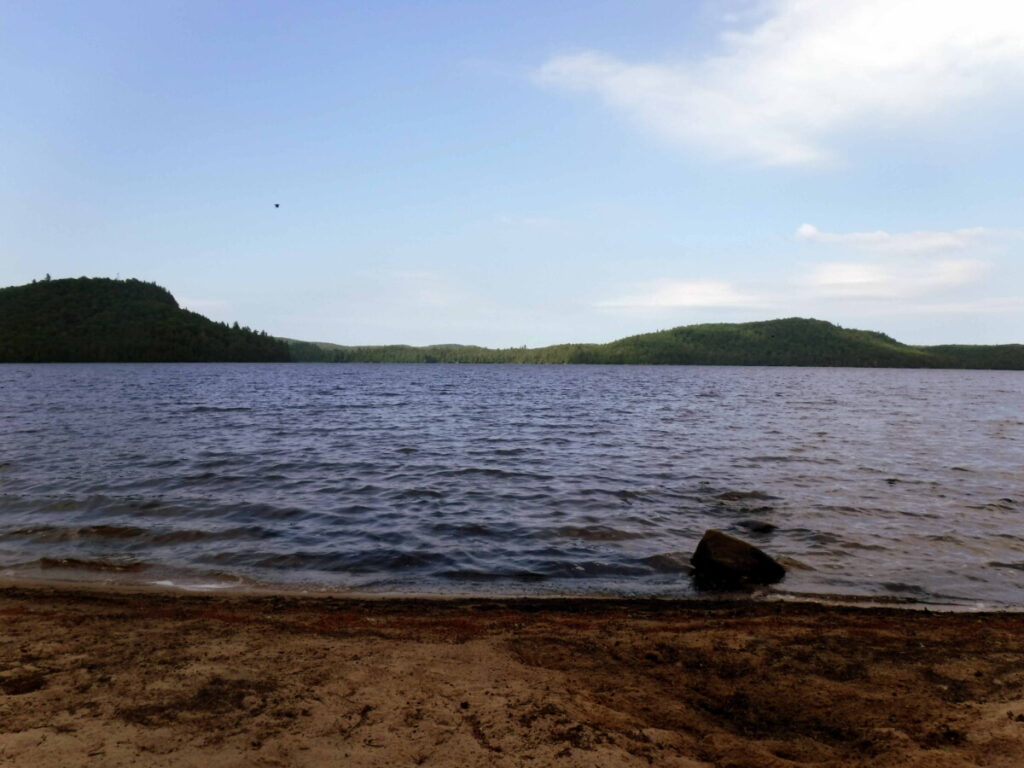
During the morning the wind picks up, coming in from the north west, creating chop and some white caps on the lake. I’ve been up for a while, morning rituals, breakfast and wash up finished, and am sitting on the beach looking toward the south west at the fire tower rising on top of a step hill on the shore about half a kilometer away.
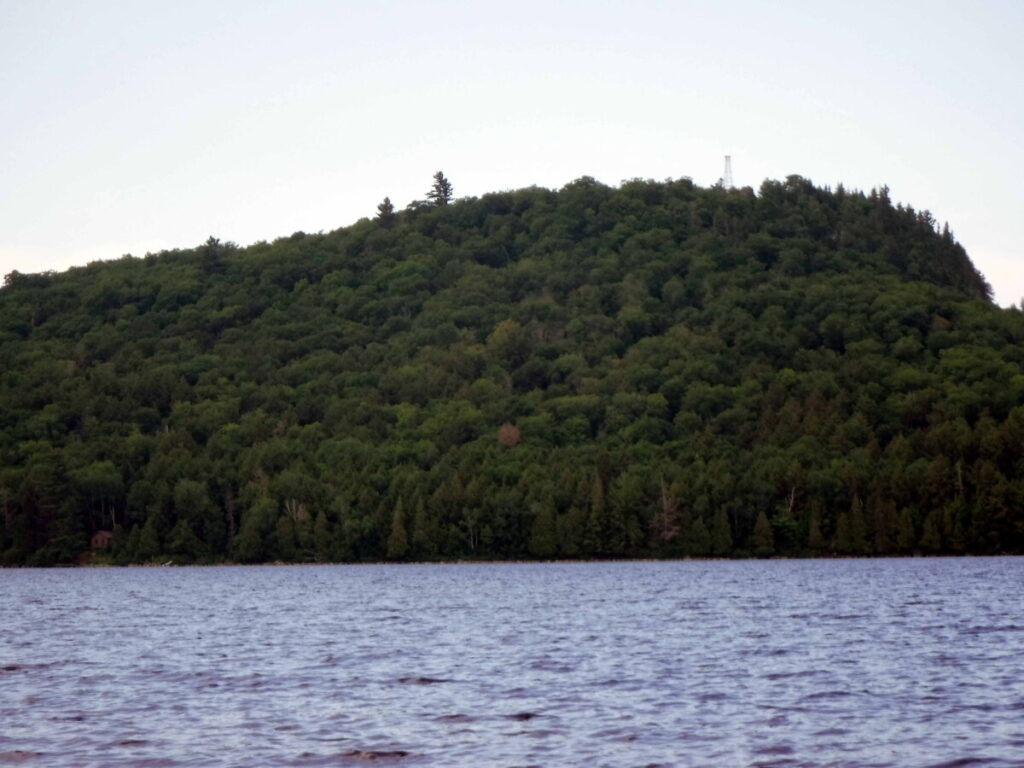
All that’s left of the tower is its steel frame, the wooden observation platform at the top long gone, since such towers became unneeded with the advent of satellite hot spot observation[2]. I plan to hike up to its base to get a view of the surrounding terrain. The trail to the top begins behind a ranger cabin which I can see. I ponder the waves and white caps on the lake: going straight toward the cabin will put me broadside to the waves. I decide a zig zag paddle route will be best, longer, but keeping the canoe diagonally to the waves, not rolling sideways. I wait until noon, pack a lunch a head out.
The waves are manageable although the wind makes paddling harder. I head southwest and then make a left turn toward the cabin when it is at almost 90 degrees, heading for it with waves almost directly behind me, padding strongly to keep control of the canoe as it is pushed forward with each swell. I see another canoe with two paddlers leave the shore at a campsite not far from my own but closer to the cabin toward which they are also heading. Their larger tandem canoe with two paddlers is less prone to be upset by the waves than my solo shorter light weight and they are making good progress. We reach the cabin at the same time.
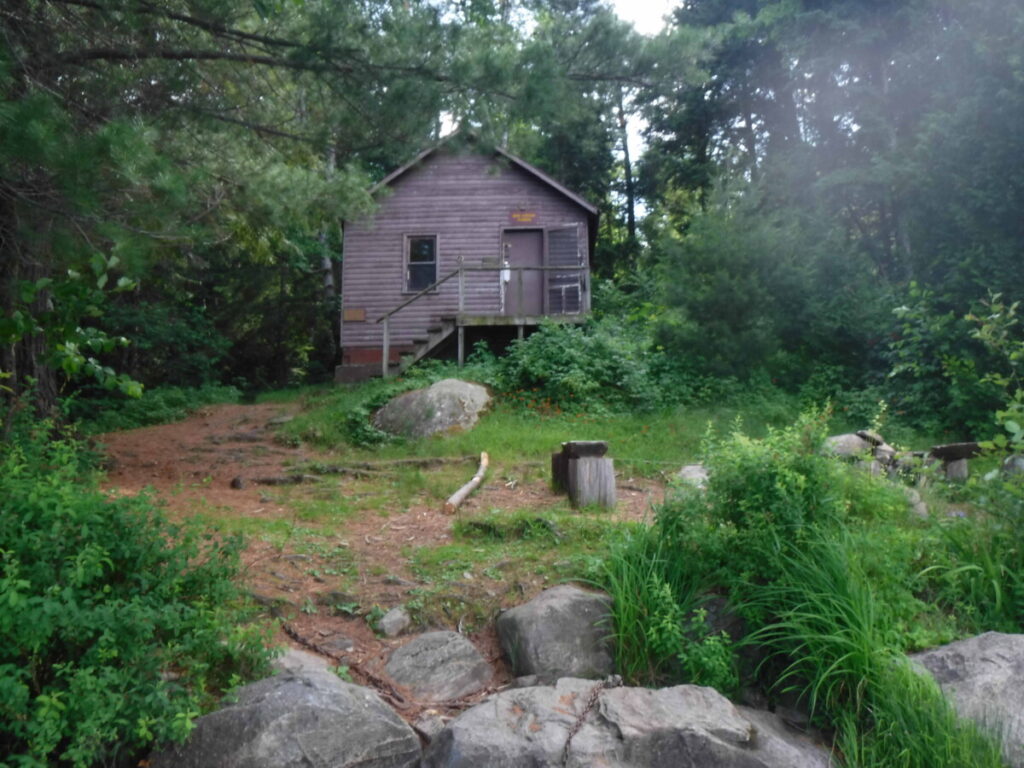
The landing in front of the cabin is rocky, so much so that instead of a place to pull a canoe out there is a large chain, presumably for mooring of some sort. We pause in our canoes near shore and strike up conversation. They are two guys from Quebec and had booked the ranger cabin to stay but abandoned it for a campsite because it was infested with mosquitoes. The cabin and its surrounding area which face north east are almost always in the shade. To me, it does not look inviting. Perhaps it would be better in the fall when more light would get through the trees. The guys are happy with their campsite and are stoical about the $60 a night they paid to reserve the cabin for three nights. Although yesterday I had not seen them, they had arrived on the lake just before me coming from another direction. Counting on the cabin to be livable they explored the nearby easterly continuation of the Crow River first, where they were when I arrived and set up camp. Returning to the cabin they saw my canoe and kayak paddle on the shore, showing my occupation of the beach site I assume they would have preferred when rejecting the cabin. Nonetheless they say they are happy with their campsite and are excited about the cow moose and calf they had seen nearby on the river. It was about then I notice that the sky is changing dramatically in the distance.
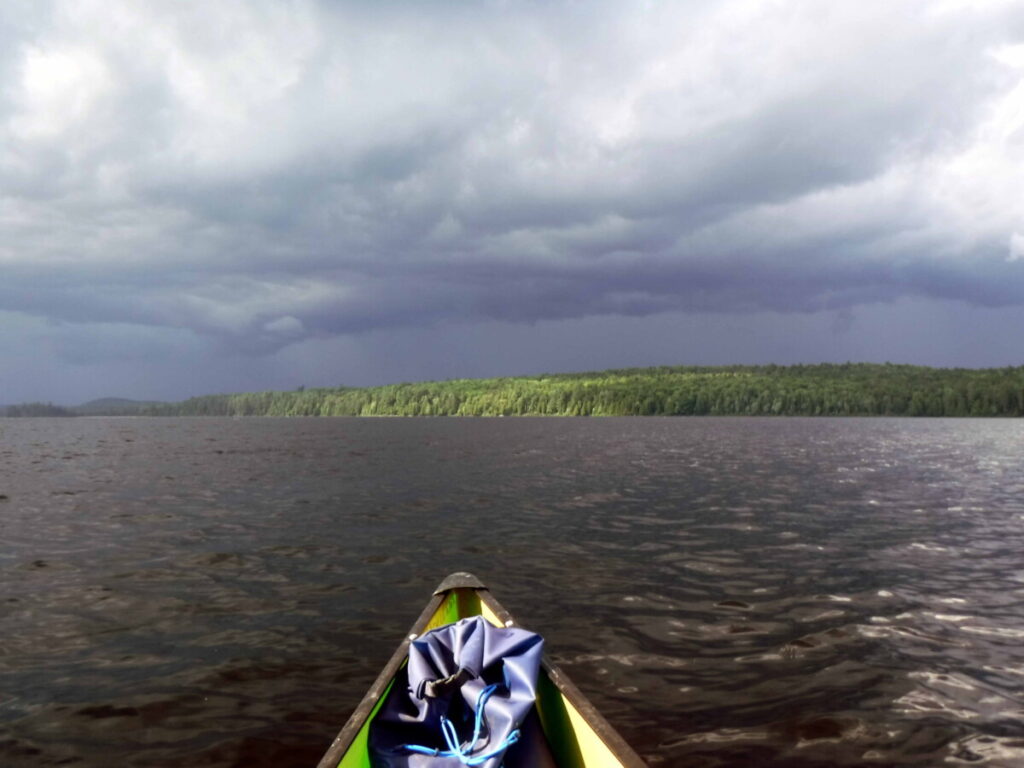
Huge dark ugly clouds are approaching from the northwest. It is time to stay put for who knows how long or go quickly. We decide to make it fast to our campsites. I head toward an imaginary point beyond my campsite so that I could move diagonally into the waves again, planning to turn quickly at the right time to ride the waves toward my beach. This is when my kayak paddle makes an important difference: paddling full out I can pick up good speed even against the wind, impossible to do solo with a traditional paddle. The clouds are moving in quickly and as I get close to where I will turn I see the signals of a strong wind approaching by the spay coming off the waves and the bend of the trees further along the shore. I ready myself for some furious paddling. I turn away from shore straight into the wind when the gusts hit, keeping good control of the canoe again grateful for my kayak paddle. I’m not as far past my beach as I would like but decide to make the turn to shore now, the beach being broad enough that I will hit it somewhere if not at the exact spot I wanted. It turns out that I can maneuver on the way in and end up close to my target.
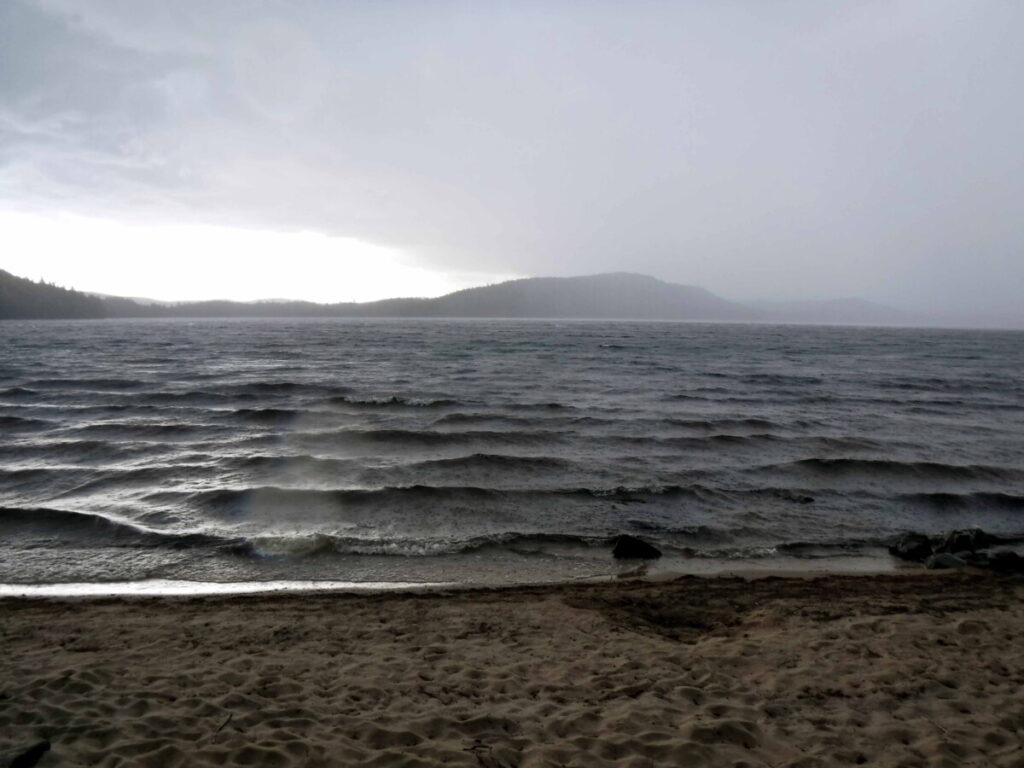
The bow comes up onto the sand and I put one foot out on the bottom as the first rain drops fall. I turn to look for the other guys and their canoe but see nothing. Their campsite is closer to the cabin so I am pretty sure they are back safely, scanning the water for any signs of a dumped canoe to be sure. I pull up and turn over the canoe as the rain hits in a full hard downpour and I scramble into my tent where I relax reading while the wind and rain continue and thunder booms far away, then close, far away then close again for the next few hours.
The storm passes in time to prepare dinner. Out of the tent I first check for any problems around the campsite. It is obvious where the water has been running off to the beach and I am pleased to see how the runoffs avoided my tent site, just like I planned…yeh, right. Everything is OK.
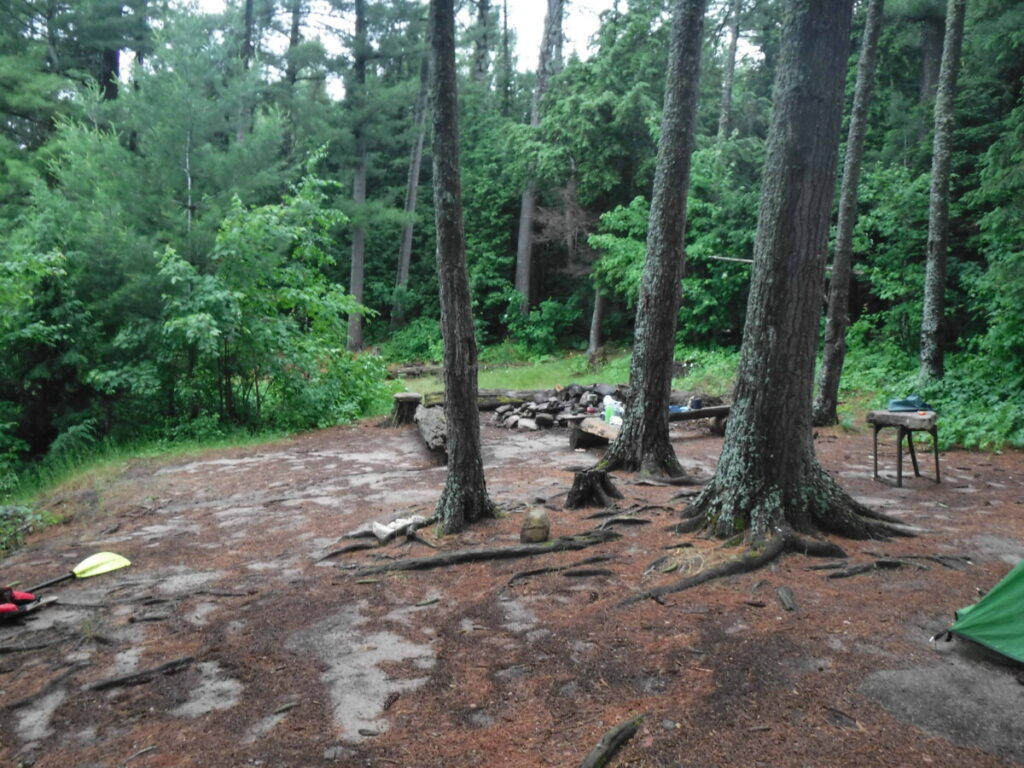
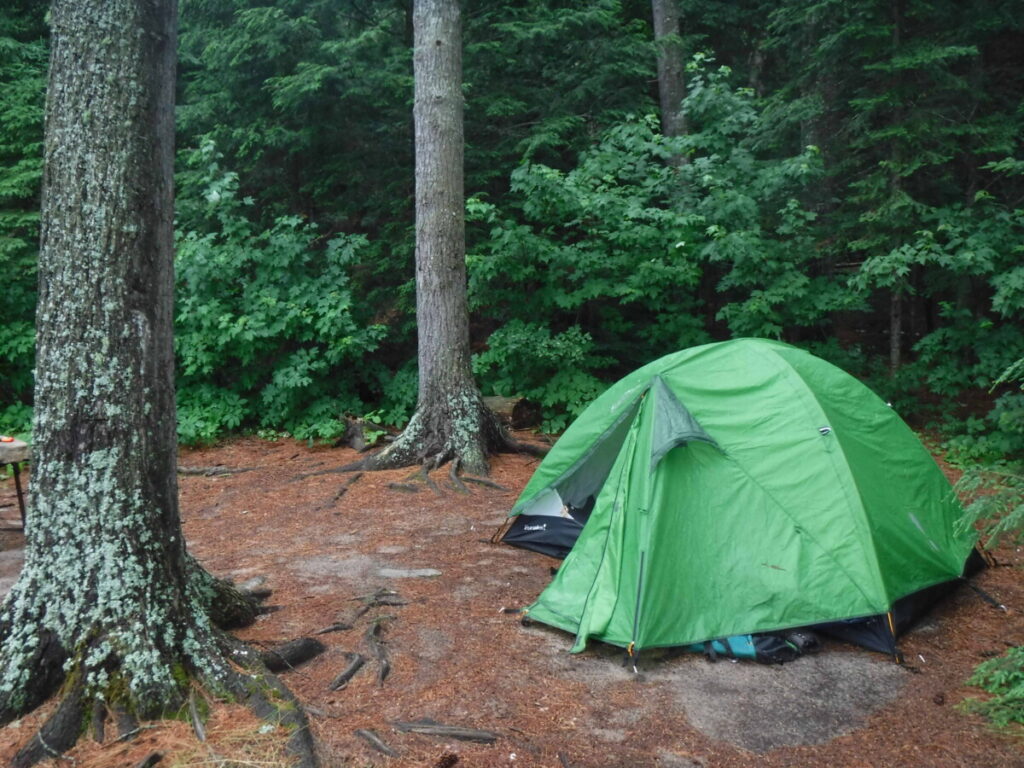
After dinner I enjoy some wine sitting on the beach by the now still lake and relax watching the sun set. I get the latest weather update, because I wonder if there is more storms on the way, in which case I will consider leaving early in the morning to get closer to home. I get the latest weather with my InReach Mini. The report looks good so I decide it will be OK to stay where I am unless the sky looks bad in the morning. I don’t want to get trapped here by severe weather when I am scheduled to leave the day after tomorrow.

I can send an email, so no one is worried, but I prefer to return as planned. The time passes languidly in a beautiful evening until I cannot put off stowing the food any longer. I pick up the canister and food bag and go to my hiding and hanging spot, the ropes already strung into the trees.

The spot where I hang the food bag is at the top of a slope up about 20 meters from the water’s edge, visible below through the tree trunks and brush. I hear a rhythmic splashing, the sound of something moving along the shore, look down through the trees to the shore and see a huge magnificent bull moose moving by in the direction of my campsite beach, gone from sight in a few seconds. I have seen many moose before always cows grazing in wetlands. This is the first bull I have seen and am impressed with his size and large rack of antlers. Pity it all happened too quickly for a picture. I go back to the campsite immediately hoping I will spot him, and hopefully not in the middle of everything. Seeing nothing I go down to the beach and there are the two guys in their canoe slightly offshore.
“Did you see the moose? We were shouting to warn you. He went up into the bush next to your campsite.”
“Yeh, I saw him. I was just doing my bear hang over there above the shore when he came along. He is magnificent!” thinking the moose might have thought their yelling was directed at him and hence his hurry to get along the shore and into the bush.
“There is a cow and a calf who come down to the river every evening.” one of the guys says.
“He is probably in the bush circling back there now.” I reply with no intention of following him into the forest.
We talk a little bit more about how great it is to be here, even with a thunderstorm now and then. They will be on their way tomorrow morning and I will be alone again. We say goodnight and I return to complete stowing and hanging my food as they return to their campsite.
After breakfast I set out on calm water to explore the nearby Crow River that flows at this end of Crow Lake out toward Lake Laveille, kilometers away. I plan to go as far as a dam marked on the map and perhaps hike the old growth pine trail near there. I paddle past my neighbour’s campsite and see them just beginning to strike camp. A little further and I turn into the mouth of the river enjoying the sun climbing the sky and the surrounding landscape of tall pines, purple wildflowers and white water lilies. The bends and turns that postpone my arrival at the dam are a pleasant gift of more time on the river, not frustrating delays when time is a challenge, rather than as if my pockets were full of it, fun to spend.
Near the dam is the hiking trail through the tall pines with it is said some of the tallest white pines in North America. My canoeing acquaintances had told me they walked it part way and it seemed no different than any other hiking trail. True or not I am persuaded not to take it considering how dense the mosquitoes are in the bush. The mosquito shirt I am wearing would help, but I dislike the mesh face covering when I am trying to see around me, the design restricting my peripheral vision. I use deet even though I don’t itch when I am bitten, because the cloud buzzing in my face and landing on my hands is annoying by itself. In camp I use a Thermacell repellent which works well if there is no wind. If there is a breeze the mosquitoes are not much of an issue anyway. The Thermacell is useless for hiking this or any trail because I would be constantly walking out of its protection which otherwise extends 15×15 feet in still air.
Turning back, I take pictures of anything that catches my interest. The bull moose will have to remain a mental photo as not it nor any others appear by the river. On the way to Big Crow Lake I didn’t use my camera much, determined as I was to keep paddling and get to my destination. I head back to the campsite with the idea of climbing that tower hill on my mind.
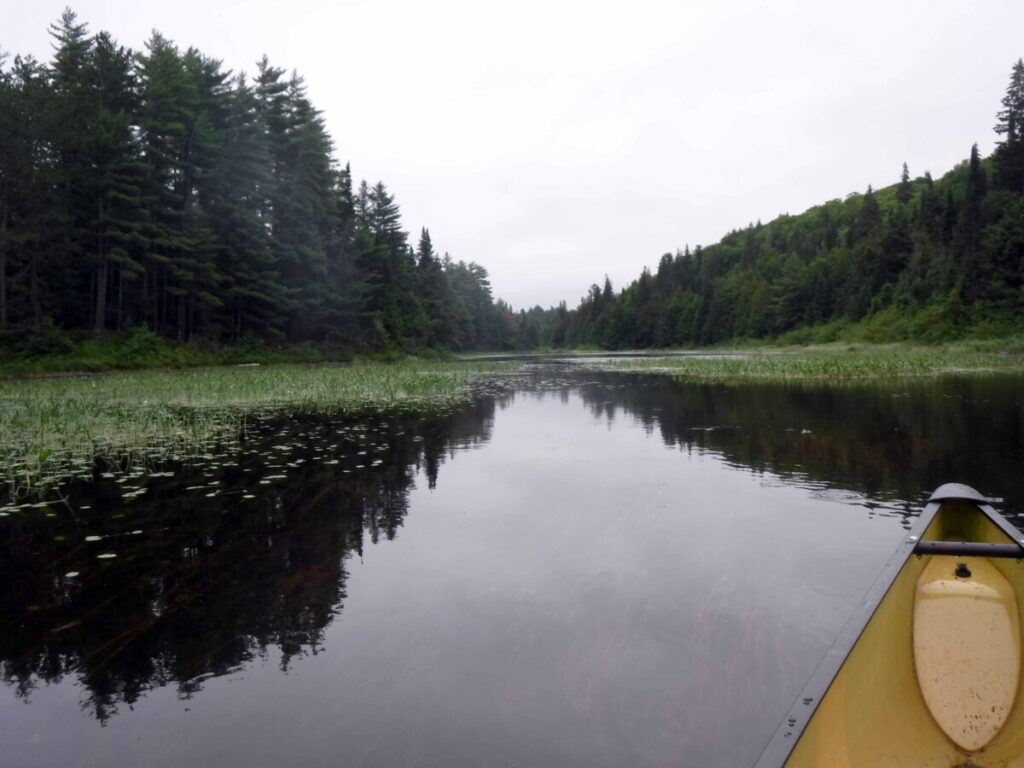
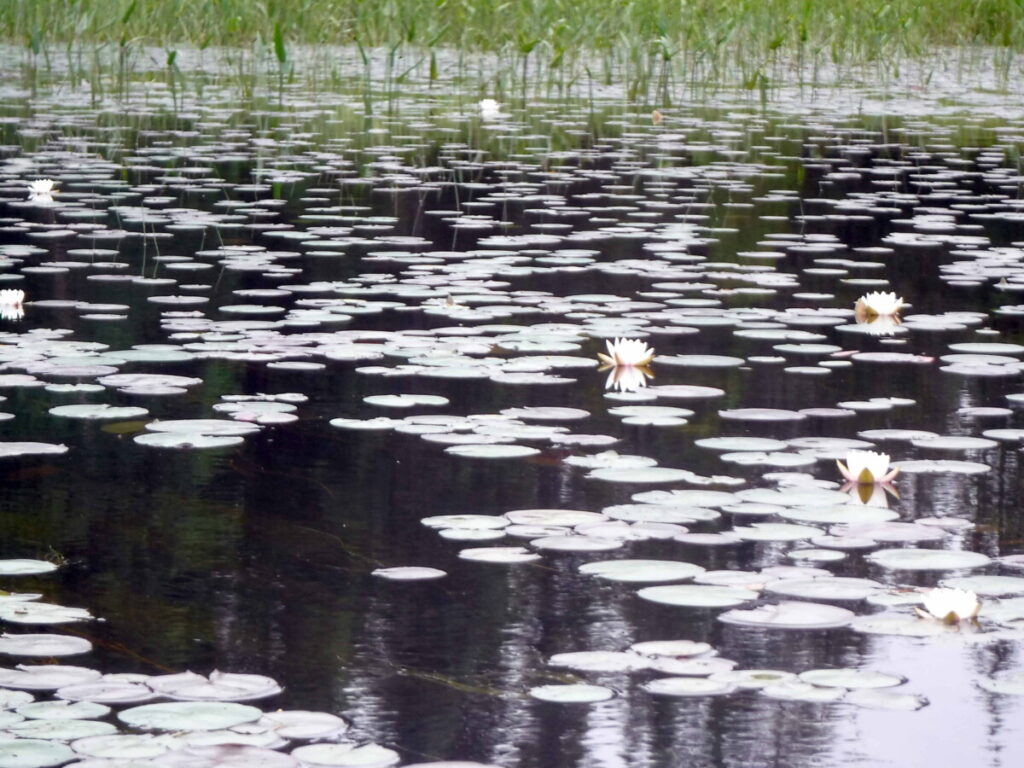
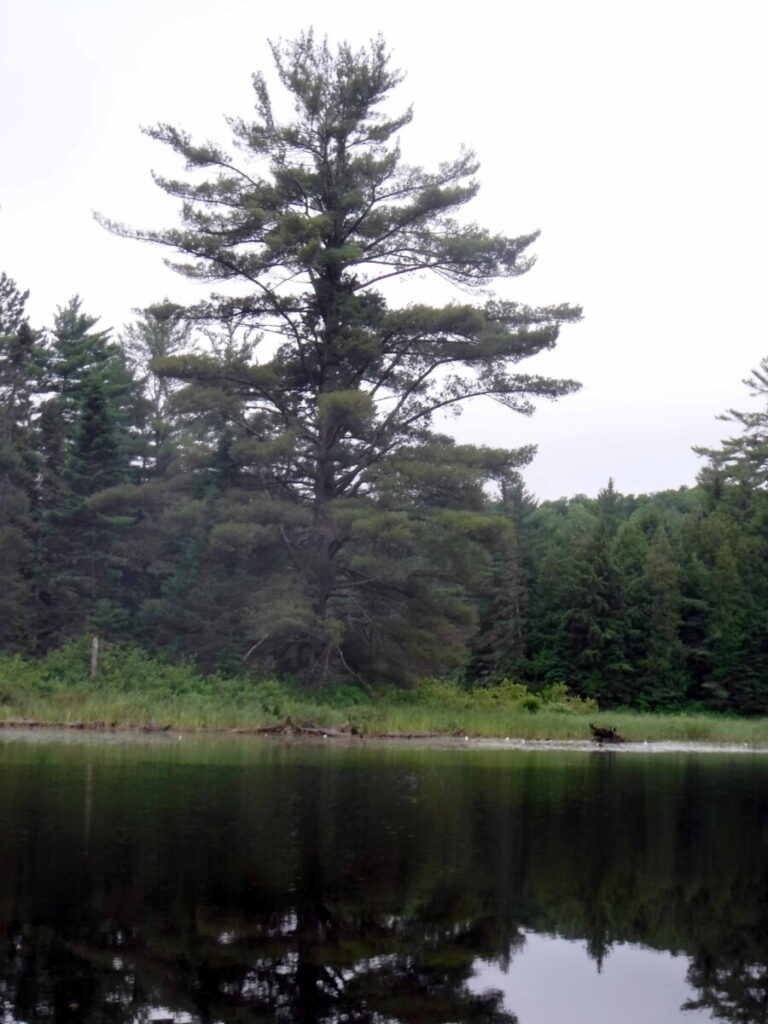
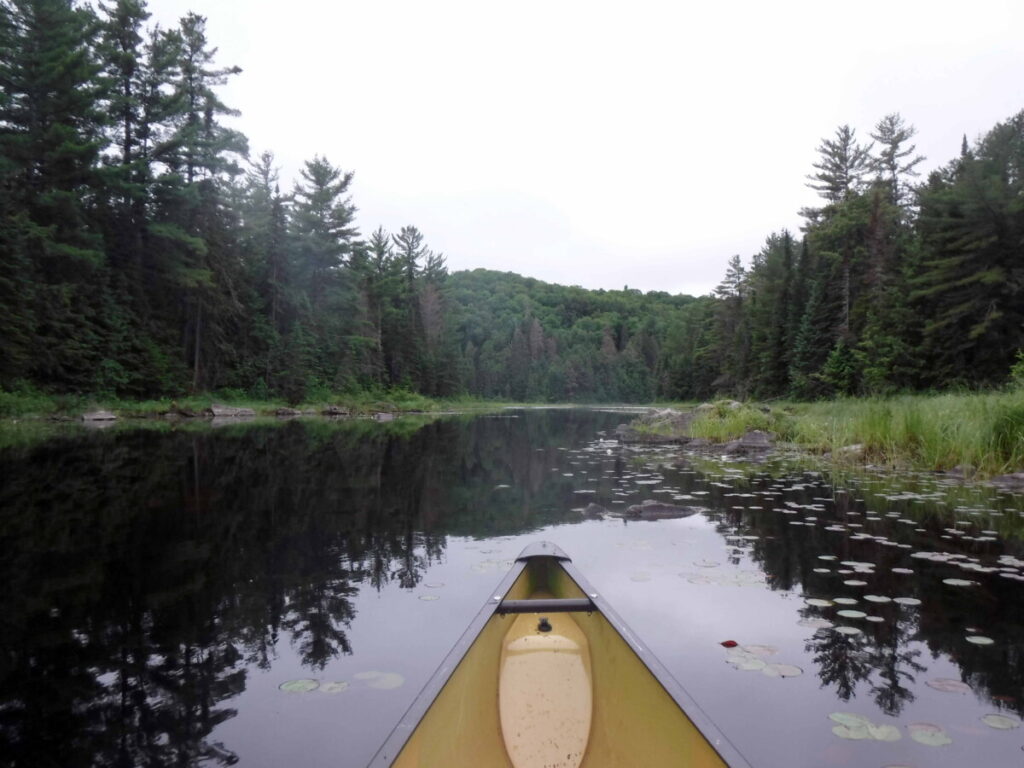
Later in the early afternoon I sit on the beach staring out the tower, thinking about what I’ll put into my secondary pack to have a nice lunch up there, some sausage, wine, bagels and cheese, water for the climb and the first aid kit just in case. Soon I load up and paddle to the ranger cabin, on calm water under blue sky with an occasional cloud passing by. Arriving at the cabin after an easy trip I contemplate how to secure the canoe. I am not happy with leaving it floating and secured to shore with the chain I saw earlier. Hauling it onto the ground in front of the cabin would be easy if there were two of us, but alone risks dropping the canoe accidentally on a rock. There’s a large flat rock about 1 inch below the surface near the shore. The sky and weather forecast are good, so I don’t expect any onshore waves. I decide to set the canoe on it and use the chain as a secondary method of keeping it tied to shore. That done I change from my water shoes into hiking boots and check out the cabin and its surrounds.
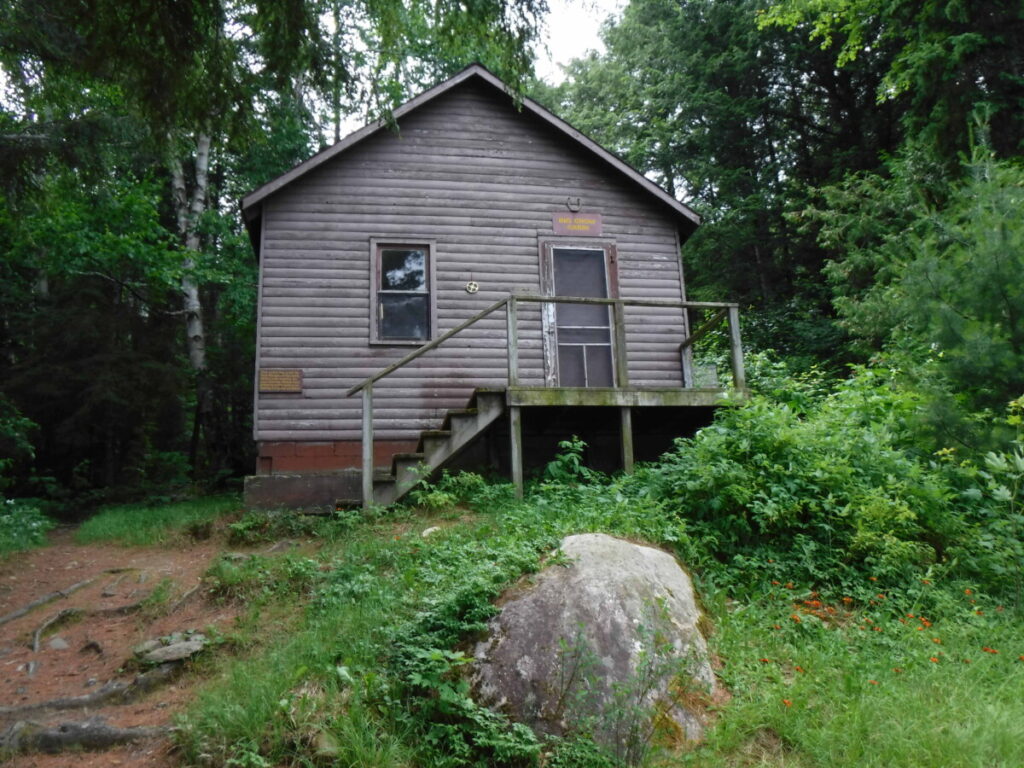
The cabin is locked, the key given only to those paying to rent it. Behind it is an outhouse, the door wide open, with a conventional toilet base as seating. I am looking for the path up to the tower which is supposed to be here somewhere. Finding nothing at the back of the cabin on one side I move around to the other seeing nothing of the path until I notice a narrow patted down trail into the forest, which on closer inspection is leading up the hill, easy to miss unless I was looking for it. It occurs to me that if I was living in this environment for a long time, so many things I would see clearly that without that experience remain hidden or whose encounter is sudden.
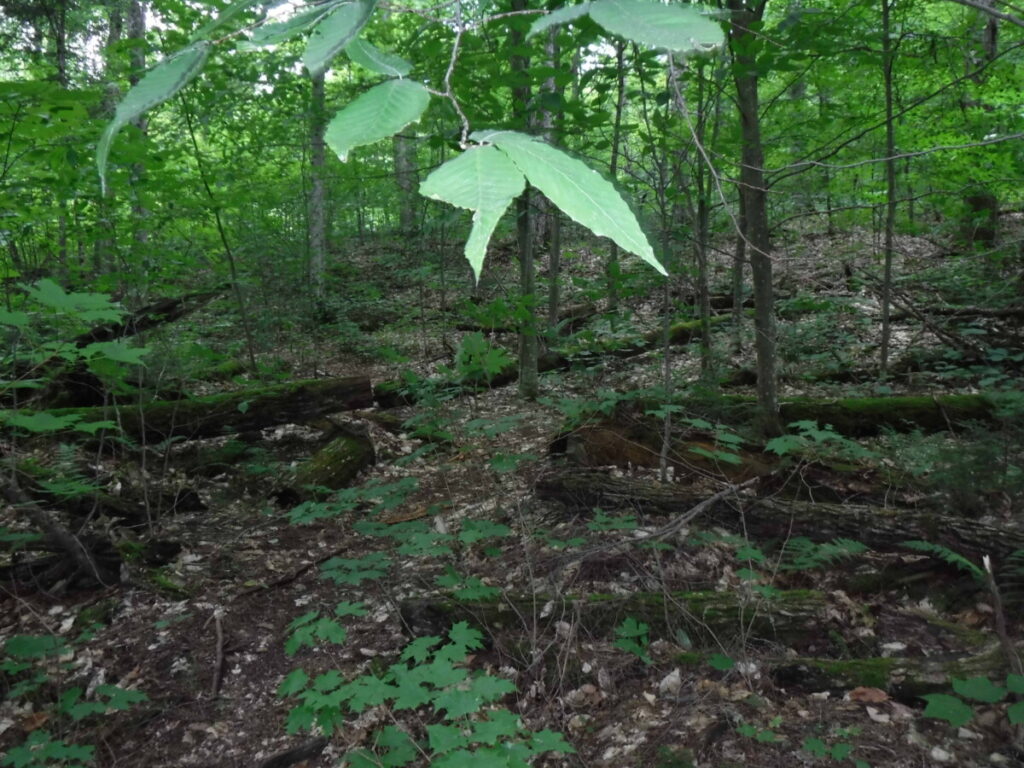
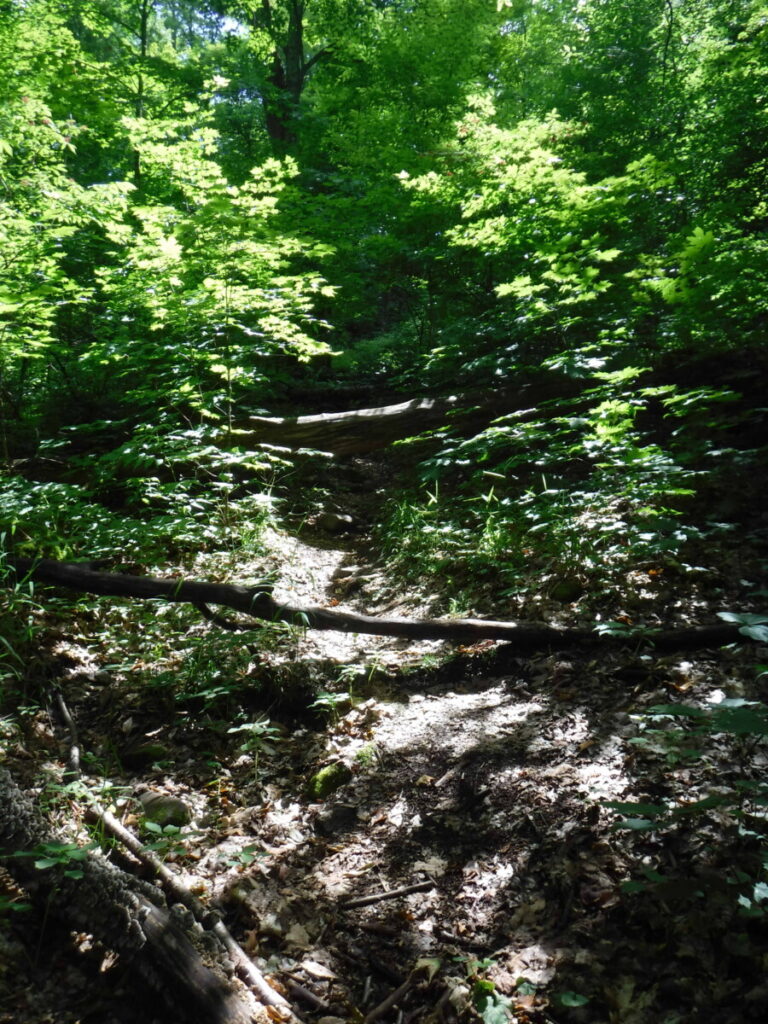
I take the path and it soon becomes steep. I notice that I have become more tuned into how its trampled leaves and ground show the way, winding ahead. Even though I am carrying only a light pack, I pause to rest a few times and drink water, which I didn’t have to do back on the level portage with the heavy pack. After a while I check the GPS to see if I am near the top – only halfway. I eventually come to tall grass, a sure sign I am coming into the open at the top and soon enough there I am and so are the mosquitoes. They weren’t too bad coming up or maybe I was too preoccupied to notice; or maybe they were following me for this moment of triumph. I scan in a circle for the view.
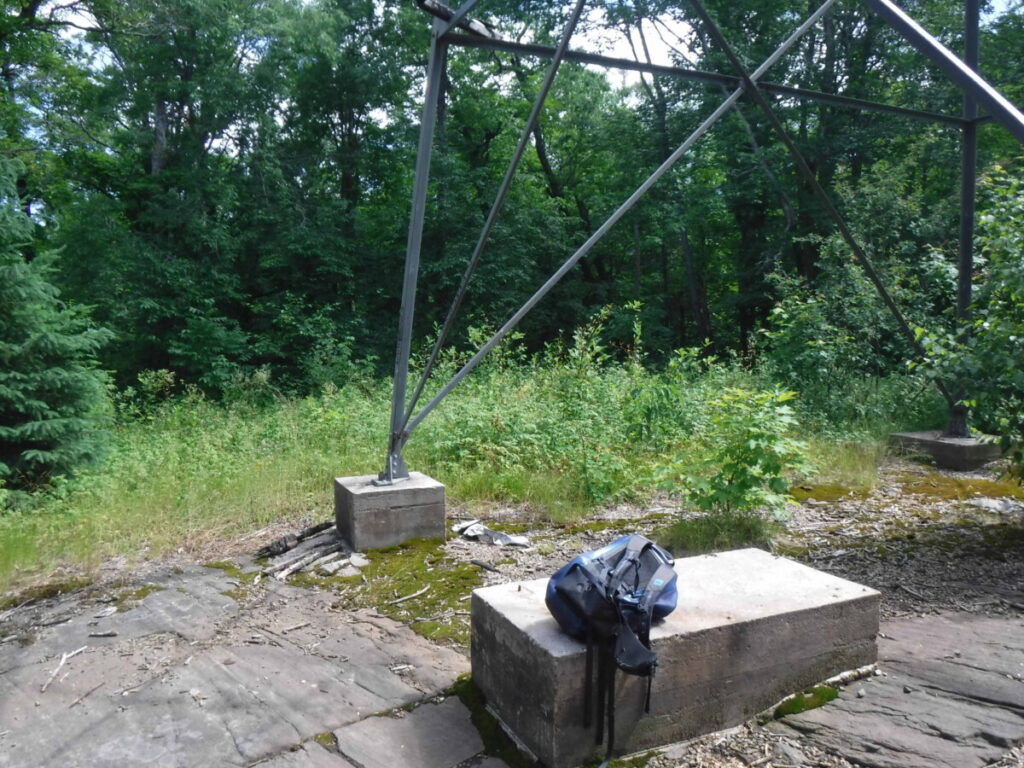
There is none. The bush and trees surrounding the tower base beyond its concrete pad in the tall grass are a complete barrier, making a view impossible without going part way up the tower.
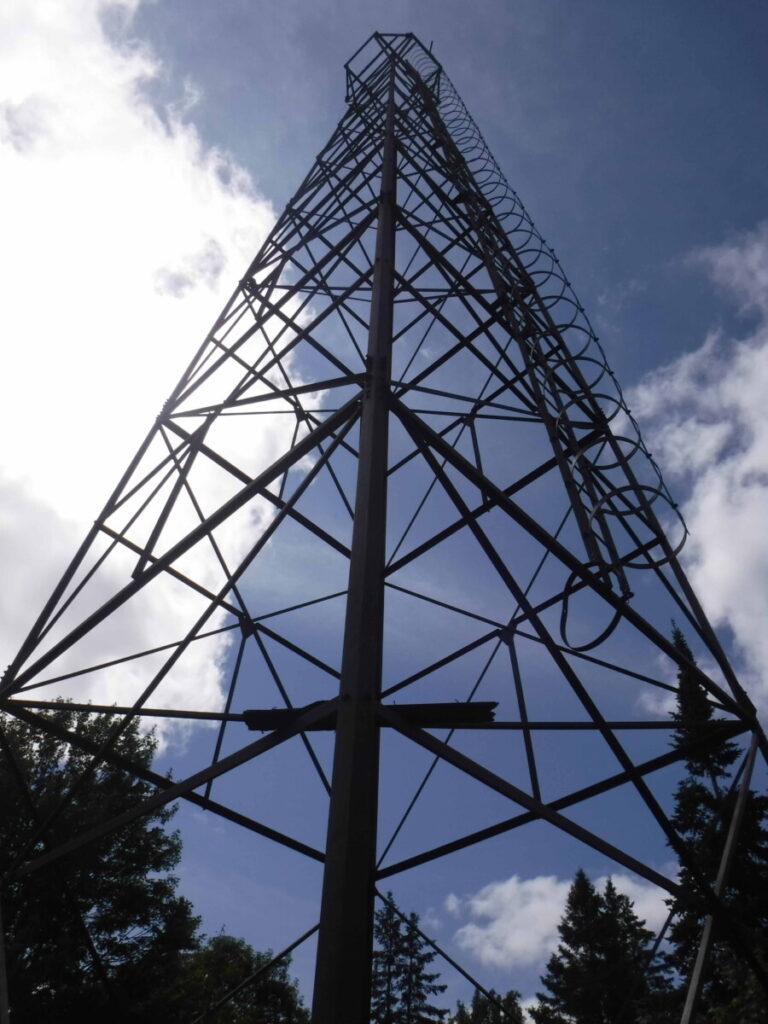
Wooden steps that would have accessed the steel ladder up the side of the tower were now long gone like the observation platform at the to. Going up a bit and looking out was impossible without grappling up the steel structure, dangerous and something I am not going to do. I take some pictures cancel my “lunch at the tower” and go back down the trail, satisfied anyway that I came up to see it.
Back at the campsite its perfect weather to relax on the beach, enjoy a late lunch with wine (again) and have a swim. I check the weather forecast with my InReach and tomorrow looks good for the trip back. I enjoy dinner, the evening and get a good sleep.
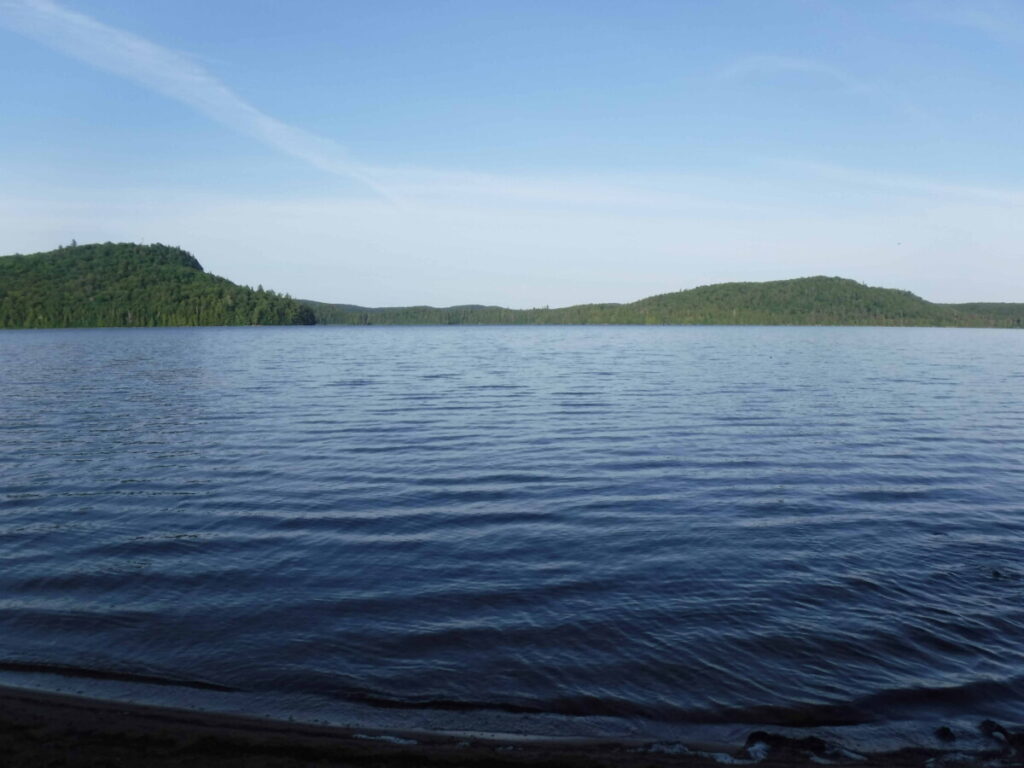
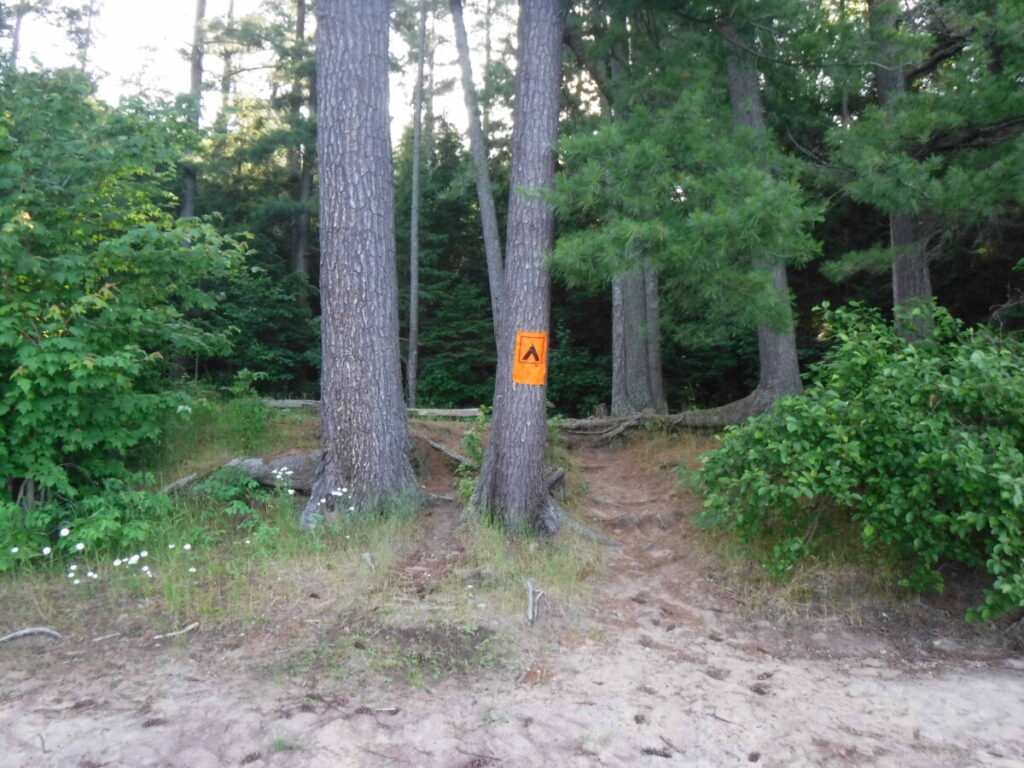
It’s a beautiful clear day with a light breeze, perfect for the trip back to Lake Opeongo. I have mixed feelings: I’ve been here long enough I suppose, but staying another day, I might walk that tall pine forest trail after all. I load up and leave, planning to take more pictures on my way back, with lots of time to reach a campsite before taking the water taxi back tomorrow. I hope that I can get the same campsite as a had on the way in because it is so close to the water taxi dock.
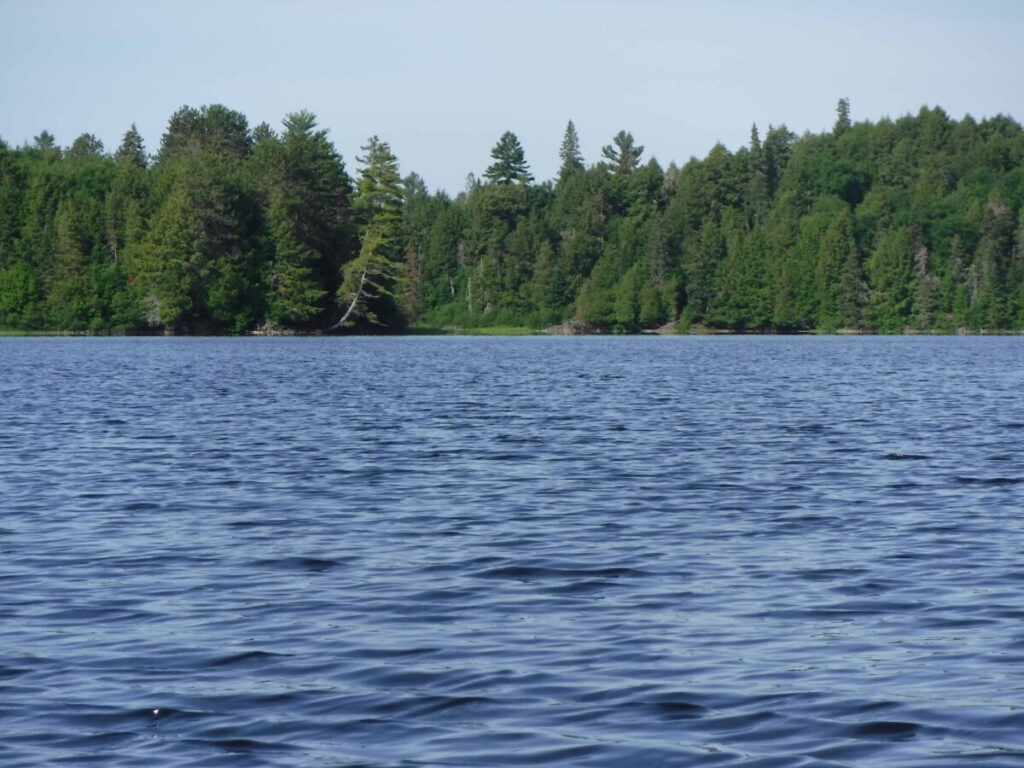
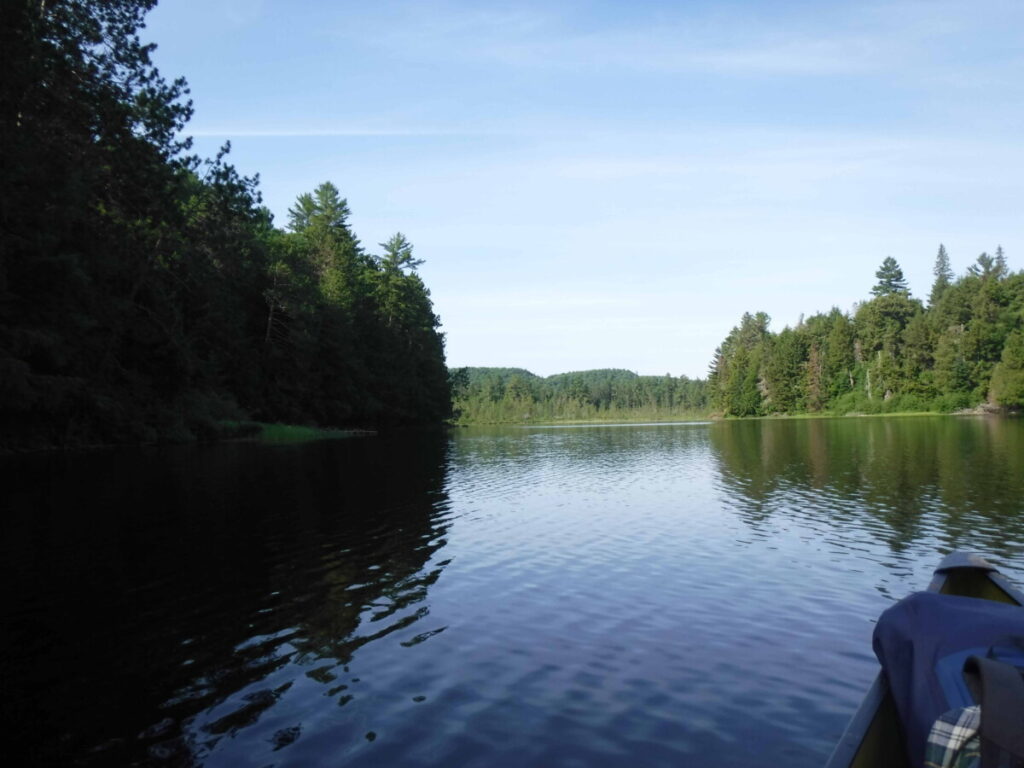
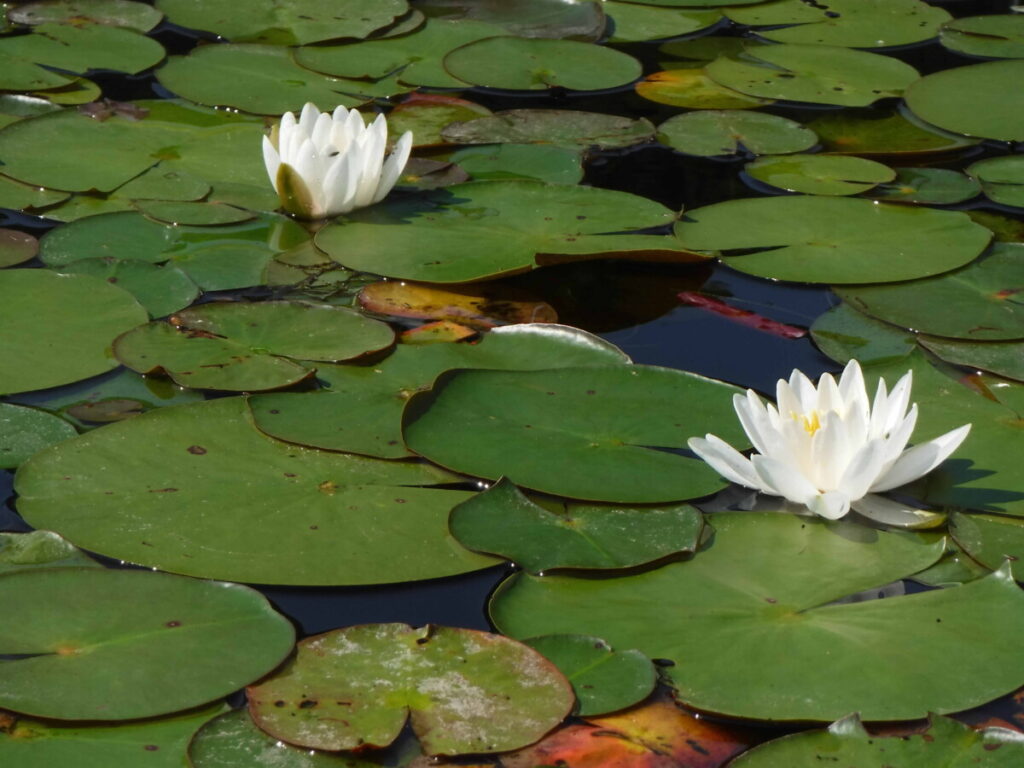
In half an hour I am across Big Crow Lake entering the Crow River on my way to Proulx Lake. I take time to stop and reflect on the water lilies wondering what they mean to Indigenous peoples. I see a beautiful floating flower. I am sure there is more to it than that. [3]
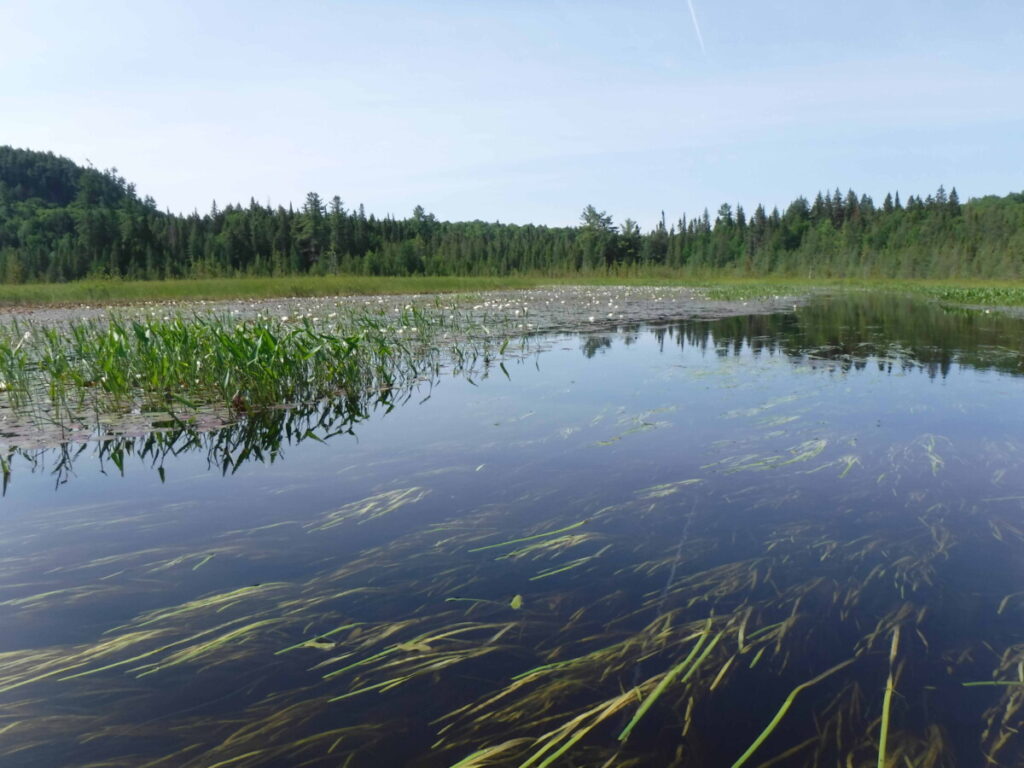
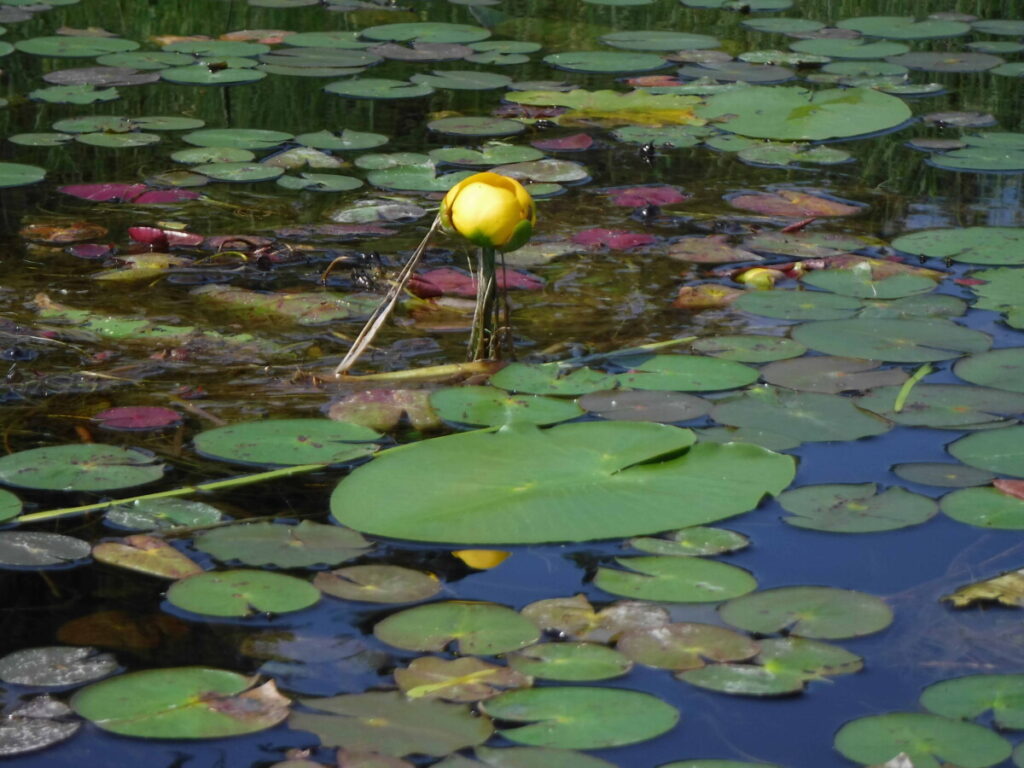
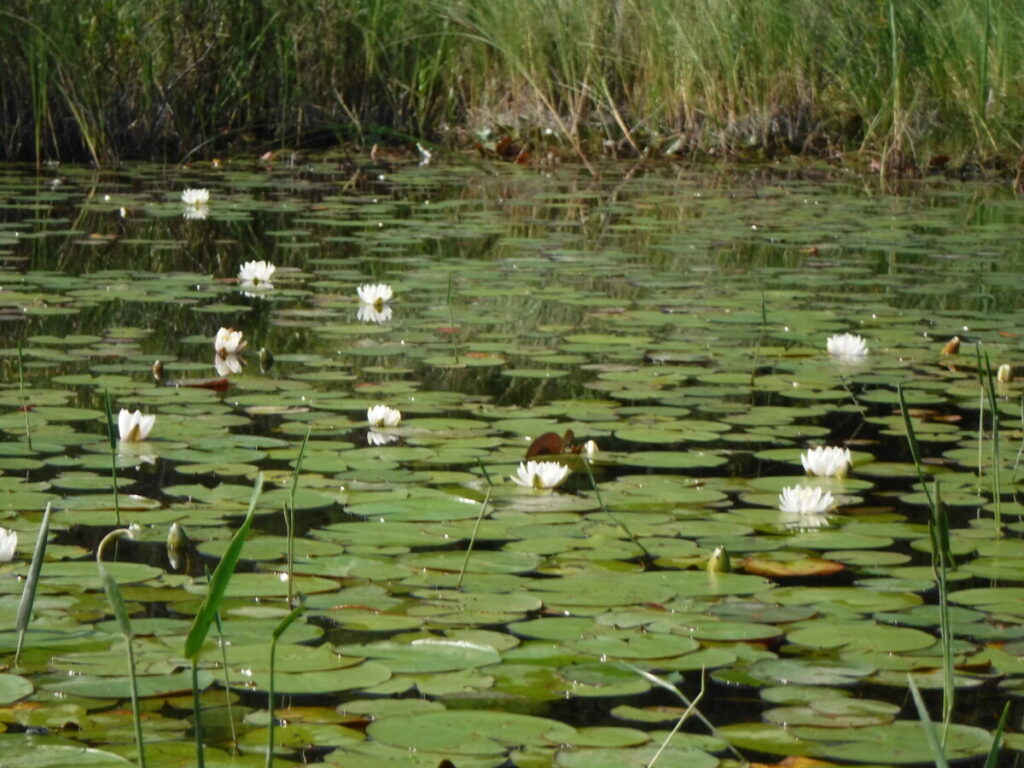
On the water the sun is bright and hot. There are no mosquitoes, even in the still air on the winding river. I see a small duck, not sure what kind, followed by about twelve little ones.
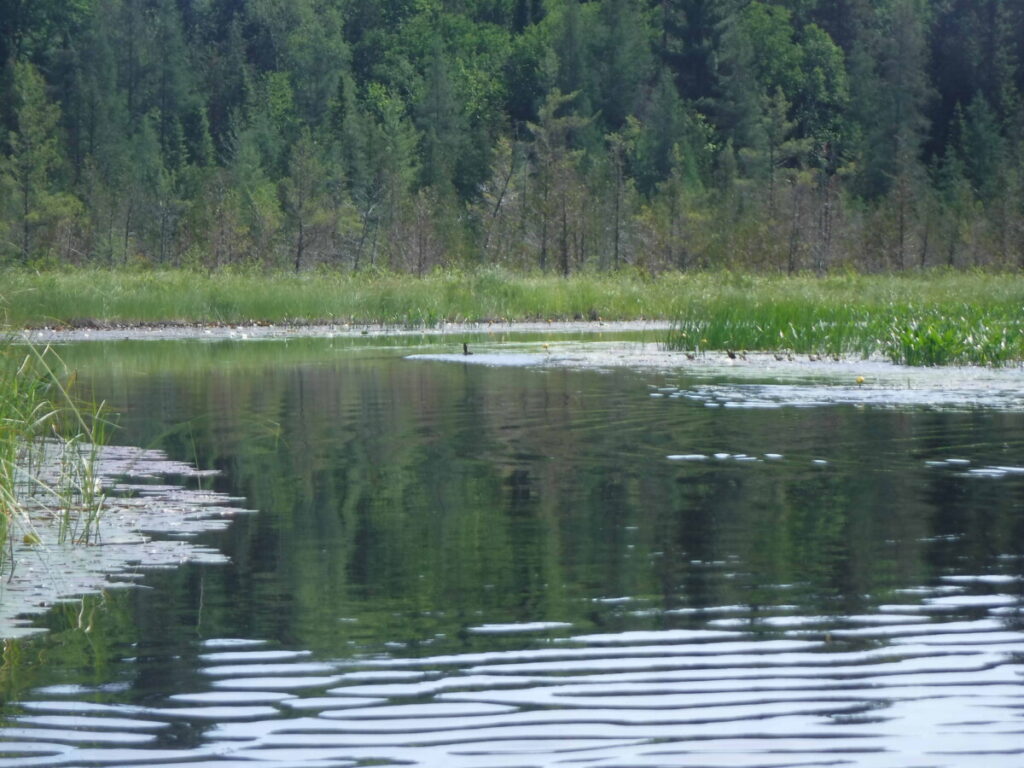
This is when I would like to have my SLR with the long lens, because the picture I take with telephoto on my waterproof point and shoot doesn’t show them clearly. I don’t bring my SLR on canoe trips anymore. Note the word “waterproof” for my Fuji point and shoot. Mom and the kids stay ahead of my canoe as I move quietly toward them in the direction I am heading. When I become too close they move ahead to lengthen the distance, mom flapping her wings and paddling, the little ones doing the same with wings no way near ready to work making them look like they are running madly on the water. Eventually they veer off to the left into the tall grasses. The mother reappears in front of me and calls. She continues on ahead leaving the young ones hidden behind, leading me away, until satisfied that I have been attracted far enough distant and no longer a danger, she takes off and flies away. I wait for her return and sure enough in a few moments she is zooming back to her ducklings.

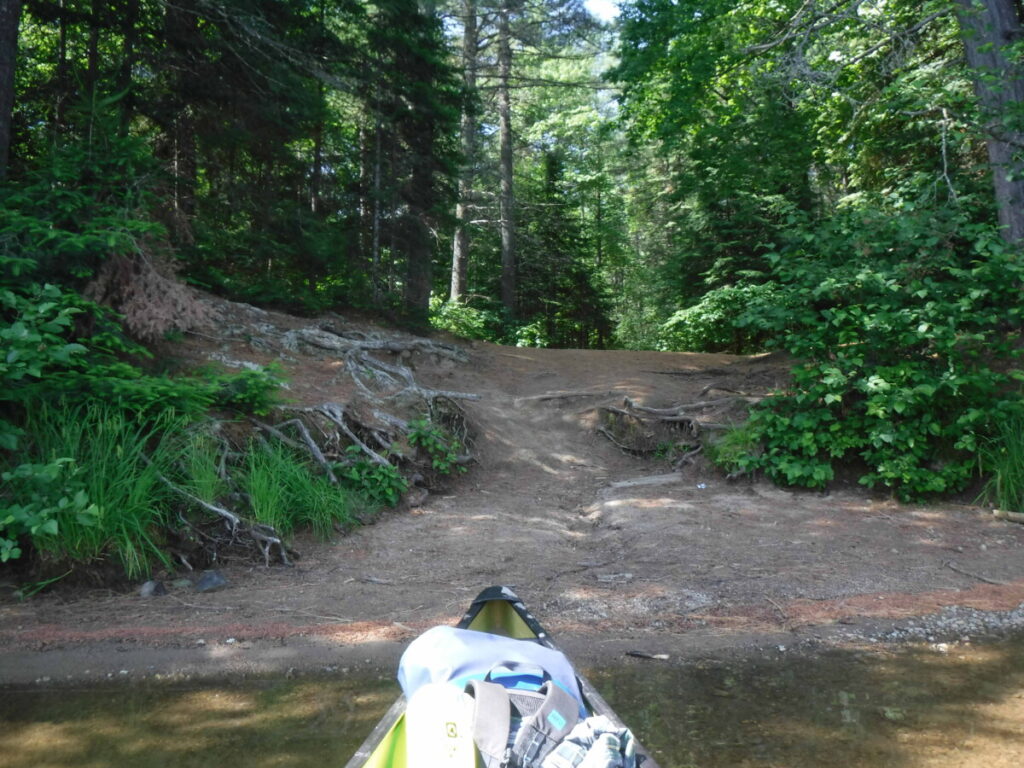
It’s early afternoon and I am on Proulx Lake heading for the portage take out. I pass another solo canoeist on his way to Big Crow Lake and beyond, also using a kayak paddle in a solo canoe. After pausing for a snack at the portage I load up the canoe pack and begin the trek to the pond. About halfway a man carrying a canoe comes toward me.
“Hi there” I say as he passes
No reply.
Oh well, he’s probably tired or preoccupied with his carry, or maybe he’s just not sociable. A few minutes later young girl comes along with a pack, at least I think it’s a girl, black hair coming out from the bottom of mosquito netting which obscures her face. She says nothing and doesn’t appear to be having a good time, maybe just determined. At the other end I see a boy, early teens I guess, looking at a pile of gear and a kayak. He’s about 5’ 5” with black hair, fair skin, wearing wrap around sunglasses, no hat or mosquito netting. He seems dressed a little more for being “cool” than the bush. The mosquitoes are bad on the trail so I assume he is coated in deet. I try conversation again.
“Where are you heading?”
“Big Crow Lake”
“The cabin?” on a hunch.
“Yes. Are there many mosquitoes?”
“There’s a lot and I met some people who were going to rent the cabin but didn’t because there were too many. Do you have tents?” Maybe that was harsh.
“Yes”, stone faced behind the sunglasses.
“Well if you can always use one the nearby campsites. I stayed in one with a beach you would like, if it comes to that. I’m sure you’ll be OK one way or another. Be sure to look for the moose on the river.” Best to add something positive.
That is all. He picks up a barrel pack that seemed about the size of him, pulls it onto his shoulders and heads off. I delay a bit to have a snack, drink lots of water and then go back in the same direction. I see him sitting beside the trail next to the barrel pack. He sees me coming, looks up at me, gets up, loads the pack and carries on along the trail.
I think to myself “Hey guy I wouldn’t judge you. It could be me sitting to rest. Maybe I’m too old for this shit and you’re too young, but I don’t think so. Were both just right.”
As he gets near the end ahead of me, the girl shows up on her way back, girl for sure, the mosquito netting off. He unloads the barrel and they carry it the rest of the way together each holding one side by the strap. Watching them I am certain they are twins, identical height and build, the same jet back hair. The father, I presume, passes me on his way back to their gear. Soon I am going in his direction as well carrying my canoe, the easiest part of the portage work. I pass him again this time pulling the kayak in a cart.
“Hey that makes it easier. I hear you’re going to the Big Crow cabin. I was talking to the young man back there.”
“Yeh, we are”, smiling
“I told him it’s full of mosquitoes but there are great campsites if you want.” I say
“We’ll open it up and fumigate. It’ll be OK.”
“I guess so. Have a good trip”
I can’t help imagining who they are and their arrival at the cabin. Is he a father with his kids on a bonding trip? Where’s mom? Divorced dad bonding? While I am inventing different stories and almost at the end of my carry, the girl reappears carrying what looks like a small folding table in a case and some other items, all askew in her arms. I set down the canoe near the water and watch her disappear down the trail. There is still a disorganized pile of stuff waiting for them to carry. I settle on the divorced dad bonding story: he camps, they don’t, they live with mom, he convinces them this will be great, they bring everything they think they can’t live without, they are staying silent during a mosquito infected portage, they are twins and don’t have to speak to know what each other is thinking, “When will this be over?”. At the end of the day they will arrive at the cabin which is such a poor location for sun and mosquitoes that two experienced canoeists who paid for it quickly found a campsite, as would I. I leave it to you to finish – stoic acceptance and togetherness swatting mosquitoes? Melt down and move to a campsite? I hope for them a story arc with challenges, maybe a bit of drama, and a happy ending.
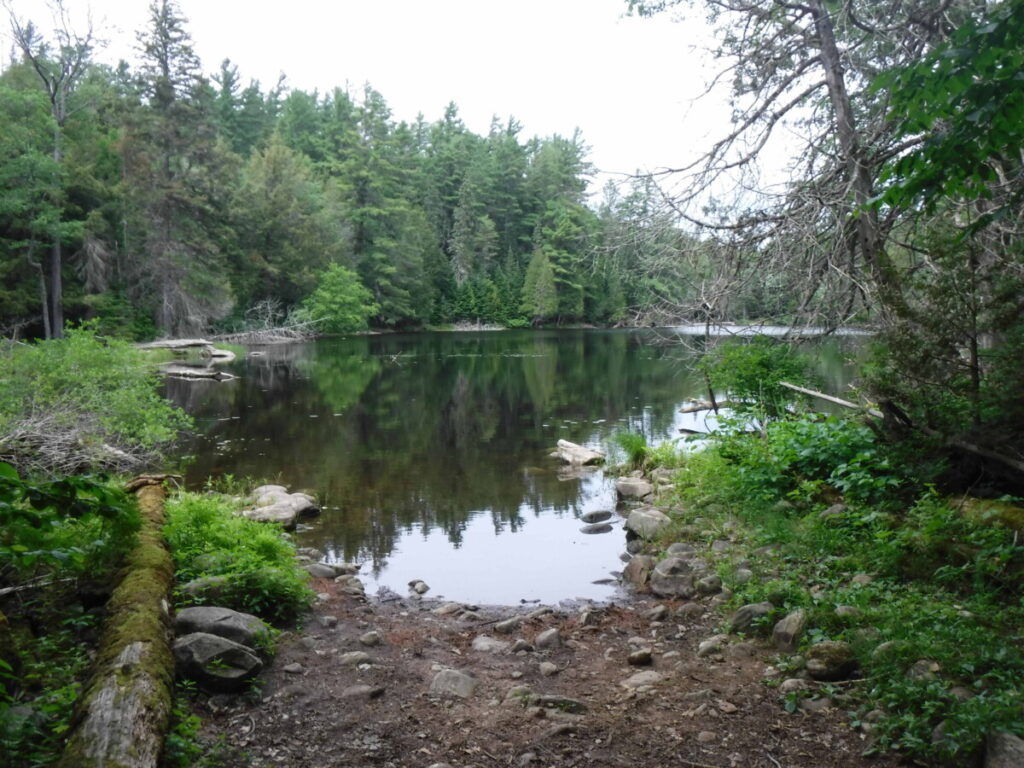
As for me, the end of my trip is in sight. The campsite I used on the way in is vacant and after a short paddle I am there. That night I wake up to the noise of the wind blowing hard through the trees. The tent being secure, I go back to sleep, knowing I can get up late because the water taxi is coming at 11:30 am.
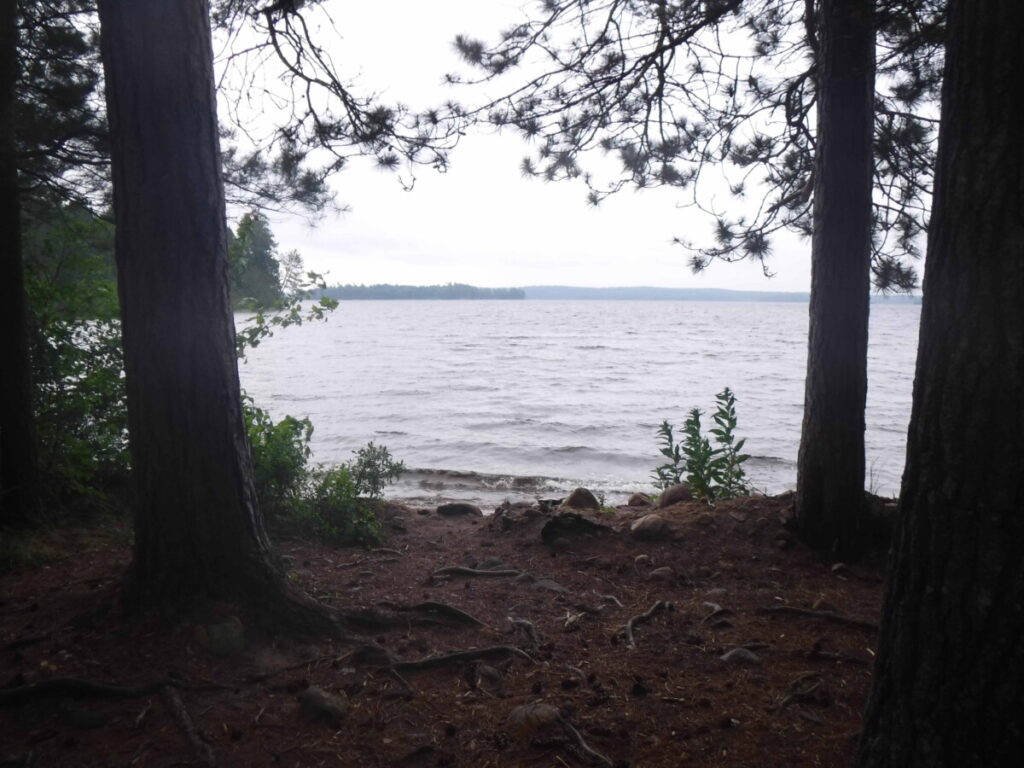
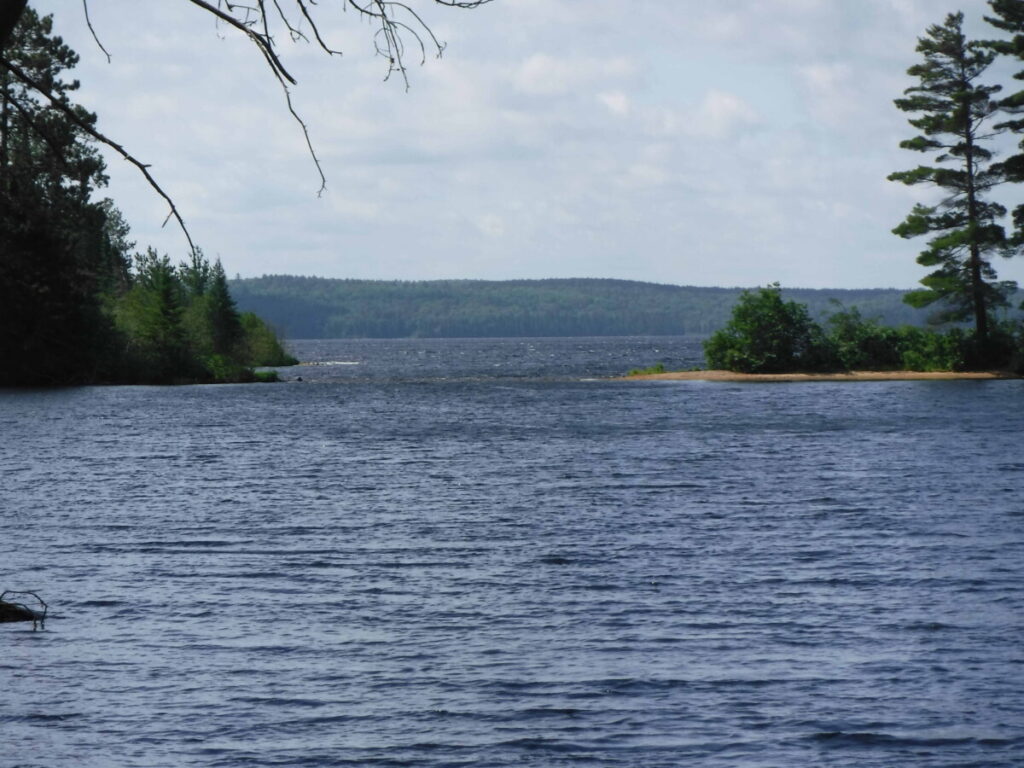
In the morning the waves on Lake Opeongo are getting high, the wind blowing onshore. The back of the campsite has access to the protected inlet where the water taxi dock is located, allowing me to put in there and get to the dock after a short paddle on calm water.
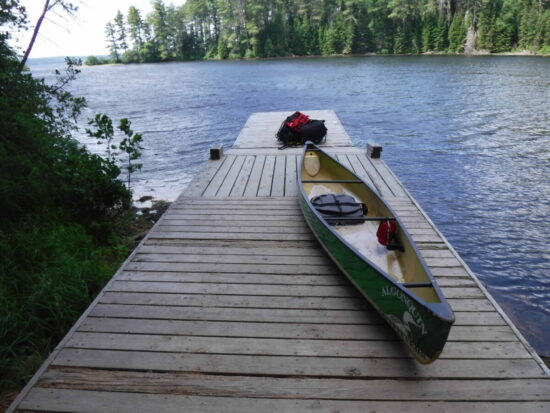
The water taxi arrives right on time. Soon I am having a bumpy wet ride back to Algonquin Outfitters, reminding me that Lake Opeongo can be rough and challenging for canoeing.
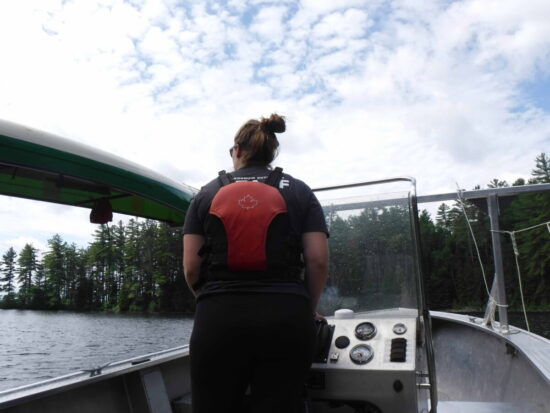
Unloaded at the AO dock I buy and relax with a Dr. Pepper (I like Dr. Pepper). It’s been a good trip, a sequence of tasks to keep it interesting and give me that nice feeling of small accomplishments. Recounting the trip later I will tell my family that a 1 km portage is about my limit. “That’s what you said about the other portages.”, Wendy, my niece replies.
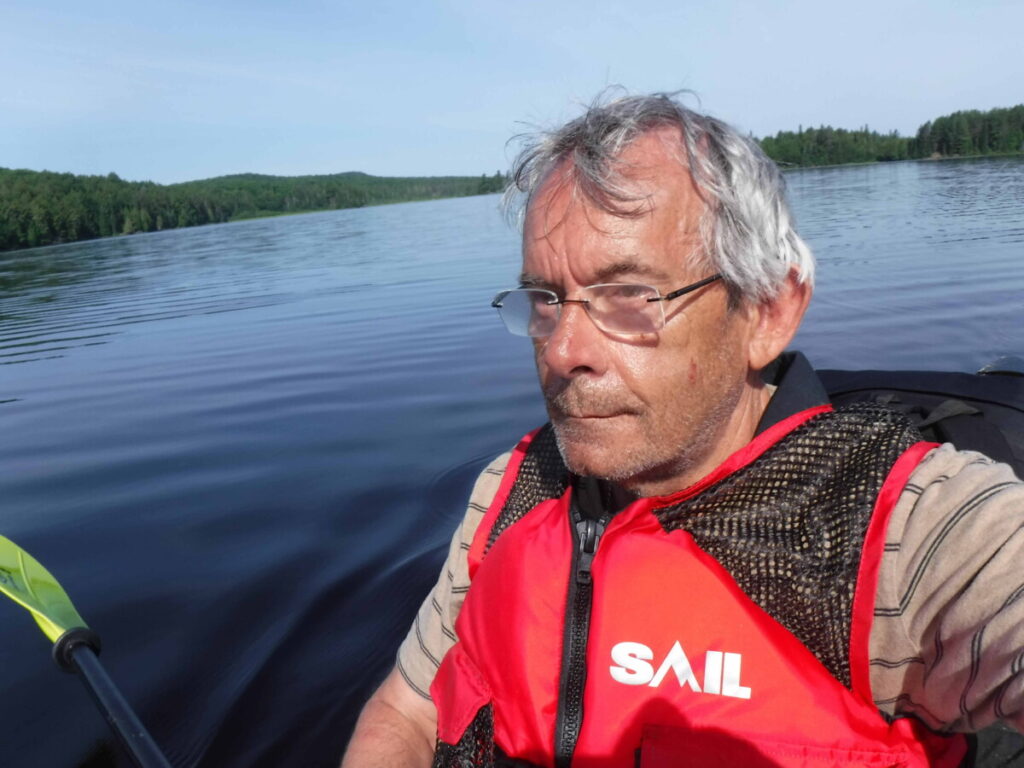
[1] More precisely, Elliott defined work as the exercise of judgement and discretion in order to carry out a TASK – defined as an assignment to produce an output of specified quantity and quality within a given time and with allocated resources, for a given purpose (context) and within prescribed limits of action and behaviour (policies, procedures etc.)
[2] Read about the history of fire towers in Ontario http://ontarioftl.bravehost.com/
[3] As soon as I write this, I am off on an internet search to see what I can find. First, I find in the Canadian Encyclopedia “All are edible and were an important emergency food for Aboriginal peoples, the rhizome being boiled, baked or dried, and the seeds roasted and ground into a highly nutritious flour. The root, because of its astringent, antiseptic and demulcent properties, was used externally for healing sores and internally for inflammation and dysentery.”
Somehow, I get Indigenous Corporate Training Inc. Then I stumble into “How Canada’s Cult of the Noble Savage Harms Its Indigenous Peoples” https://quillette.com/2018/04/22/canadas-cult-noble-savage-harms-indigenous-peoples/ which leads me to bookmark https://quillette.com/ the site in which the article appears, for future reading. I agree with most of what the article’s author says. Being an atheist I feel the same about Indigenous spiritual ceremonies as the sprinkling of holy water, nice fairy tale stuff. In the stream of reports over the years the absence deep analysis or recommendations on the economics of Indigenous Nations is striking. Until that happens and there is real follow through, I look at white folks’ entrancement with Indigenous spirituality cynically. There is no contradiction between my opinion and my conviction that Indigenous peoples have a perspective and experience worthy of everyone’s attention.
When I go to my fitness club I notice that almost everyone uses the handicap push-button to open the doors. Really? – at a fitness club?